https://www.blackgate.com/
Eleven Years of Monday Mornings with Bob
Wow. Eleven years ago today, on March 10, 2014, I became an official Black Gate blogger. The Public Life of Sherlock Holmes kicked off a three year run, bringing a mystery presence every Monday morning. I roamed off topic a bit – but NOTHING like I do now. I mean, did you read last week’s baseball post?
Encouraged by my buddy William Patrick Maynard (an established Black Gater), I went from some uknown guy commenting on other people’s posts, to a moderately interesting weekly columnist. And every World Fantasy Award-winning website, with an amazing roster of bloggers, needs a mystery column, right???
I talked about joining Black Gate in my chronicle of what passes for my writing career: Ya Gotta Ask.
And So It Began
By my count, I have written 510 posts here at Black Gate. That doesn’t include those posts I’ve hoodwinked folks…I mean, ones written by my gracious and talented friends. Discovering Robert E. Howard, Hither Came Conan, Talking Tolkien, and A (Black) Gat in the Hand have included some FANTASTIC stuff from others, and I’m very grateful to everyone who has used my Monday morning slot to make Black Gate even better.
I average about 1,000 words a post, and I frequently go over; I don’t go much under that (I write like I talk…). So, It’s not unreasonable to say I’ve written a half a million words here at Black Gate, over the past eleven years.
It’s been a fantastic ride, and I’ve gotten to write extensively about Sherlock Holmes, Robert E. Howard, Nero Wolfe, John D. MacDonald, Douglas Adams, Humphrey Bogart, RPGs and gaming, TV shows and movies, hardboiled Pulp, and pretty much anything else I like. I’m very ‘Squirrel!’.
I’ve created some regular features, such as What I’ve Been Watching, What I’ve Been Reading, and What I’ve Been Listening To (audiobooks).
Hither Come Came Conan will always be one of the proudest achievements of my writing career. And I honestly think if I could find out how, A (Black) Gat in the Hand should win some kind of mystery award.
I’ve tried to add new multi-contributor series’. I haven’t managed to pull one off for Solomon Kane, or John D. MacDonald, or Columbo, or Star Trek. But I haven’t necessarily given up yet. And I’m sure more will come to mind.
I have grown as a writer in many ways, in my eleven years at Black Gate. I know I’m a better blogger than when I started. Not that that would have been hard to do…
I did a 24? in 42 podcast interview with Rogue Blades’ Jason Waltz, which just dropped last week. It’s the topic of next week’s post.
When he threw me a curveball with the first question (‘What color do you write in?’), I ended up talking about engagement. I write about things I’m interested in. I rarely write negative columns. I don’t wanna spend a thousand words bitching about something I don’t like (I’ve got Facebook and Reddit for that). I will be critical, sure. But if I hate the latest ‘whatever it is,’ I’m gonna find something else to write about.
I wanna share things I’m interested in. I know some folks have gone on to check out topics I’ve talked about. My annual summer Pulp series has been good for that. And I like when people comment. It means I made some kind of connection. I try to reply to every comment, and I think I’m about 98%. Engagement.
I hope when somebody reads my Monday morning post, they enjoyed it. But more, I hope it resonated somehow. I’ve learned things, and gotten recommendations, from the comments. Engagement.
BG head honcho John O’Neil praised my stuff by saying I try to educate people. That’s part of me sharing stuff I enjoy. If there was a Norbert Davis Appreciation Society, I would be the president. So, I’ve written about the under-appreciated Black Mask Boy, several times. I’ve written a lot about Nero Wolfe, John D. MacDonald, and Terry Pratchett. They are three of my favorite writers, and I want to share with readers here. It’s obvious I’m a huge Douglas Adams fan, if you do a search on the site.
And I’ve certainly espoused my love of Robert E. Howard here at Black Gate.
I joke that I’ll keep doing a weekly column for as long as I can get around the firewall.
My life has changed a lot since I started this column. Divorce, moved, changed jobs (there was some kind of Pandemic, I hear…). But I have averaged 46 essays a year, for 11 years. And it would be many more, if I didn’t conned folks into writing some for me, once in awhile.
I talk about other Black Gaters who are Writers with a capital ‘W.’ And I consider myself a lower case ‘w’ writer.
But you know what? I’ve won three awards for my writing (and editing). You can buy my short stories in anthologies on Amazon. I was a regular columnist for a British mystery magazine. And I’m writing intros to books published by Steeger Books – sometimes with a cover mention. I followed Ian Esslemont (I’m a Malazan fan) on a podcast for authors. Ian Esslemont!
And I’ve been doing a thousand words a week, for eleven years. In this age, being a blogger is a valid way to write. I’m finally gonna give myself that capital W.
So, until they tighten up the firewall, I plan on continuing here at Black Gate for a while. Hope you keep finding things you like to read. And leave some comments. Let’s have a discussion.
Let’s engage.
And today’s post title is a nod to a popular memoir by sportswriter Mitch Albom, Tuesdays with Morrie.

Bob Byrne’s ‘A (Black) Gat in the Hand’ made its Black Gate debut in 2018 and has returned every summer since.
His ‘The Public Life of Sherlock Holmes’ column ran every Monday morning at Black Gate from March, 2014 through March, 2017. And he irregularly posts on Rex Stout’s gargantuan detective in ‘Nero Wolfe’s Brownstone.’ He is a member of the Praed Street Irregulars, founded www.SolarPons.com (the only website dedicated to the ‘Sherlock Holmes of Praed Street’).
He organized Black Gate’s award-nominated ‘Discovering Robert E. Howard’ series, as well as the award-winning ‘Hither Came Conan’ series. Which is now part of THE Definitive guide to Conan. He also organized 2023’s ‘Talking Tolkien.’
He has contributed stories to The MX Book of New Sherlock Holmes Stories — Parts III, IV, V, VI, XXI, and XXXIII.
He has written introductions for Steeger Books, and appeared in several magazines, including Black Mask, Sherlock Holmes Mystery Magazine, The Strand Magazine, and Sherlock Magazine.
One of the Finest Achievements of Heroic Fantasy in the 20th Century: Dilvish, the Damned by Roger Zelazny
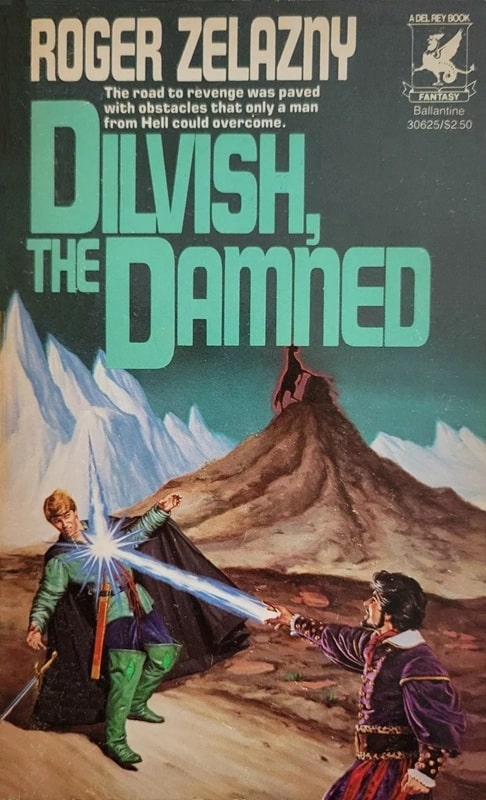
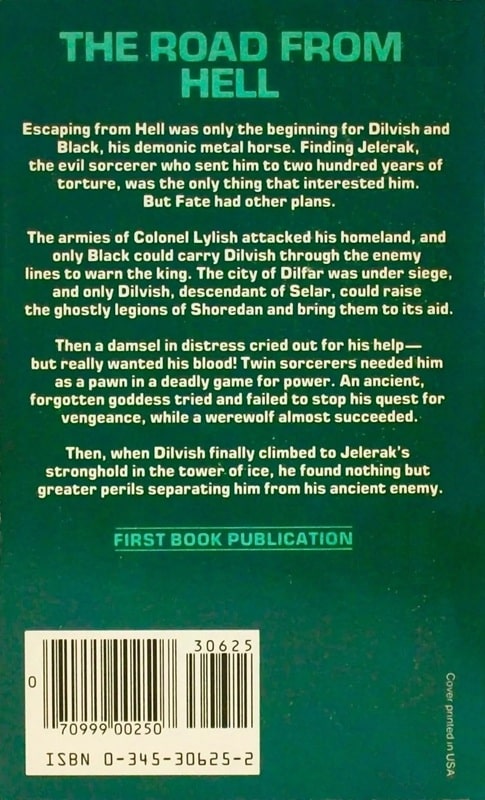
Dilvish, the Damned (Del Rey, November 1982). Cover by Michael Herring
Roger Zelazny was unquestionably one of the great American fantasists of the 20th century. That’s not to say he was perfect. His woman characters were often 2-dimensional, and he paired an unwillingness to work with an outline (“Trust your demon” was his motto) with a fondness for projects that really needed an outline.
But perfection is boring. Zelazny rarely is. Much of Zelazny’s work is on my always-reread list, anyway. He had a nifty way of putting things, and in describing the Amber series he brilliantly expressed the kind of fiction I love best and have often tried to write: “philosophic romance, shot through with elements of horror and morbidity.” Philoromhorrmorbpunk. That’s my genre. Or you could just say sword-and-sorcery.
Some people doubt whether Zelazny counts as a sword-and-sorcery writer, but he didn’t doubt it. He described not only the Corwin novels but also big chunks of Lord of Light as sword-and-sorcery. Some people think that a story only counts as S&S if it has a Clonan at its center, but as far as I’m concerned, if you’ve got an outsider hero on a personal mission in a landscape of magical adventure, and there are swords or other edged weapons, you’ve got sword-and-sorcery.
It doesn’t matter if it’s set in the deep future (e.g. Vance’s stories of the Dying Earth), or in an imaginary past (e.g. REH’s pioneering stories about Solomon Kane, Kull, Conan etc, but also C.L. Moore’s Jirel of Joiry and Cabell’s tales of Poictesme), or another world (e.g. Leiber’s Fafhrd and the Gray Mouser series).
And, anyway, Zelazny obviously counts as a sword-and-sorcery writer because of the Dilvish series. In some ways, it’s one of the finest achievements of heroic fantasy in the 20th century. In some ways, not. Details (a lot of them) ahead.
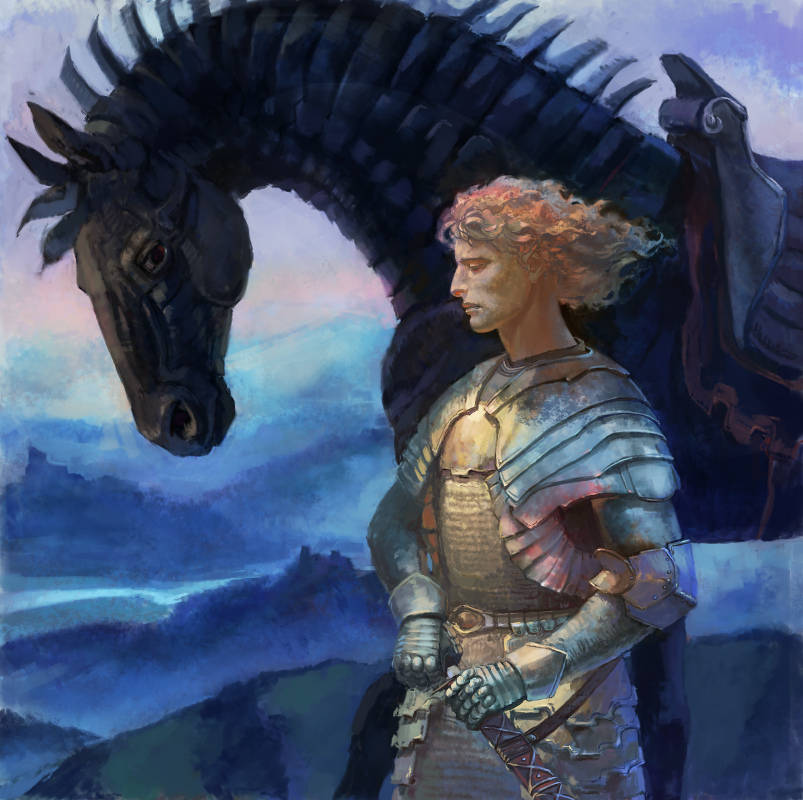 “Dilvish and Black,” fan art by Olga Sluchanko. Dilvish never had a cover painting this good in his damned life.
“Dilvish and Black,” fan art by Olga Sluchanko. Dilvish never had a cover painting this good in his damned life.
Dilvish, a.k.a. Dilvish the Damned, a.k.a. the Colonel of the East, first appeared in Fantastic under the guiding light of Cele Goldsmith, one of the great sf/f editors. After Goldsmith left the helm of Fantastic and Amazing, Zelazny continued to appear in those magazines, until he fell out with their new owner, Sol Cohen.
From that point Dilvish went into exile, the condition most natural for s&s heroes. He made appearances in a fanzine here, a small-press publication there. Zelazny’s hazy plan was to bring out a volume of Dilvish stories “to culminate in a possible novel, Nine Black Doves.” (Letter from Zelazny, 1965, quoted in the afterword to “Thelinde’s Song” in Power & Light.) When the Dilvish collection ultimately appeared from Del Rey in 1982, it was called Dilvish the Damned and it was paired with a booklength Dilvish adventure, The Changing Land.
A real golden age for Dilvish fans (which I had been since reading “The Bells of Shoredan” in a back-issue of Fantastic sometime in the mid-70s).
Or: maybe not.
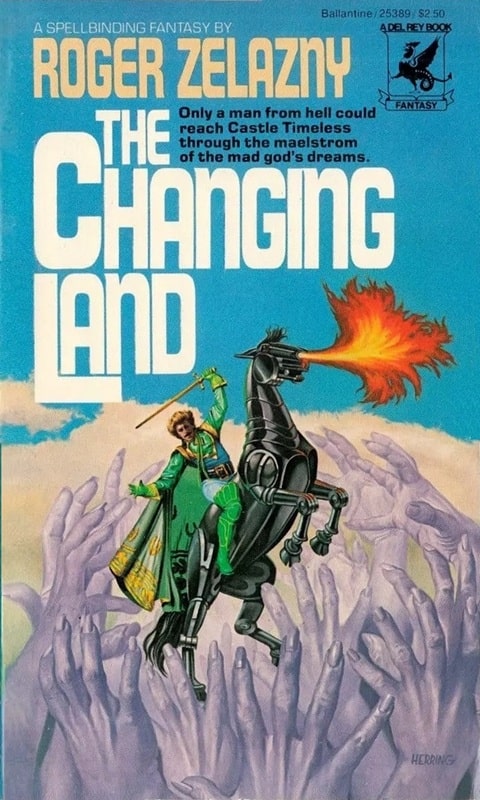
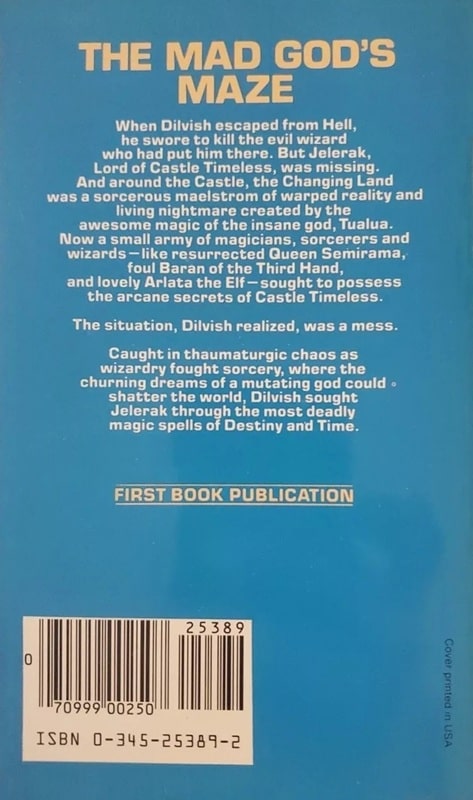
The Changing Land (Del Rey, April 1981). Cover by Michael Herring
I didn’t glom onto these books as soon as they were published; I’d been drifting away from buying books as my life became nomadic (and chaotic) in my early 20s. When I did finally get hold of the volumes I was, to say the least, underwhelmed. I wasn’t crazy about the covers, for one thing. Michael Herring is a talented artist, but I like his work better for sf; these covers are kind of Brothers-Hildebrandtish. (From some, that would be praise, but not from me. De gustibus non disputandum.)
I also didn’t like the titles: Nine Black Doves is weird and evocative; Dilvish the Damned and The Changing Land are blunt and dull declarations, like a can of peas with a generic black-and-white label PEAS.
But a book by Zelazny is a book by Zelazny, so I bought both paperbacks when I had a chance… and was not crazy about them.
“Even Homer nods,” I said to myself, and put them in a box somewhere.
When NESFA Press, that beacon of glory in sf/f publishing, produced its monumental series collecting all of Zelazny’s short fiction (Grubbs, Kovacs, and Crimmins ed.), of course I seized on the volumes as soon as I could, read them through, and loved them furiously.
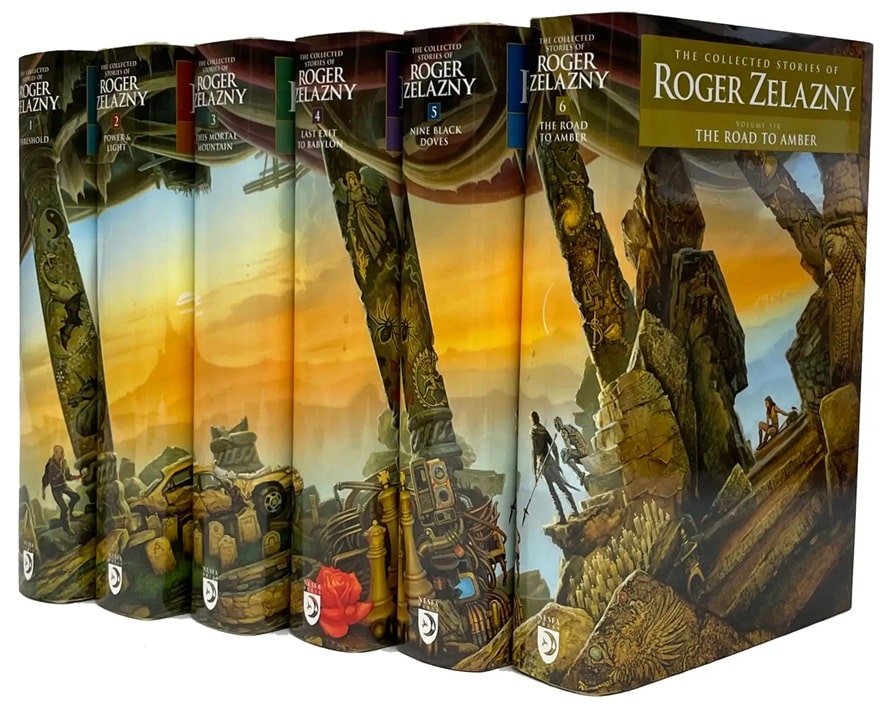 The Collected Stories of Roger Zelazny, all six volumes (NESFA Press, February – December, 2009). Covers by Michael Whelan
The Collected Stories of Roger Zelazny, all six volumes (NESFA Press, February – December, 2009). Covers by Michael Whelan
There were expected and unexpected pleasures in these volumes, but one of the surprises was how much I liked some of the Dilvish stories, tarnished in my fading memory by that 80s-era read. “I should reread the whole set of Dilvish stories together sometime,” I thought.
That was fifteen years ago, so maybe it’s time.
My executive summary, in case you don’t have the patience to read through these notes, is that the Dilvish stories contain some of Zelazny’s best writing, and some of his worst. My initial, uneasy thought was that the early stories were good and the later stories were bad, but that turned out to be too simplistic; one of the last Dilvish stories he wrote is maybe the single best thing in the two Dilvish books.
I reread the stories in the electronic version of the NESFA Collected Stories, which I recommend even more strongly than the original edition, because the editors have continued to revise and proofread the books. The design of the collections is to include the stories in the order they were composed, to the extent that can be ascertained, but they bend that rule when one story was written to provide backstory for another. (Which is exactly the right attitude toward rules. Rules should be governed by intelligence, not vice versa.)
Is Dilvish the Damned a novel or a collection of stories? I suppose I could waive the question, since I’m rereading the stories individually. But it’s a live question for work like this — a series of connected stories read as a whole. Lots of people call these things “fix-ups,” because that’s what Van Vogt called it when he smashed the bizarrely square pegs of his 1940s stories into the boring round holes of his 1950s paperback originals.
I don’t like the term because I hate Van Vogt’s fix-ups, and I also think that the best examples of this form (e.g. Leiber’s F&G volumes for Ace, or the various collections of C.L. Moore’s Jirel and Northwest Smith stories, or Howard Andrew Jones’ Hanuvar novels) don’t replicate Van Vogt’s mistakes: they respect the original stories, even when they create connective tissue to string the stories together. I call this kind of thing an episodic novel, and keep hoping that the term will catch on.
Whatever this thing is, here’s what I thought of it. (YMMV; de gustibus non disputandum; objects in mirror may be closer than they appear; etc.) This is already getting to be pretty long, so I’ll defer my thoughts about The Changing Land to another time (if ever).
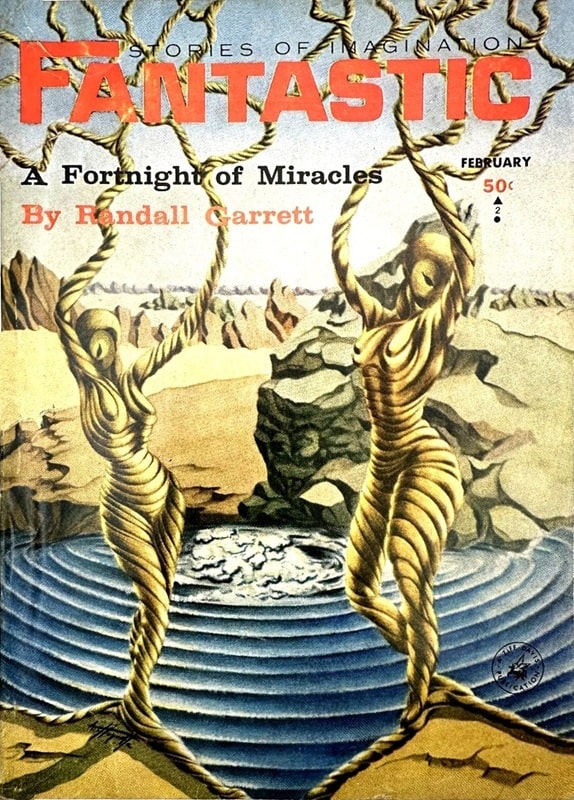 Fantastic Stories of Imagination, February 1965, containing the first Dilvish story, “Passage to Dilfar.” Cover by Heidi Coquette
1. “Passage to Dilfar” (1965, approx 2,000 words)
Fantastic Stories of Imagination, February 1965, containing the first Dilvish story, “Passage to Dilfar.” Cover by Heidi Coquette
1. “Passage to Dilfar” (1965, approx 2,000 words)
We meet Dilvish, already in progress, riding a horse made of steel named Black, “for whom it was said the Colonel of the East had bartered a part of his soul.” They are fleeing from a place called Portaroy, pursued by horseman sent by Lylish, Colonel of the West. (Dilvish himself is the aforesaid Colonel of the East.) Through hazards mundane and magical, they make their way to Dilfar, in the hopes that this city will withstand the onslaught of Lylish’s armies.
This is a very short story, approx 2,000 words, but it packs a strong, fantastical punch. It suggests a world far larger than anything it depicts. Zelazny claimed that he never intended to write a sequel, but Editor Goldsmith said it “begs for a series”, so Zelazny obliged. In fact, he started to plan a series of adventures, maybe to be capped with a novel called Nine Black Doves.
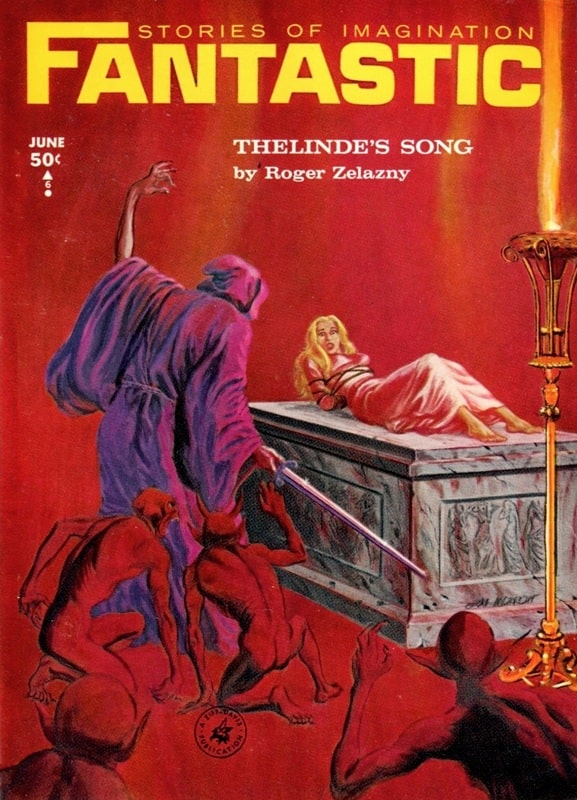 Fantastic Stories of Imagination, June 1965. Cover by Gray Morrow, illustrating “Thelinde’s Song.”
2. “Thelinde’s Song” (1965; approx 2,800 words)
Fantastic Stories of Imagination, June 1965. Cover by Gray Morrow, illustrating “Thelinde’s Song.”
2. “Thelinde’s Song” (1965; approx 2,800 words)
If you’re expecting an epic account of the defense of Dilfar against the slavering hordes of the Colonel of the West, that’s not where Zelazny is headed. There was such a defense, and it’s mentioned in passing here, including Dilvish’s final encounter with the warrior he met and bested (sort of) in the previous story.
But Dilvish himself doesn’t even appear as a character in this story, which is a conversation between the titular Thelinde and her witch-mother Mildin. Mildin explains the half-elven background of Dilvish, his victory in defending Portaroy in the old time, his magic green elf-boots, and his enmity with the evil and powerful wizard Jelerak.
Jelerak was using evil magic to evilly draw the youth out of a maiden; Dilvish tried to disrupt the ceremony; Jelerak changed Dilvish’s body to a statue and sent his soul to Hell. There Dilvish suffered for centuries, but now he’s escaped with a demonic horse named Black and Jelerak, with all his power, now has something to worry about.
This story isn’t much longer than “Passage to Dilfar.” Where “Passage” was all action, this is all exposition, and at times it seems like Zelazny has a list of things he wants his mouthpiece to talk about (e.g. Dilvish’s green elf-boots, magical equipment which you would think would affect the stories a lot, but usually do not). Still, this quasi-story is vivid and impactful and sketches in details about Dilvish and his world that make them loom even larger in the imagination.
 Fantastic, March 1966, containing “The Bells of Shoredan.” Cover by Frank R. Paul
3. “The Bells of Shoredan” (1966; approx 6,200 words)
Fantastic, March 1966, containing “The Bells of Shoredan.” Cover by Frank R. Paul
3. “The Bells of Shoredan” (1966; approx 6,200 words)
In this much longer story, Dilvish goes to the ruined city of Shoredan to ring its bells and summon its legions of the dead to fight against the Colonel of the West. On the way he must confront the ghost of his Elvish forebear Selar and the demon who tortured Dilvish in Hell, Cal-den. On the way he acquires the invisible blade of Selar.
If you like this kind of thing, you will like this story a lot. A sword-and-sorcery classic. If you read only one Dilvish story, it should be this one.
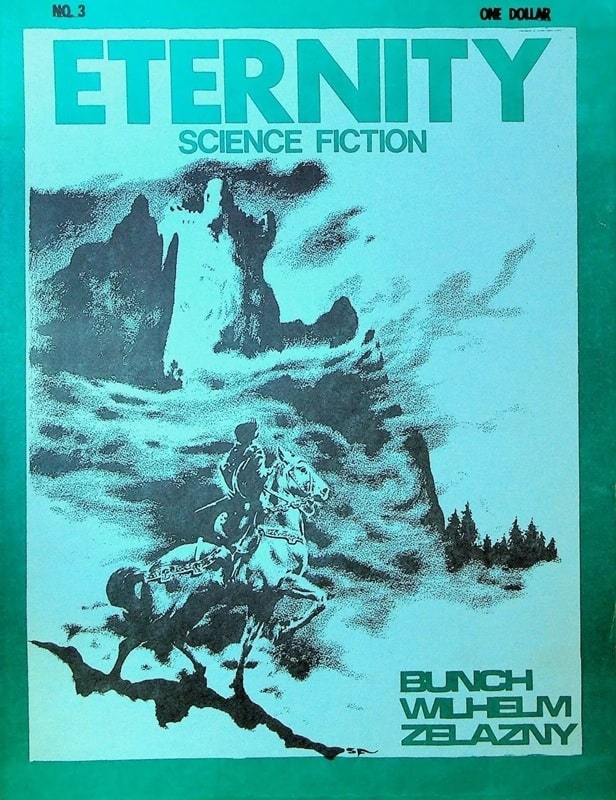 Eternity Science Fiction #3, 1974, containing “A Knight for Merytha.” Cover by Stephen Fabian
4. “A Knight for Merytha” (1967; approx 3,000 words)
Eternity Science Fiction #3, 1974, containing “A Knight for Merytha.” Cover by Stephen Fabian
4. “A Knight for Merytha” (1967; approx 3,000 words)
Again, where an epic fantasist would zig (i.e. follow up the previous story by describing the battle of the dead against Lylish), Zelazny zags. We catch up with Dilvish for a solo adventure as he travels alone with his steel horse and demonic sidekick Black.
And, if you were expecting more progress on the Jelerak plotline, that doesn’t happen either. Zelazny later described Dilvish as a man obsessed with revenge, but that isn’t clear in the actual stories. Jelerak isn’t mentioned at all in the first Dilvish story, or in this one, where he is scouting ahead of the “doomed army” he summoned to defeat Lylish.
Like a knight sans peur et sans reproche, Dilvish responds to the cry of a woman in distress (even though his wily steed warns him against it). If you think you know where this story is going, you probably do, but it’s a solid fantasy adventure involving a vampire. Sword-and-sorcery meets Hammer Horror. Cast Ingrid Pitt as Merytha and you’ve got it.
One particular detail that struck me about this story — more a worldmaking question than an issue with the story itself — is the use of the invisible sword of Selar (which Zelazny acquired in “Shoredan”). It’s hard to see (wokka-wokka-wokka) how such a sword would actually be useful. No doubt there’s a surprise factor when you approach your foe armed, but apparently empty handed. But how do you fight with it? You, as much as your opponent, need to know where your point is so you can stab him with it. There’s a great series of movies about a blind swordsman Zatoichi, but on film that stuff works because your eye sees it and the mind accepts it.
It wasn’t clear to me what skills Dilvish had or developed to make use of the invisible blade. Zelazny was a fencer and pursued a number of different martial arts and he may have had ideas about it, but the invisible blade disappears after this story, along with Lylish and the defense of Dilfar.
“A Knight for Merytha” originally appeared in a fanzine and was the last of the Dilvish stories for a while. Zelazny wasn’t sending his work to Fantastic or Amazing anymore, due to his quarrel with their new publisher, and when he got the sword-and-sorcery itch he would write about other characters — Sam the Buddha and his pseudo-divine frenemies, or Corwin of Amber and his quasi-divine familenemies.
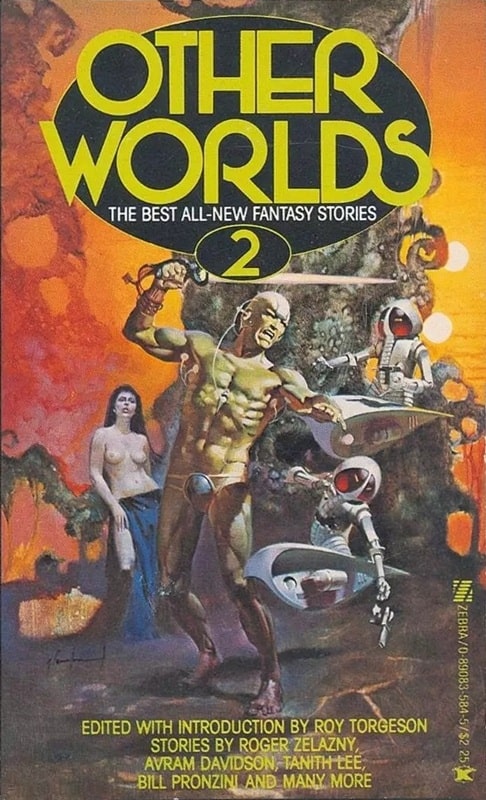
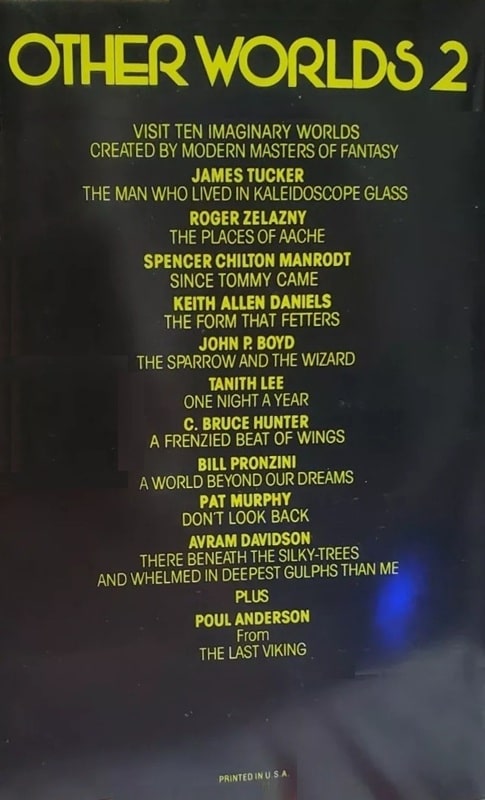
Other Worlds 2, edited by Roy Torgeson, containing
“The Places of Aache” (Zebra, January 1980). Cover by Jordi Penalva
We again find Dilvish wandering through strange lands alone (except for his faithful Black). He runs into a would-be robber who’s disconcerted by Dilvish’s militant response. The robber thinks he has protection from a local goddess, who authorizes his career of crime, but that doesn’t save him from Dilvish’s (non-invisible) sword.
Dilvish goes on to confront the sinister priest of the goddess, and the goddess herself. She’s a monstrous, many-limbed creature, and at this point you might expect an epic battle. What actually happens is that Aache (the monster-goddess) and Dilvish talk, and he figures out a solution for her particular set of problems. But there’s a menace lurking that neither of them expect, and the story ends on a tragic note.
This is a solid sword-and-sorcery adventure where the hero displays intelligence and compassion as well as ruthlessness and fighting skill. (The conversation between Dilvish and Rogis the robber is classic, Hammett-level tough-guy dialogue.)
There’s no mention of Jelerak here; there’s no mention of Lylish and the military conflict over Portaroy, Dilfar, etc.
6. “A City Divided” (1982)Originally published in Dilvish, the Damned.
We again find Dilvish wandering through strange lands alone (except for his faithful Black). (Yes I did just cut-and-paste that from the section above.) While travelling in the North Country, Dilvish falls into a city-sized trap, where a magical game is being played between two sorcerers. Dilvish’s fighting ability and Black’s infernal strength can’t get them out of this one, so Dilvish turns to magic — one of the twelve Awful Sayings that he learned in Hell.
There’s some good stuff here: conversations between Dilvish and Black, the depth of infernal lore suggested by a few strategic details, the conversation between Dilvish and the sorcerer Strodd at the end of the story.
But there’s also a lot of narrative busywork as Dilvish and Black try to negotiate the maze inside the city. Mazes are weird and perplexing when you’re in them, and that kind of experience films well (I’m thinking of a couple of very different scenes in The Stand and in Sleuth), but I don’t think it works well in fiction. Anyway, it didn’t work for me in this fiction.
The conflict with Lylish is mentioned (as completed in the past), and Jelerak is discussed at the end, including the place Dilvish expects to find him, the Tower of Ice. So there’s at least some attempt to fit this story into the over-arching plotline of the series.
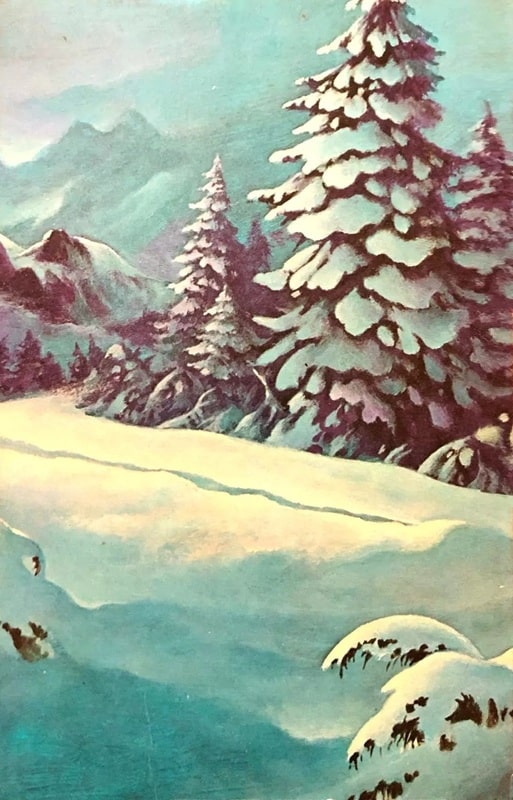

Whispers 2, October 1979, edited by Stuart David Schiff, containing “The White Beast.” Cover by Steve Fabian
We again find Dilvish wandering through strange lands alone (except for his faithful Black). My cut-and-paste notwithstanding, I don’t object to this generic type of beginning. Zelazny varies the descriptions to keep the thing interesting, and a sword-and-sorcery hero is usually a loner or at least an outsider. In this story, for instance, Dilvish’s name doesn’t appear until three-quarters of the way through this very short (approx, 1,200 words) story. He’s just described externally.
Now Dilvish is deep in the north, in a landscape of snow and ice, and he is being pursued through the icy wasteland by a white werebeast. Dilvish is not the guy to back away from a fight, but instead of killing the monster he offers to split his food with it. They engage in conversation and discover they have a common enemy.
This is only an episode, leading to the longest Dilvish story (except for the novel, The Changing Land), but it’s vivid and haunting.
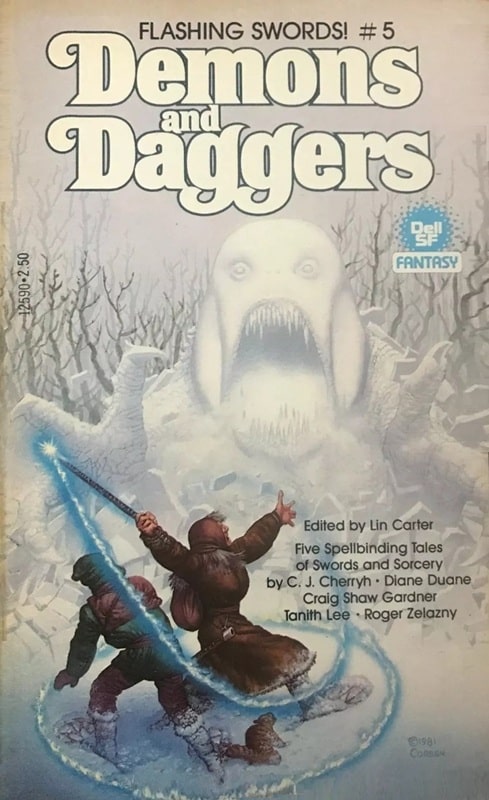
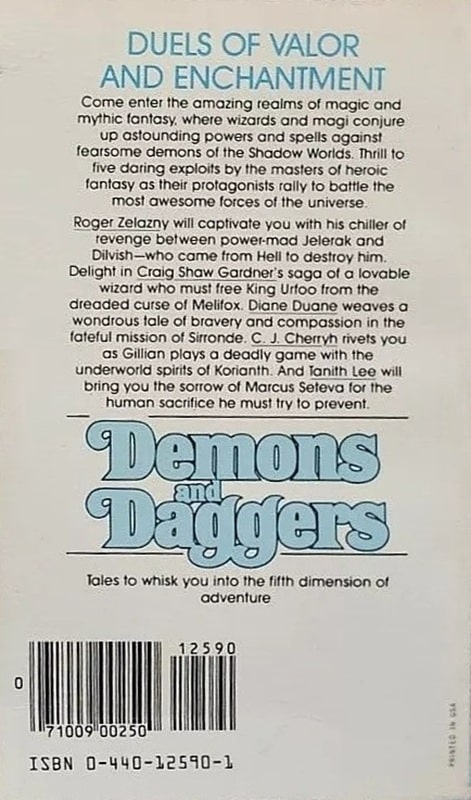
Flashing Swords! #5: Demons and Dagger, edited by Lin Carter,
containing “Tower of Ice” (Dell, December 1981). Cover by Richard Corben
We again find Dilvish wandering through strange lands alone (except for his faithful Black). But this is no mere random episode: Dilvish has finally reached one of Jelerak’s strongholds and hopes that he can have his long-sought-for confrontation with this Evil Wizard Who Is Evil… if he can just get into the damned place.
This is the longest of the Dilvish stories (except for the novel, The Changing Land). It was one that Zelazny had long planned on writing. And it is, in my view, the worst of the Dilvish stories (except for the novel, The Changing Land).
What went wrong? (If you love this story, you may be screaming “NOTHING!” so hard at your device that the screen cracks. But don’t do that. De gustibus non disputandum. And you can always write your own review.)
For one thing, this story was a rush job, and it shows.
The stage was finally set [for the novella ‘Tower of Ice’]. But I had no intention of carrying things further at that point. I was busy writing the novel Roadmarks and wanted to get on with it. A week after I’d sent off ‘The White Beast,’ though, I received a request from Lin Carter for a 20,000 word Dilvish story for Flashing Swords #5. It seemed like the Finger of Fate. I allowed myself a week and wrote ‘Tower of Ice.’
— Zelazny in Alternities 6 (Summer 1981), quoted in the NESFA collection Last Exit to Babylon (Grubbs, Kovacs, and Crimmins ed.)
There’s a lot of stuff in here: a brother and sister with a sorcerous connection, a wizard with multiple personalities struggling to control his power and himself, a sorcerer’s apprentice readying himself to confront his evil master in a magical duel to the death, a magic mirror prophesying a doom that grows ever closer, a captive demon, a demented monster in love with a demented witch who commands an army of demented rats. Etc! I say yay to all this. More is more!
Some of these people are the same person, but (significantly) none of them is Dilvish. This is not really his story, although we spend a lot of it following him around. There’s a lot of narrative busywork getting him into the Tower of Ice, and then a lot more to get him out, without fighting Jelerak, even though that nemesis shows up (in non-physical form). Dilvish departs with Reena, the sister of Ridley, Jelerak’s rebellious apprentice, and it’s Ridley who fights Jelerak. Jelerak seems to kill him and escape at the end of the story.
The upshot is that Dilvish is back on the road again, now with a female companion. The whole novella is just a narrative cul-de-sac, where Dilvish goes one way only to come back the way he came. No progress on Dilvish’s quest is made at all, and it’s not a satisfying episode (unlike many that preceded it and some that follow) because Dilvish doesn’t take any significant action that affects the story.
You never know what might have happened, but if Zelazny had taken more time writing this story, he might have made its diverse elements cohere into something more worth reading.
9. “Devil and the Dancer” (1982, approx 15,000 words)Originally published in Dilvish, the Damned.
We again find Dilvish… Wait a second. No we don’t.
This novelette opens with a witch-priestess named Oele dancing a fiery ritual before the “empty stone-faced altar” of a dying god. This god (whose name she doesn’t know, so she calls him “Devil”) repays her with magical and material benefits. She is his last worshipper, and without her he’ll die (or undergo a transition that is like death to a god). She gained her power from the god by sacrificing her lover to him; now he needs a new sacrifice to maintain his strength. She goes in search for one and will find… Dilvish, the only man who still remembers the name of the dying god.
This is one of the best Dilvish stories. Everything that goes wrong in “Tower of Ice” goes right here. The novelette is stuffed with interesting, distinctive characters: Oele the witch-priestess, her devil-god who needs and hates her, an old man who shall be nameless at this time, an adventurous and temptable ship-captain named Reynar, witchy Reena (who travels with Dilvish but who knows he isn’t for her), and Dilvish himself, who takes crucial action to resolve the Gordian knot of conflicting quests that cross the empty altar of the dying god.
“Devil and the Dancer” is 15,000 words long, with not one wasted. The final brief paragraph is a dagger that stabs deep; the weight of the whole story is behind it.
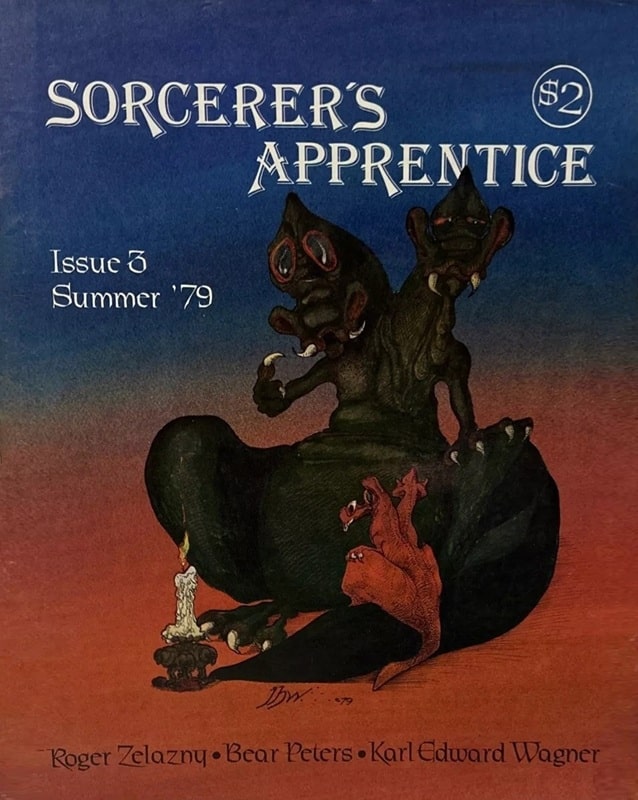 Sorcerer’s Apprentice, Summer 1979, edited by Ken St. Andre, containing “Garden of Blood.” Cover by Joan Hanke-Woods
10. “Garden of Blood” (1979)
Sorcerer’s Apprentice, Summer 1979, edited by Ken St. Andre, containing “Garden of Blood.” Cover by Joan Hanke-Woods
10. “Garden of Blood” (1979)
We again find Dilvish wandering through strange lands alone (except for his faithful Black). (According to the first paragraph, he’s working as a scout for a caravan, but we never see the caravan and it doesn’t affect the course of the story much, if at all.)
The lands are strange to us, but not to him. He’s been over this ground before, before he was trapped for 200 years in hell. He finds himself in the ruins of a town he once knew, named Trelgi. He and Black pass onward to a fair field full of bright flowers, where the town’s ancient stone altar still stands.
Through some combination of magic and narcotics from the flowers (flashback to the poppy scene in The Wizard of Oz), Black is paralyzed and Dilvish finds himself trapped in a dream or vision where he and Black (in human form) fight against the robbers who sacked Trelgi and slew its inhabitants.
A solid adventure-fantasy, well worth reading.
11. “Dilvish the Damned” (1982)Originally published in Dilvish, the Damned.
The last two Dilvish stories (apart from the novel) have something in common that distinguishes them from the others. We find Dilvish working for a living. He may be a somewhat sorcerous person who rides a demonic metal steed, but he apparently can’t pull gold coins out of Black’s ears, or other orifices. I like this, as supplying the grit that s&s needs (Joe McCullough’s great definition of sword-and-sorcery is “Fantasy with dirt.”) But it does put the end of this series on a different, more mundane level than its dreamlike, allusive beginnings.
After getting paid and buying supplies, he sets off for a castle called Timeless:
The blind poet and seer, Olgric, had told him that he would find there the thing that he sought.
But before Dilvish gets there, a guy on the road tries to rob him. The robber is pretty inept, and Dilvish in the end is inclined to let him go, but he tries to impale himself on Dilvish’s sword. It turns out that he’s been trying to get Dilvish to kill him. Dilvish is intrigued and, in spite of Black’s warnings, he stops to get the thief’s story.
The thief is named Fly and he is the walking definition of the phrase “mealy mouthed.” (He keeps saying things like “Well, yes and no.”) Dilvish eventually gets his story: he stole a magic belt from a god’s temple; now the adherents of the god are after him, as well as the adherents of a rival god who want the belt for their own purposes.
There’s some wiliness and chasing and fighting and a curse or two but, in the end, Dilvish returns the belt to the god from whom it was stolen, and he and his demonic steed get the hell out of there.
After the story proper, there’s a short coda. The next day, Dilvish is confronted by a young woman who begs for his help. Black warns him not to be taken in, and we’ve actually seen Dilvish tricked this way before (“A Knight for Merytha”).
But Dilvish can’t bring himself to deny a plea for help. ” ‘Damned if you do, damned if you don’t,’ he said, dismounting.” Which is at least kind of an amusing punchline to the series, if not laugh-out-loud funny.
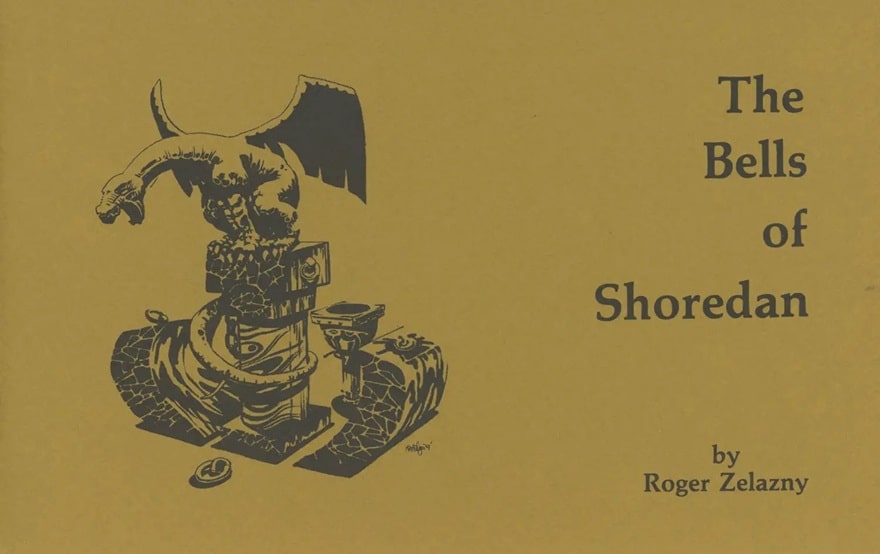 The Bells of Shoredan (Underwood Miller, May 1979). Cover by Matt Gouig
Overview
The Bells of Shoredan (Underwood Miller, May 1979). Cover by Matt Gouig
Overview
The parts of the Dilvish series are greater than the whole. Some stories, I would argue, are essential reading for the heroic fantasy enthusiast (e.g. “Passage to Dilfar”, “The Bells of Shoredan”, “Devil and the Dancer”). Most of the rest are well worth reading (e.g. “The Places of Aache”, or “Garden of Blood”). The weakest and longest story in this series (setting apart The Changing Land for another time) is “Tower of Ice”, and even it has some interesting stuff in it.
But it has nothing that connects it all together. It’s a set of fragments. Zelazny would have it that Dilvish is a man obsessed. He calls him “a humorless monomaniac.” (This from a letter to Carl Yoke, quoted in the afterword to the last Dilvish short story in the NESFA collection Nine Black Doves.) But Dilvish has at least two sets of concerns in the stories: defending Dilfar and other cities of “the East” from Lylish, the Colonel of the West, and also getting revenge on Jelerak, neither of which seem to me to be crazy. And most of the stories don’t involve either one of these goals, or mention them only in passing, undermining any picture of Dilvish as obsessive.
Zelazny knows his character better than anyone else does, obviously, but my point is that he doesn’t create the portrait of a monomaniac in the Dilvish stories that he actually wrote and published. There isn’t that much coherence in them. When Dilvish raises a ghost legion to fight for him in Shoredan, the actual fight he raises them for occurs offstage and is mentioned only in passing. Lylish and Jelerak are supposed to be these big menaces, but Lylish never appears onstage, and Jelerak only occasionally and somewhat unimpressively. Zelazny is careful to introduce us to a sorcerer named Strodd in “A City Divided” and make him indebted to Dilvish… but he’s only mentioned once in passing, later on, and he never appears in a Dilvish story again.
The good stuff in the stories is mostly the incidental stuff along the way. There is no overarching plotline that connects them, any more than there is for Leiber’s stories of Fafhrd and the Gray Mouser or REH’s Conan stories.
And that’s a virtue, not a vice. Zelazny’s great gift as a writer was for brilliant improvisation. These stories would be better if they were presented as a series of fragments from a heroic life, without any pretense of telling a continuous story.
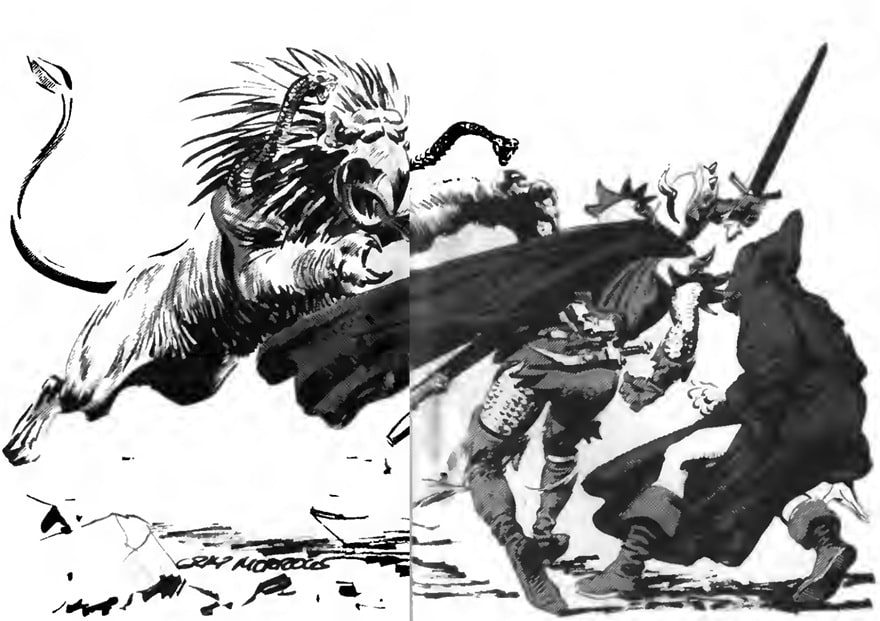 Interior art for “The Bells of Shoredan” by Gray Morrow. From Fantastic Stories, March 1966
Interior art for “The Bells of Shoredan” by Gray Morrow. From Fantastic Stories, March 1966
That was Howard’s idea for the Conan series:
“The average adventurer, telling tales of a wild life at random, seldom follows any ordered plan, but narrates episodes widely separated by space and years as they occur to him.” (From a letter REH wrote in 1936 to P.S. Miller, included in the Lancer/Ace Conan, p.17.)
I’m not saying every s&s writer has to imitate REH forever, but this approach would work better with the Dilvish stories than the pseudo-biography that Zelazny tries to force them into.
The reader who has read this far without dying of boredom deserves some kind of ringing peroration to send them rushing out into the street in search of trouble and fantastic adventure. Unfortunately I don’t have one.
I do have kind of a technical writing observation that, if nothing else, will help you to drift off to sleep in the friendly light from whatever device you’re reading this on.
In most of the Dilvish stories, we get almost nothing of Dilvish’s inner life. We have to deduce what he’s thinking and feeling from his words and actions — the same way we do with the people around us. This is unlike a lot of modern fiction, where we typically get the inner monologue of the viewpoint character. In lots of ways, Dilvish is not our viewpoint character; he is a character we are viewing.
That appeals to me because it’s more like ancient and medieval literature, and it gives him a degree of mystery. The later stories in the series where we get more of Dilvish’s feelings are part of that descent into mundanity, like the mentions of him working for a living. I don’t think that’s bad; it’s just interesting how Zelazny’s approach to the character changed over the nearly-two-decades that he wrote about him.
Now go ye forth into the mysterious vale of night and smite those who must be smitten, even as your heart doth compel ye. (Unless that seems inadvisable for ethical, legal, or practical reasons. Offer void where prohibited.)
Our previous coverage of Dilvish at Black Gate includes:
Dilvish, the Damned by Fletcher Vredenburgh (September 12, 2017)
This article originally appeared at James Enge’s excellent Engeblog on January 23, 2025.
There, Wolves: Part III
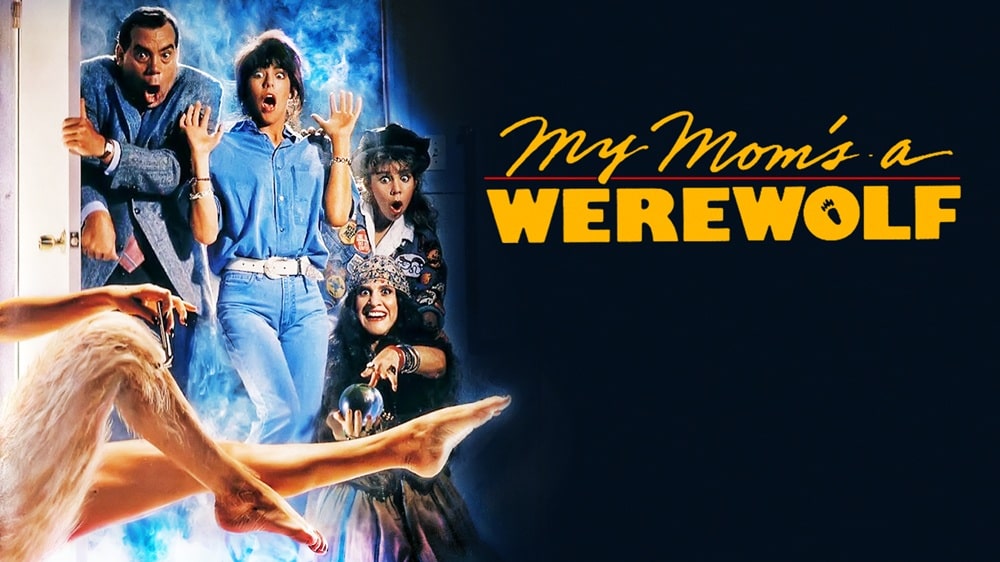 My Mom’s a Werewolf (Crown International Pictures, May 12, 1989)
My Mom’s a Werewolf (Crown International Pictures, May 12, 1989)
A 20 film marathon of werewolf movies I’ve never seen before.
As usual, the films must be free to stream.
I’ve got a bad feeling about this.
My Mom’s a Werewolf (1989) YouTubeMan or beast? Gradual, hairy transformation into rubbish suits.
Howlin’ good time? The 80s are arguably the greatest decade for horror and, perhaps, the much maligned sub-genre of horror comedy, but this one squeaks in at the end hoping to ride some Teen-Wolf coat tails, and it doesn’t quite succeed. The intention is there, everyone gives it their all to a cartoonish level, and John Saxon is awesome, but for me the jokes didn’t always land, and it felt horribly dated.
The film has a similar premise to the OG Fright Night (teen recruits monster nerd friend to combat monster and save family), but it was all a bit too cutesy for my tastes and, despite the promise of a great werewolf at the end, the actual makeups were a bit of a let down. Fun to see Ruth Buzzi again though, looking younger than she did in the 60s.
5/10
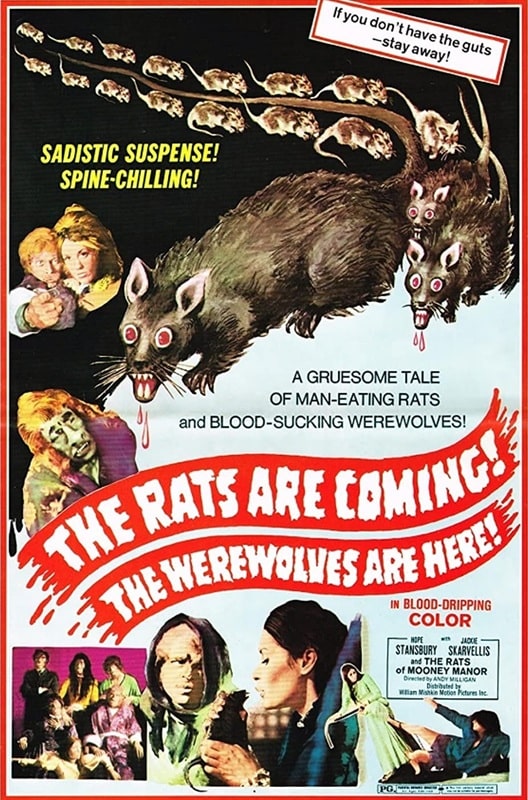
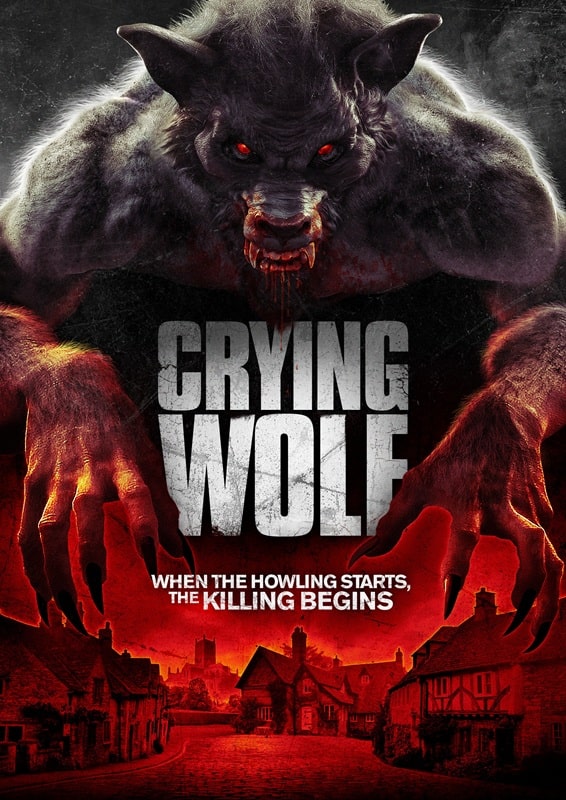
The Rats Are Coming! The Werewolves Are Here! (William Mishkin Motion
Pictures, May 1972) and Crying Wolf (Uncork’d Entertainment, 2015)
Man or beast? Brownface + hairy eyebrow makeups.
Howlin’ good time? This is a film from the notably sleazy mind of Andy Milligan, who once enjoyed stuffing his grindhouse efforts full of sadism and salaciousness. This film, however, is his tamest by far, with nary a whiff of sex or violence (although he does include a ghastly bit of sadistic treatment towards a live mouse, which is unpleasant).
The best thing about this movie is the title, but even the rats are merely a ten-minute distraction, presumably an after-thought, during this dull exercise in miserable family members sitting around moaning about being werewolves. The actual beasts appear at the end, when everyone seemingly turns into one and set upon each other for no good reason. Pretty awful.
3/10
Crying Wolf (2015) TubiMan or beast? CG/gorilla suit hybrids.
Howlin’ good time? Full transparency, I put this one on because Caroline Munro headlines it, but when she disappears after 5 mins, I should have done the same.
This is such an odd film, but not in the charmingly odd sense. Allegedly a comedy, it’s as cutting edge as a Benny Hill sketch but with none of the subtlety, complete with head turn ‘whooshes’ and slide whistles. The thin-as-tissue plot is padded out with flashbacks, and flashbacks within flashbacks, none of which bring anything to the story.
There a couple of fun gore effects, but it’s hampered by some lousy CG and awful werewolf costumes, and the whole affair has been re-dubbed using some lacklustre ADR and one awful American accent. The whole hot mess is narrated by a detective in a pub, and it comes off as a prolonged episode of Garth Merenghi’s Dark Place, but with worse production quality. Terrible.
3/10
 Strippers vs Werewolves (Well Go, April 27, 2012)
Strippers vs Werewolves (2012) Prime
Strippers vs Werewolves (Well Go, April 27, 2012)
Strippers vs Werewolves (2012) Prime
Man or beast? Hairy, humanoid, beast-faced bad boys.
Howlin’ good time? I went into this one expecting the usual crap (having seen Zombies vs Strippers in a moment of weakness a couple of years ago), but was a little surprised by how much I liked it. Don’t get me wrong, it’s still rubbish, released the same year as the superior (but still rubbish) Cockneys vs Zombies, but clearly everyone was having a splendid time, and there were a couple of gags that managed to get a laugh out of me.
It’s a UK production through and through, taking place in Basildon (and finishing in Dagenham!) and full of your stereotypical Essex-types, but I wasn’t ready for the cameos from folks in need of new patios, including Steven Berkoff, Robert England, Martin Kemp, Lysette Anthony and Sarah Douglas (who was the best part of the film). It’s rude, slightly violent and full of knockers, which is to be expected, daft as a brush, but still more fun than many of the films I’ve watched during this project and I didn’t hate the werewolf designs.
Recommended for people who like Alan ‘Brick Top’ Ford and bosoms.
6/10
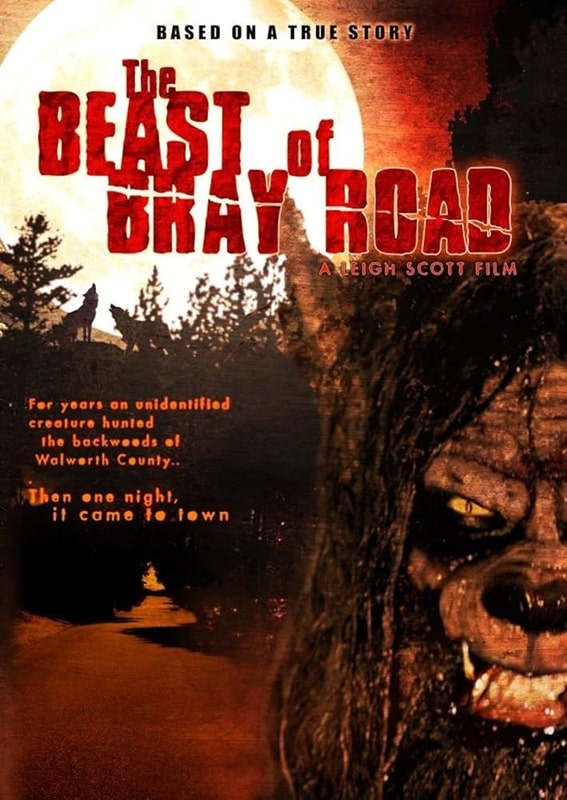 The Beast of Bray Road (The Asylum, September 1, 2005)
The Beast of Bray Road (2005) YouTube
The Beast of Bray Road (The Asylum, September 1, 2005)
The Beast of Bray Road (2005) YouTube
Man or beast? Hairy, humanoid, naughty thing.
Howlin’ good time? It’s an Asylum flick, but don’t let that put you off. Granted, it’s the usual fare; two-dimensional charac… sorry… cannon fodder going through the motions, hitting their marks and spouting uninspiring dialogue. However, a great portion of the budget went on practical effects, including more loops of guts than a back-alley sausage shop. The gore was over the top and fun, the beast however was a bit of a laugh. In fact, this poster doesn’t do the film any favours, and I can’t believe they didn’t hire an artist to paint a kick-ass werewolf for it.
As it is, this one just reminded me of Zeb from Star Wars: Rebels (if you know, you know), and I couldn’t take it seriously. Ultimately though, it’s a better-than-most Asylum effort, and I was entertained, so… congrats?
6/10

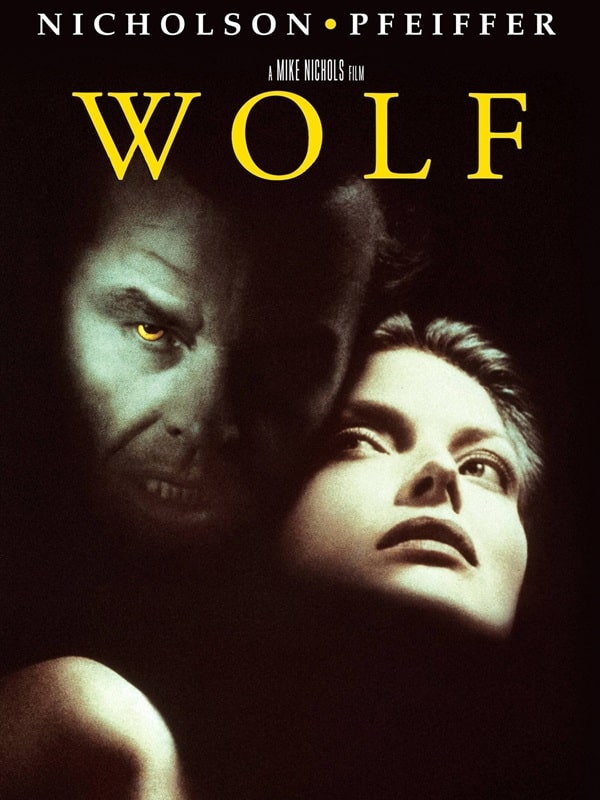
I Am Lisa (Mutiny Pictures, July 2, 2020)
and Wolf (Columbia Pictures, June 17, 1994)
Man or beast? Subtle lady beast.
Howlin’ good time? I’m glad I saved this one until close to the end of my werewolf watch-a-thon, because I was quite impressed with this indie film, shot on a low budget but spending the money wisely. It’s a tale of abuse and revenge, with strong female leads, well-written queer undertones and some lovely cinematography. I thought the director Patrick Rea handled the story really well and the score had a nice throwback vibe to it. In fact, the whole shebang put me in mind of I Spit on your Grave, with more teeth.
My only gripes lay with the sound design and the fight choreography, neither of which packed enough punch and let down the climax, but overall it’s a solid watch and I’m going to go ahead and recommend it.
8/10
Wolf (1994) PrimeMan or beast? Nicholson and Spader being hairy.
Howlin’ good time? Saved a ‘proper’ film for last, because it would be nice to go out with a bit of quality, and I hadn’t seen this before. However, I was wholly unprepared for how ludicrous and dull it actually is.
At the risk of invoking the wrath of those of you who fondly* remember this as being great, let me just express my surprise over so much before and behind the camera talent coming up with this wereturkey. It features amazing actors, Mike (The Graduate) Nichols directing, FX from Rick (American Werewolf in London) Baker and a score by Ennio (Ennio freakin’ Morricone) Morricone, and yet it is still as dumb as a bag of wolf nards. The lycanthropic plot is reduced to a subplot as the main focus is about a guy getting his job back, and its direction is a bit aimless (unlike Jack’s pee).
Is it a satire? Not funny enough. Is it horror? It’s got less teeth than grandma shark. Gah — maybe at this point, now finished with the werewolf movies, I’m jaded, cynical and ready to move on — but I really was expecting better.
6/10
*incorrectly
Previous Murkey Movie surveys from Neil Baker include:
There, Wolves: Part I
There, Wolves: Part II
What a Croc
Prehistrionics
Jumping the Shark
Alien Overlords
Biggus Footus
I Like Big Bugs and I Cannot Lie
The Weird, Weird West
Warrior Women Watch-a-thon
Neil Baker’s last article for us was There, Wolves: Part II. Neil spends his days watching dodgy movies, most of them terrible, in the hope that you might be inspired to watch them too. He is often asked why he doesn’t watch ‘proper’ films, and he honestly doesn’t have a good answer. He is an author, illustrator, outdoor educator and owner of April Moon Books (AprilMoonBooks.com).
Two Howards Fathering Sword and Sorcery – Swords Together!
Left: The memorial booklet for Howard Andrew Jones given to attendees at the February
22nd Celebration of Life. Right: Sean CW Korsgaard gives his eulogy for Howard.
Foreground: Christopher Rowe, Cinda Hocking, John C. Hocking. Photo by John O’Neill
A Celebration of Life for Howard Andrew Jones (HAJ) was just held in Evansville, IN, Feb 22, 2025. The event gathered friends, family, and over a dozen author colleagues. Numerous online memorials and tributes had been posted leading up to this. Links to many are listed at the bottom of the post; reading these reveals wonderful insights. This article aims to honor HAJ slightly differently by echoing excerpts from his blogs intermixed with remembrances and emphasizing the importance of community.
It struck me that when discussing HAJ, there are always references to REH (Robert E. Howard, indisputable “Father of Sword & Sorcery Genre”). Whereas REH kicked off the genre with his heroes in the 1920-30s (Conan, Bran Mak Morn, Kull, etc.), a hundred years later, the other Howard, our dear HAJ, championed S&S, wrote S&S, and built a community of S&S readers & writers.
You may already know that HAJ edited the online Flashing Swords ezine (links to internet archives below), grew Black Gate in print and online, edited the Harold Lamb series, led the Tales from the Magician’s Skull Magazine, and wrote copious amounts of pulp and fantasy fiction (Asim & Dabir, Ringsworn, Pathfinder, Hanuvar). He did all that while immersing himself with authors and readers.
A lifetime of activity is impossible to capture, but several montages of his writer-focused activities were captured and shared at the celebration (PDF link); and Sean CW Korsgaard created a spectacular video playlist of HAJ interviews, panels, and more.
We’ve been conditioned to believe that there aren’t any real heroes and that everyone’s in it for themselves; we’ve been trained to be skeptical and ironic and detached and sarcastic and hip. Yet even as we sneer and laugh with our friends, we know it’s a lie. — HAJ 2008Herein, you’ll learn his thoughts behind the “New Edge” S&S term he coined, how he inspired the Goodreads S&S group, how he conjured up the Day of Might, and more! HAJ was a mentor and coach to many dozens and a father figure to some (as Hanuvar champion and Bean editor Sean CW Korsgaard attested in his remembrance, image above).
I suspect HAJ would balk at being called “The only father of all S&S communities.” Heck, being called a simple role model made him uncomfortable (sorry, Howard). But his community building and influence are undeniable. They deserve to be called out and remembered. Funny enough, Howard called “Harold Lamb the grandfather of S&S” (evidence herein). With REH being the father, maybe that makes HAJ the grandson?!
Whatever. Read on, mortal dogs, and imbibe the contagious sorcery of a hero recently passed. Hear now his closing line for his editorials, which resonates with comradery:
Swords Together! The Writing Display of Howard Andrew Jones at his Celebration of Life, February 22, 2025
Goodreads Sword & Sorcery Group
The Writing Display of Howard Andrew Jones at his Celebration of Life, February 22, 2025
Goodreads Sword & Sorcery Group
The Goodreads S&S Group began in 2012, initiated by Periklis Begzos. We struck a friendship, and I became a lead moderator for 10 years before getting pulled into organizing the Gen Con Writers Symposium over the Covid era (not ironically, a role that followed after HAJ encouraged me to volunteer for the convention). Anyway, S&S GR group still exists, but activity has waned. Regardless, I share a moving anecdote from Periklis that captures how Howard helped others and they helped him:
“Regarding Howard’s touch, I remember discovering his book “The Desert of Souls” in early 2012. I loved it. I was following Black Gate magazine and what struck me the most was the love for the culture (of both S&S and adventure/pulp fiction) that Howard spread. At the same time he announced a competition for naming the Dabir & Asim series. I submitted the name “The Chronicles of Sword and Sand” and was awestruck when it won. Along came a gift pack of all of Howard’s published works, with a printed map and a lovely letter from him. It really pulled me from a dark place I was going around that time and allowed me to start the public Goodreads group about sword and sorcery. So I would think that Howard’s generosity of character and his altruistic involvement with all things Sword & Sorcery are keeping inspired to this day.” Periklis Begzos
Harold Lamb is the ‘Grandfather of S&S’?Perusing HAJ’s comments in the Goodreads Sword and Sorcery Group, I came across this gem that showcases his love for Lamb and S&S.
I stumbled across one of his Cossack collections when I was in high school and was immediately reminded of one of the Leiber collections of Fafhrd and Mouser stories. Not because Khlit the Cossack is a thief and bravo, because he isn’t, but because both Lamb and Leiber wrote serial stories with continuing characters — almost like a TV series — stuffed full of action and adventure and sense of wonder.
I’ve argued at length, in many places, that Lamb is the unsung grandfather of sword-and-sorcery, because he’s got nearly EVERYTHING except the imaginary world and real sorcery. He occasionally (very occasionally) suggests the fantastic. And he is one of the very first to write adventure fiction with a mostly modern feel. He’s still compulsively readable today. Combine that with his laconic style and pacing and sense of adventure — not to mention surprise — and you have something phenomenal.
I was astonished when I discovered how many of his stories that had not been collected were excellent. His work isn’t like, say an obscure rock band that’s only good when you listen to their greatest hits. Even many of his deep album tracks are strong. I dreamed that one day I could find them all and read them. Slowly I did. And because the only job I could find in the economic downturn of the ’90s was as a third shift proofreader, I ended up becoming an editor, which made it possible for me to cold call Bison Books and pitch the collections. I knew how to talk “book” in the language of “editor” and I’d amassed a sizable collection of obscure Lamb texts by that point. Because I loved his stories I’d accidentally become an expert, and because of my accidental training I was perfectly positioned to make it happen. Serendipity. — HAJ 2016, Goodreads Threads
Magazine Editing and Honing A New EdgeIn 2005-2007, Howard edited the first six 6 e-zones of Flashing Swords (this link goes to the archived internet that offers the PDFs! Go get them!). How influential can an e-zine be? Read the introduction of Return of the Sword where esteemed heroic fiction champion Jason M Waltz lists Flashing Swords as one of his inspirations (and provided Jason an opportunity to become an assistant editor; Rogue Blades Entertainment and Foundation evolved from Jason’s own passion to build an S&S community).
In 2006, Howard moved along to take a position as Associate Editor at Black Gate. As John O’Neill mentions in his tribute and oral remembrance, Howard quickly rose from exuberant writer and associate editor to Black Gate’s first Managing Editor. HAJ grew the website driven by a passion to get fresh content posted daily and enlisted over thirty staff. In 2016 Black Gate Magazine was awarded a World Fantasy Award, a recognition that John O’Neill has said reflects Howard’s devotion (keep in mind, John is also a superb, understated mentor/hero who deflects compliments).
In 2008, as Managing Editor at Black Gate, HAJ posted his “manifesto” regarding a resurgence brewing in Sword & Sorcery fiction: Honing A New Edge Part 1 & Part 2 (these originally appeared in the introductory editorials Issue 3 & 4 as “The New Edge”). Excerpts are below. This sentiment resonated with many authors and editors, and a decade after its posting, directly inspired the creation of New Edge Sword & Sorcery Magazine (though editor Oliver Brackenbury has a slightly different definition than that of HAJ, read Oliver’s interview on BG for more). Incidentally, New Edge S&S 2025 has another crowdfunding running now, check out the link for the new Jirel of Joiry.
Traditional S&S Heroes (from Honing A New Edge Part 1)The protagonists in sword-and-sorcery fiction are most often thieves, mercenaries, or barbarians struggling not for worlds or kingdoms, but for their own gain or mere survival. They are rebels against authority, skeptical of civilization and its rulers and adherents. While the strengths and skills of sword-and-sorcery heroes are romanticized, their exploits take place on a very different stage from one where lovely princesses, dashing nobles, and prophesied saviors are cast as the leads. Sword-and-sorcery heroes face more immediate problems than those of questing kings. They are cousins of the lone gunslingers of American westerns and the wandering samurai of Japanese folklore, traveling through the wilderness to right wrongs or simply to earn food, shelter, and coin. Unknown or hazardous lands are an essential ingredient of the genre, and if its protagonists should chance upon inhabited lands, they are often strangers to either the culture or civilization itself. — HAJ 2008
Being Heroic (from Honing A New Edge Part 2 )We’ve been conditioned to believe that there aren’t any real heroes and that everyone’s in it for themselves; we’ve been trained to be skeptical and ironic and detached and sarcastic and hip. Yet even as we sneer and laugh with our friends, we know it’s a lie. Heroes really are out there. They’ve lived and breathed and sacrificed right here on this very Earth, and some of them are still at it. Students of history know them. Sometimes we can even find them covered by our local news stations. Stories of heroes, not of dejected mopers, have inspired us since the dawn of humanity, and we should not be embarrassed if they continue to fire our imagination. — HAJ 2008
HAJ: So what are those New Edge guiding principles? Briefly:-
A hardboiled tone — as in terse and unsentimental
-
Exotic settings and/or settings that live — as in NOT faux Tolkien (if the settings echo Tolkien or other writers then they must be twisted or seen from some new perspective)
-
Evoking a sense of wonder — magic is never banal or easy, the fantastic should not be mundane
-
High energy storytelling — as in fast and without padding
From a 2012 editorial post, we learn HAJ’s gratitude for being part of a community.
We wouldn’t be working so hard to get published in this genre if we didn’t love the genre, and I can trace a lot of my success back to actually becoming involved in it (I already posted about the exact steps to my book deal a year or two ago). Corresponding with other writers, writing reviews for genre sites, reading slush, writing editorials, editing for ‘zines and magazines. Eventually, a whole lot of people had heard of me, so that I wasn’t a complete unknown when it got to be time to try to promote my books.
I didn’t know that was going to happen — I just couldn’t stay away from fantasy fiction, particularly heroic fiction. But it DID happen, and even though every author’s journey is a little different, surely there’s some lessons from this story some of you out there could find useful. — HAJ 2012
When you begin your writing career, you’re joining a community — HAJWriting is a lonely business and I wanted to meet some kindred spirits. What I didn’t realize was that I was also forming a network of friends and allies, AKA “networking.” I dislike that word, though, because it suggests that one is cold-bloodedly setting forth to make friends to climb the ladder, probably before callously putting them aside for new and better and more powerful contacts as one advances. I realize now that I was becoming part of a writing community.
Many writers grow up thinking of the writing profession as a noble romantic one, where we sit alone in a tower room with our raven on a bust of Poe and a cat in our lap. Well, okay, I never pictured that, exactly, but I expected that I would write stuff and I just had to send it out until some editor finally printed me, probably sooner rather than later. As I became a regular at various magazines, I realized just how rewarding it was to be exchanging letters with editors and fellow authors and even readers from the various magazines. After I jumped the editorial fence, I started to comprehend that part of what you’re doing with a magazine is helping to build a community of writers and readers. — HAJ 2012
The Evil Skull versus the Heroic HanuvarIn 2017 (Kickstarter Link), Howard teamed with Joseph Goodman (Goodman Games) to create Tales from the Magizian’s Skull (as Joseph describes in his tribute).
Howard shared my appreciation of how fiction can inspire great gaming. We were both fans of several of the same things: D&D and DCC RPG, Appendix N, and Weird Tales, the publication that first published many of the Appendix N authors. We decided to start a fiction magazine together. From there we created Tales From The Magician’s Skull. The issues of that magazine that I published are among the Goodman Games publications of which I am most proud. Tales From The Magician’s Skull stands out from every other periodical in its category for its titular hero (or perhaps villain?), who would not exist were it not for the weird melding of Howard’s and my brains. Somehow our mutual creativity synthesized this bizarre character who seemed completely real to both of us. The Magician’s Skull was so integral to our mutual imaginations that we tag-teamed to write the editorials, articles, and memorandums attributed to the Skull. — JG 2025
The magazine moved ownership from Goodman Games to Outland in 2024 (here is their KS page for issues 13+ and their current store). The magazine’s run was a creative fusion of Howard and Joseph, but Howard was the frontman under the mask and editor. I shared my thoughts within the Science Fiction Writers of America (SFWA) obituary, and echo them here since they capture how Howard and the Skull persona complemented each other:
Howard’s Skull’s persona resonated since it was the antithesis of him. Whereas the villainous champion of the titular magazine spitefully called his readers ‘mortal dogs’ and regularly ‘immolated’ his interns, the man behind the mask was known to be overly gracious, coaching aspiring, mature, and professional writers in myriad conventions, editing, blogs… for decades! He mentored tirelessly even as his body failed. A week before he was diagnosed with terminal cancer, he improvised a personalized ‘Hey Jude’ song at Gen Con Writers Symposium to inspire me on the piano beside the green room, and the lyrics motivate/haunt me continuously. How did he exude so much vitality?
His Hanuvar character embodies Howard more accurately, a veteran striving to save his shattered family and reunite his community (refreshing compared to the flood of immoral, vengeful protagonists available). Howard could strike a friendship up in minutes, and combined with his passion for storytelling, [this] makes him one to be remembered as much as for his heroes as for his own heroism. Howard was the quintessential role model. I imagine him inspiring us now in our time of mourning: ‘Behold, mortal readers, do your morning stretches, carry on, and realize the stories inside you. Swords together!’ — SEL
A Confluence of S&S Community Builders In 2022, I reported on the S&S Rogues in the House podcast for Black Gate. As the Rogues moved beyond podcasts to build the Sword & Sorcery community, they started publishing anthologies including the just-released A Book of Blades. With my Event Coordinator role for the Gen Con Writers Symposium, I did my best to gather the Rogues and other contributors to A Book of Blades on several panels. Collected were the Rogues in the House podcasters, HAJ of the Skull magazine, Jason Ray Carney of Whetstone Amateur Sword & Sorcery Magazine, and myself. We gathered in Marriott Ballroom #4 to record this special session. At 6:45 min:sec, the Skull crashes the party and awards his only named intern an award. Click here to listen: The Rogues on Hallowed Ground (link to Aug 8-2022 podcast episode)“Rogues, old and new, meet at the mecca called Gen Con. In this very special episode, Deane Geiken and Matt John are joined by Howard Andrew Jones, Seth Lindberg, Steve Diamond, Sean CW Korsgaard, Jason Ray Carney, and *shudders* The Magician’s Skull himself. Topics include sword and sorcery (of course) as well as our “top picks” from Gen Con.”
 2023 Gen Con, the Skull with Joseph Goodman, Matt John, Seth Lindberg
Day of Might
2023 Gen Con, the Skull with Joseph Goodman, Matt John, Seth Lindberg
Day of Might
The Skull is responsible for creating the first Sword & Sorcery holiday to be celebrated every October 23rd. A cartoon excerpt from Tales from the Magician’s Skull explains the inception (below) and Skull TV captures essential broadcasting of the initial days.
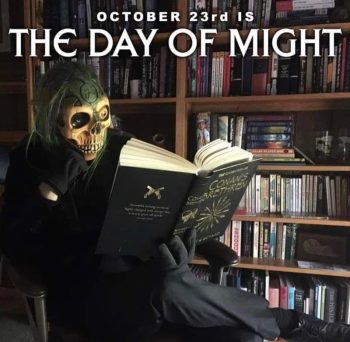

I have been grateful to HAJ for many years, from being a fan of his S&S blogs and appearances at World Con 2010, to meeting him at Gen Con and having him coach me into volunteering at the Writers Symposium ~2017 (which grew into me chairing it in 2023), for bridging the connection to John O’Neill to edit for Black Gate online magazine (~2019 onward), and for being able to intern for his magazine Tales From the Magician’s Skull as acquisition editor and for being a social media intern for the Skull (~2022).
The outpouring of memorials speaks to HAJ’s character and influence. Each instance, even the shorter obituaries, amplifies his life and reveals nuances. Below I list several so I, and anyone visiting here, can learn more about the man we miss. There are many more tributes than those listed below. More may be added after the original posting date as I track those down.
Did you know Howard… was once a TV cameraman? Created an official Walk Through Guide for a Castlevania game? Coined New Edge Sword & Sorcery?- Locus: abbreviated verionHoward Andrew Jones (1968-2025); longer version by CSE Cooney, John O’Neill, John Hocking, Matthew John, Scott Oden) available in Issue 769 also inside the celebration display p16.
- SFWA: In Memoriam: Howard Andrew Jones [John O’Neill, SE Lindberg, Martha Wells, Sean CW Korsgaard]
- Joseph Goodman (Skull publisher) A Tribute to Howard Andrew Jones
- John ONeill (Black Gate): Howard Andrew Jones, July 19, 1968 – January 16, 2025
- Jason Ray Carney: Howard Andrew Jones, a Mentee’s Perspective
- Bob Byrne An Important Life – Howard Andrew Jones (1968 – 2025)
- Brian Murphy: Rest in peace, Howard Andrew Jones
- Sean CW Korsgaard This is one of the hardest things I’ve had to write in my career. Howard Andrew Jones is dead
- Mark Rigney (Celebration of Life farewell)
- Greg Mele: “Swords Together, buddy” Private Facebook Post
- Matt John — Devastated to learn my friend, Howard Andrew Jones, has passed.
- Deuce Richardson (DMR) Howard Andrew Jones Has Fought His Last Battle
- Vanessa Armstrong Author Howard Andrew Jones Passes Away at Age 56
- Michael Grossberg Acclaimed fantasy writer and Prometheus finalist Howard Andrew Jones, R.I.P.
- Paizo (Pathfinder) Paizo Remembers Howard Andrew Jones
- Morgan Holmes Remembering Howard A. Jones
- Keith West RIP, Howard Andrew Jones
 Howard Andrew Jones’ Office in Evansville
Heroes really are out there. They’ve lived and breathed and sacrificed right here on this very Earth, and some of them are still at it. Students of history know them. Sometimes we can even find them covered by our local news stations. Stories of heroes, not of dejected mopers, have inspired us since the dawn of humanity, and we should not be embarrassed if they continue to fire our imagination. — HAJ 2008
Howard Andrew Jones’ Office in Evansville
Heroes really are out there. They’ve lived and breathed and sacrificed right here on this very Earth, and some of them are still at it. Students of history know them. Sometimes we can even find them covered by our local news stations. Stories of heroes, not of dejected mopers, have inspired us since the dawn of humanity, and we should not be embarrassed if they continue to fire our imagination. — HAJ 2008
S.E. Lindberg is a Managing Editor at Black Gate, regularly reviewing books and interviewing authors on the topic of “Beauty & Art in Weird-Fantasy Fiction.” He has taken lead roles organizing the Gen Con Writers’ Symposium (chairing it in 2023), is the lead moderator of the Goodreads Sword & Sorcery Group and was an intern for Tales from the Magician’s Skull magazine. As for crafting stories, he has contributed eight entries across Perseid Press’s Heroes in Hell and Heroika series, and has an entry in Weirdbook Annual #3: Zombies. He independently publishes novels under the banner Dyscrasia Fiction; short stories of Dyscrasia Fiction have appeared in Whetstone, Swords & Sorcery online magazine, Rogues In the House Podcast’s A Book of Blades Vol I and Vol II, DMR’s Terra Incognita, and the 9th issue of Tales From the Magician’s Skull.
Goth Chick News: Corpses, Monsters and a Giraffe Onesy – Hitting the Road to TransWorld 2025
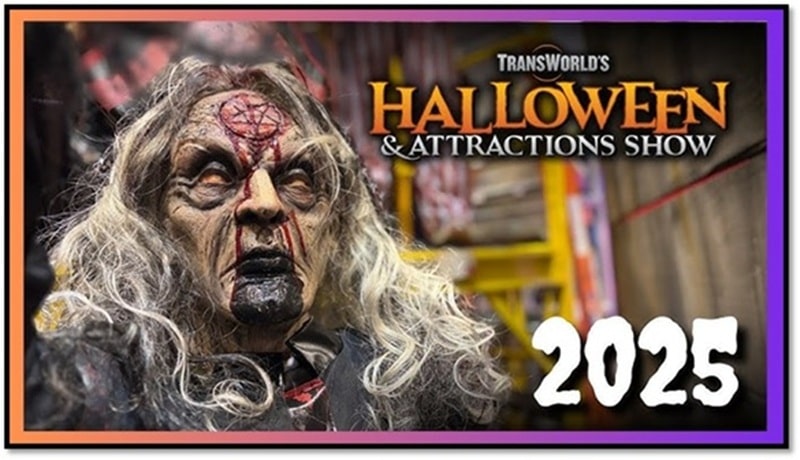 TransWorld’s Halloween & Attractions Show 2025
TransWorld’s Halloween & Attractions Show 2025
Around this time every year, Black Gate photog Chris Z and I pack up the car for the 10-hour-round-trip from Chicago to St. Louis to attend the TransWorld Haunted Attractions Show. This event not only kicks off the spooky season for the new year but never fails to produce at least one memorable adventure. From Fireball shots to epic snowstorms, to celebrity encounters, I can always count on our annual road trip to produce stories that will easily carry me through a year’s worth of cocktail-party small talk.
This year was no exception.

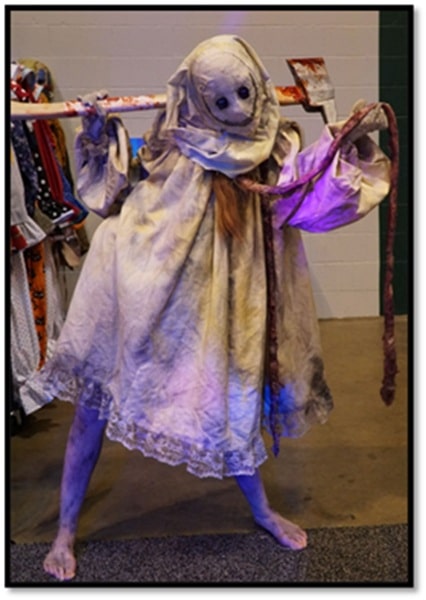
Seen at the TransWorld Halloween & Attractions Show 2025. Photos by Chris Z
For a start, our odyssey begins with me picking up Chris Z at 5am to ensure we are in St. Louis when the show doors open at 10. This has been the standard operating procedure for the eighteen years we have been covering this show, except for the couple of years TransWorld was held here in Chicago. Every year, Chris Z complains about the early pickup time, threatening to show up in his pajamas and sleep the entire five hours; and every year I tell him to nut-up and promise to stock the car with Mountain Dew.
So, last weekend at 5am I roll up into his driveway, noticing there is some kind of cord laying in front of his garage door, and remind myself to tell him when he comes to the car. At that moment, the darkness of the suburban neighborhood is shattered by a disco light display worthy of Saturday Night Fever. My stunned brain seized up, my mouth dropped open, and before I could figure out what the heck was happening, the garage door lifted to reveal Chris Z in a giraffe onesy.
As I have no further words to describe this, so here…


Chris Z in a onesy
Yes, apparently Amazon really does have everything.
Chris Z loads his camera gear in the back seat, gets in, and curls up – all in silence. An hour later when we stop to recaffeinate, he strolls into the Starbucks in said onesy and blithely orders like this is something he does every day. To the credit of the baristas, they just looked at each other and kept right on working. Back at the car, Chris Z shed the onesy saying only that it was making him too hot.
…sigh.


Photos by Chris Z
Now, about the TransWorld show and why thousands of Halloween tradespeople fly from all over North America to get their spooky on in February.
TransWorld is an “industry only” event not open to the public. It brings together professional haunt operators and the suppliers of everything from costumes and makeup, to $20K special effects.
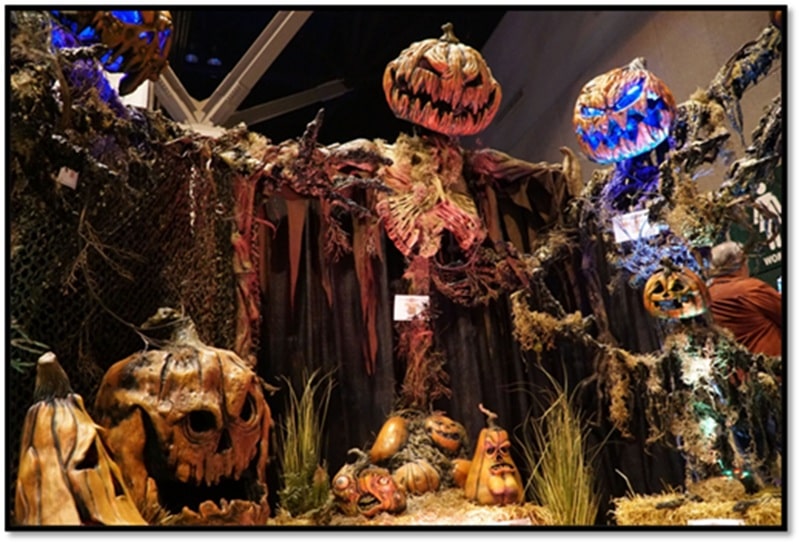 Scenes from TransWorld’s Halloween & Attractions Show 2025
Scenes from TransWorld’s Halloween & Attractions Show 2025
Ever wonder where amusement parks like Cedar Point and Great America, or big-name haunted attractions get their gear? TransWorld is the place, and with the haunt industry estimated at $30 billion annually, the vendors who have booths at TransWorld are the absolute real deal. Also, since creating and shipping all these scares takes time, the flurry of activity happens in February to ensure everything is in place by fall.
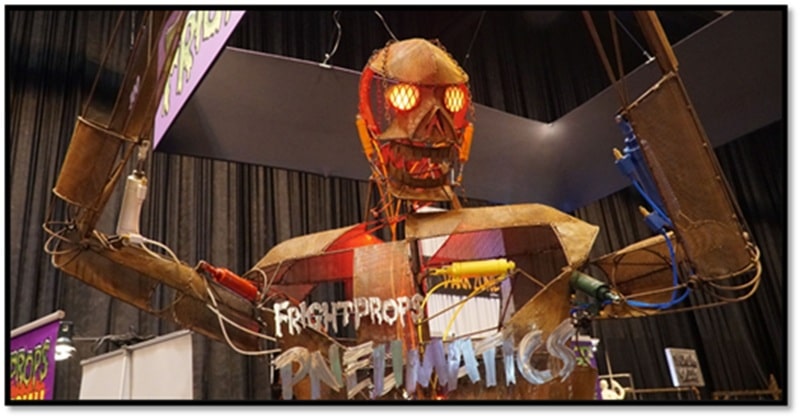 Frightprops Pneumatics
Frightprops Pneumatics
Walking into TransWorld, held at the Americas Center is stepping into 500,000 square feet of creativity and horror. Imagine rows upon rows of booths showcasing hyper-realistic props, cutting-edge animatronics, custom soundscapes, and theatrical-grade special effects. One of the highlights of each year is getting an early look at the new technology that keeps the haunted attraction industry fresh and terrifying. Innovations like AI-driven scares, augmented reality overlays, and hyper-detailed silicone masks demonstrate the evolution of horror craftsmanship.
TransWorld is more than just a trade show; it’s a masterclass in the haunt industry. The event features an array of seminars, workshops, and panels led by industry veterans. Topics range from the art of creating compelling narratives for haunted houses to practical advice on marketing, ticketing, and safety protocols.
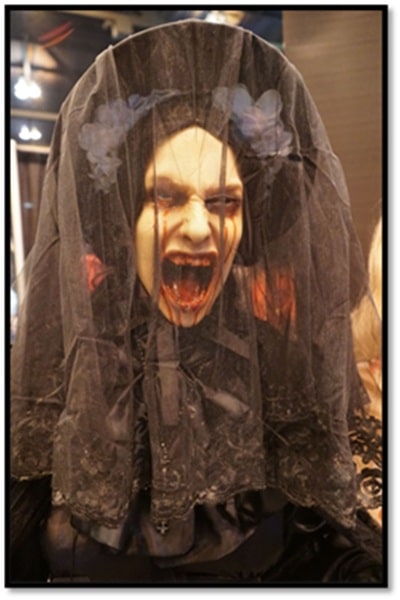

Seen at TransWorld. Photos by Chris Z
For haunters who want to experience the thrills firsthand, the event hosts live demonstrations and walkthrough attractions. These mini-haunts showcase the latest in set design, scare techniques, and interactive storytelling. Walking through these exhibits is like getting a sneak peek at the nightmares that will soon populate attractions nationwide.
Perhaps the most compelling aspect of TransWorld is the community it fosters. Chris Z and I consider it our annual “family reunion” where we connect with artists we’ve covered for nearly two decades and get the scoop on their newest ventures.
We couldn’t kick off spooky season without checking in with my long-time goth boy-band crushes, Ed and Gavin of Midnight Syndicate. Best known for their dark, atmospheric soundtracks they have become staples in the haunted attraction industry.
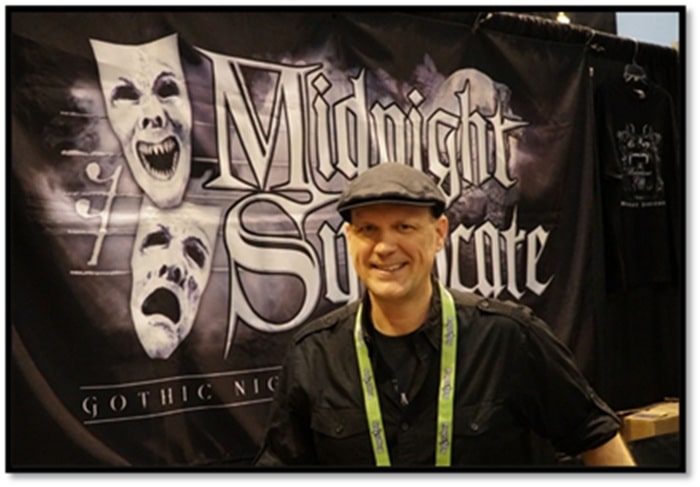 Goth Boy-Band Crush: Midnight Syndicate
Goth Boy-Band Crush: Midnight Syndicate
Since their formation in 1997, Midnight Syndicate has created the soundtrack for haunt season, providing music for Universal Studios Halloween Horror Nights and hosting their own stage show at Cedar Point’s Halloweekends.. We absolutely love Ed and Gavin’s music and were excited to learn they have a new album coming out later this year. We are always honored to get an early listen, so stand by for more.
 Demski Creations
Demski Creations
We also checked in with Brian Demski of Demski Creations. Brian is a seasoned artist with over two decades of specializing in creature special effects, custom prop fabrication, and scenic design. He has contributed to feature films, television, music videos, and haunted attractions, and his work is characterized by a macabre aesthetic, often incorporating steampunk elements. Having first interviewed Brian for Black Gate back in 2011, when I acquired my first Demski original, it has been incredible seeing the evolution of his talent first hand.
Last but never least we had a chance to catch up with John Weisgerber, owner of the Gemini Company. John didn’t have a booth this year, but we loved hearing about his latest creations. The Gemini Company specializes in museum-quality replicas sculpted and/or molded from actual specimens and cast in high quality materials and resins. Gemini pieces can be seen in shows such as American Horror Story and Mysteries at the Museum and I am the proud owner of a very realistic shrunken head which attends all my Teams meetings. Gemini also has a great Etsy page and I’m eyeballing that evil little doll from Trilogy of Terror.
 That creepy little doll from Trilogy of Terror (replica by The Gemini Company)
That creepy little doll from Trilogy of Terror (replica by The Gemini Company)
So spooky season 2025 has officially kicked off and I couldn’t be more excited. By the way, I never considered a giraffe to be an element of horror – until now.
And Now For Something Completely Different: The Borrowers, by Mary Norton
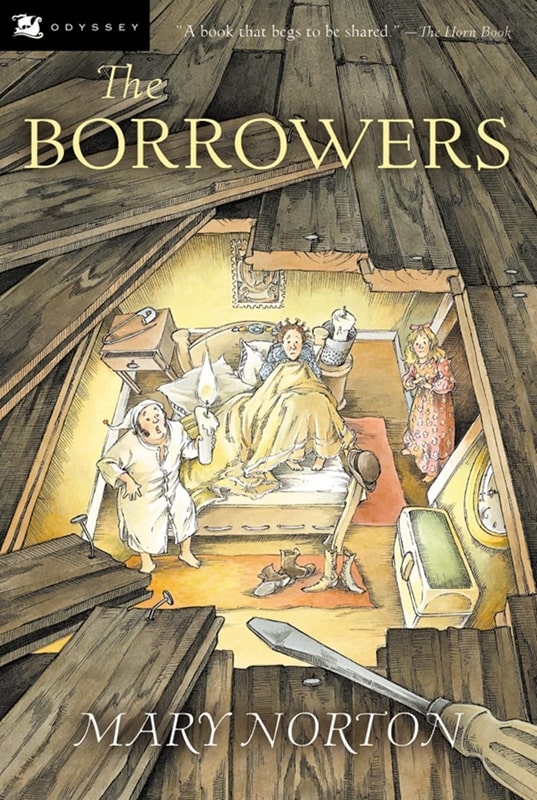

The Borrowers and The Borrowers Afield, by Mary Norton
(Odyssey/Harcourt, January 1998). Covers by Marla Frazee
I’ve done four posts in a row on Edgar Rice Burroughs, with more to come. But right now it’s time for a change of pace.
It’s going to be a big change for this particular post. It’s about The Borrowers. In my late teens, after I learned Andre Norton was a woman, someone told me she’d written books under her own name of Mary Norton, and that one was called The Borrowers. Turns out this wasn’t true; her original name was Alice Mary Norton, although she changed it legally to Andre Alice Norton in 1934. This was in the late 1970s, pre-internet, and I believed Andre Norton wrote The Borrowers for several years. It added to her charm for a while because I’d read The Borrowers when I was 11 or 12 and adored it.
The Borrowers may seem pretty far afield from Sword & Planet fiction, but the story of little people living in human houses and borrowing things from them, which would explain why things got “lost,” inspired my imagination and I invented many stories of myself shrunk down to that size and adventuring. After I wrote Swords of Talera, my first S&P novel, I toyed with the idea of writing an S&P story with borrower size characters but never did. Many many years later I discovered a graphic novel from DC called Sword of the Atom, which somewhat scratched that itch for me. (More on that later.)
[Click the images for non-Borrower-sized versions.]
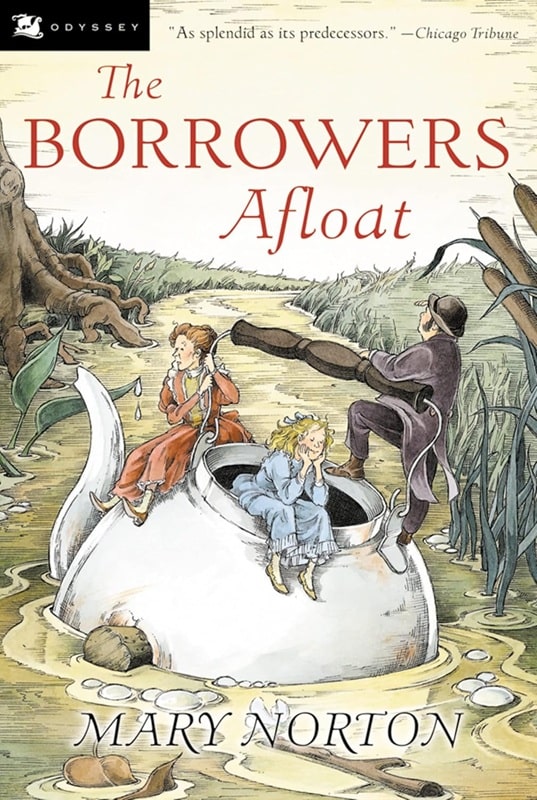
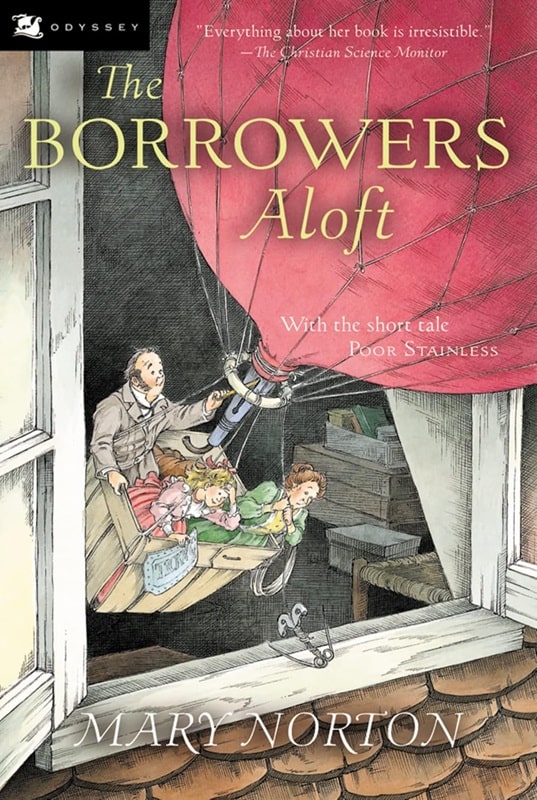
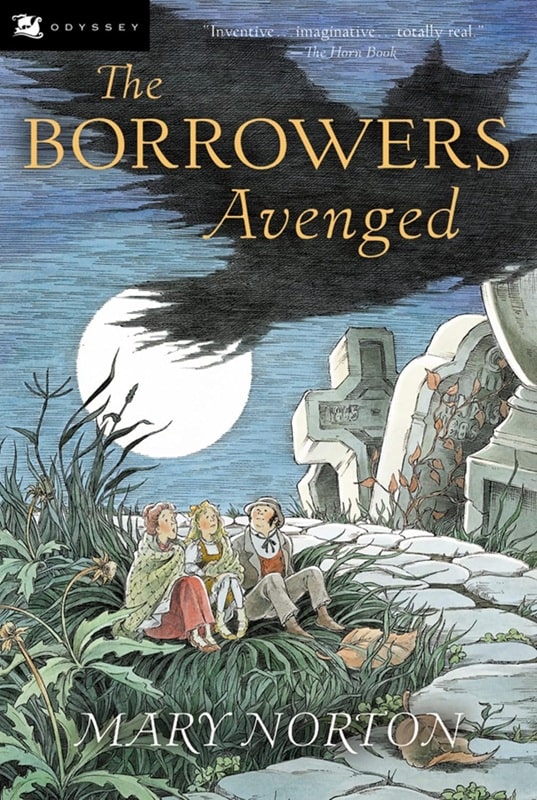
The Borrowers Afloat, The Borrowers Aloft, and The Borrowers Avenged
(Odyssey/Harcourt, January 1998). Covers by Marla Frazee
I got The Borrowers from our local library and only found out as an adult in my thirties that there were three later books in the series. These are: The Borrowers Afield, Afloat, and Aloft. I still remember being irritated at our library for not having those too. I would have devoured them.
This happened to me with other series I would have read more of at the time, including The Three Investigators (I thought there were just 2), The Hardy Boys (I only saw 3), and Doc Savage (I thought there was only a couple).
I picked up my own copy of The Borrowers many years ago, and later got The Borrowers Afloat, but after thinking about this post I went and ordered Afield and Aloft, and then discovered that Mary Norton wrote a fifth sequel 20 years after Aloft called The Borrowers Avenged. I ordered that one too. I just finished reading Afield and Aloft and they had all the charm and fun of the original.
I’m reading Avenged now. The first two I have are ex-library copies but I bought the other three are new. The older ex-library editions have wonderful covers and interior illustrations by Beth and Joe Krush. I particularly love The Borrowers Afield cover, by Marla Frazee. Totally ignites my imagination.
Charles Gramlich administers The Swords & Planet League group on Facebook, where this post first appeared. His last article for Black Gate was The Fiction of Edgar Rice Burroughs, Part IV: The Hollow Earth and Pellucidar.
“Worms of the Earth” and Robert E. Howard’s Ultimate Triumph
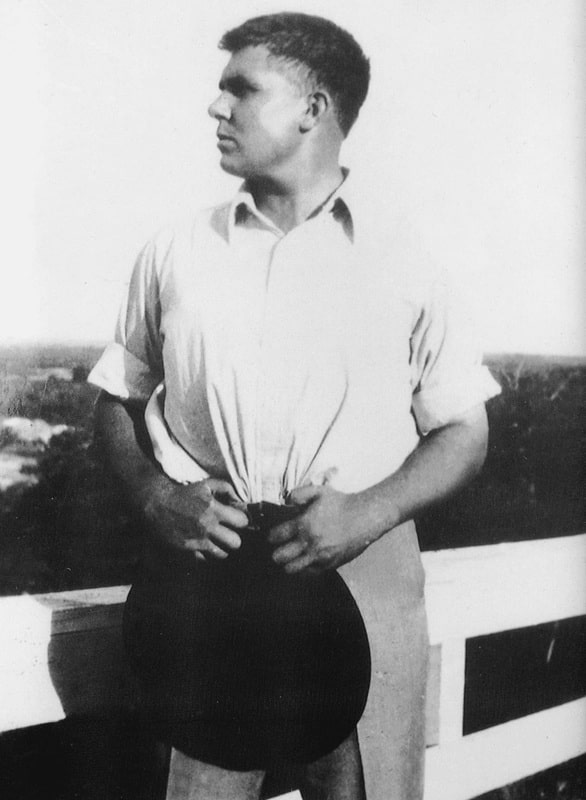
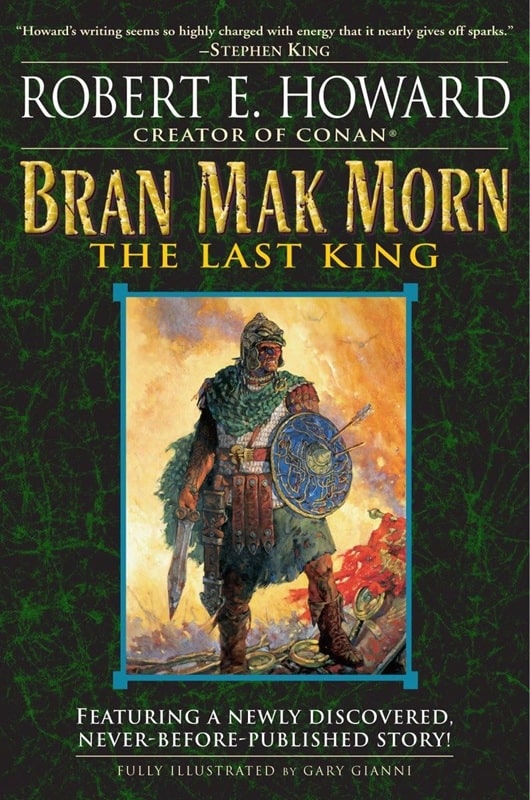
Robert E. Howard in a photo sent to H.P. Lovecraft in 1931,
and Bran Mak Morn: The Last King (Del Rey, May 31, 2005)
January 22, 2025 was the 119th birthday of Robert E. Howard, my favorite author. The works of this great author resonate with countless fans to this day.
“Worms of the Earth” is my favorite story by Robert E. Howard. It features Bran Mak Morn, the last king of the Picts.
Howard was fascinated with Picts, his conception of whom was largely mythological, with splashes of real world history. The Picts in his stories span Kull, Conan, Bran, James Allison, and more.
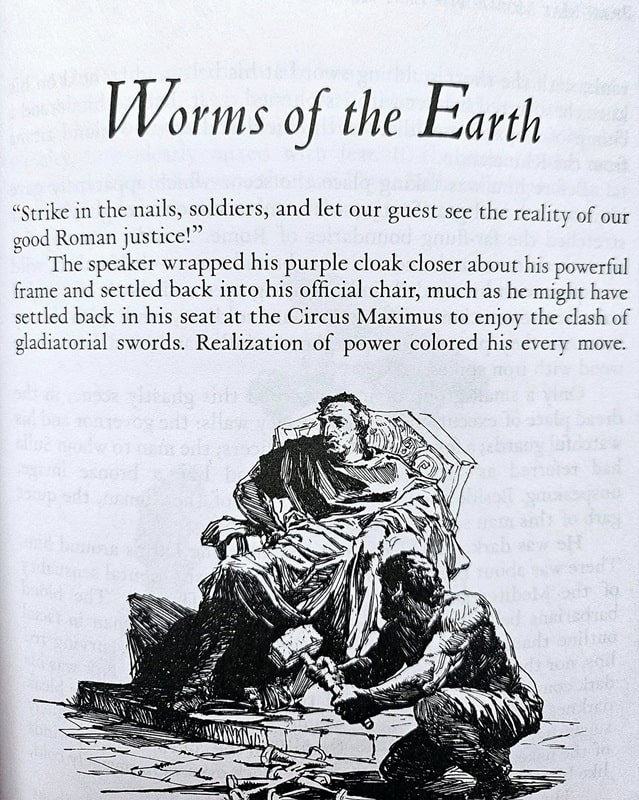
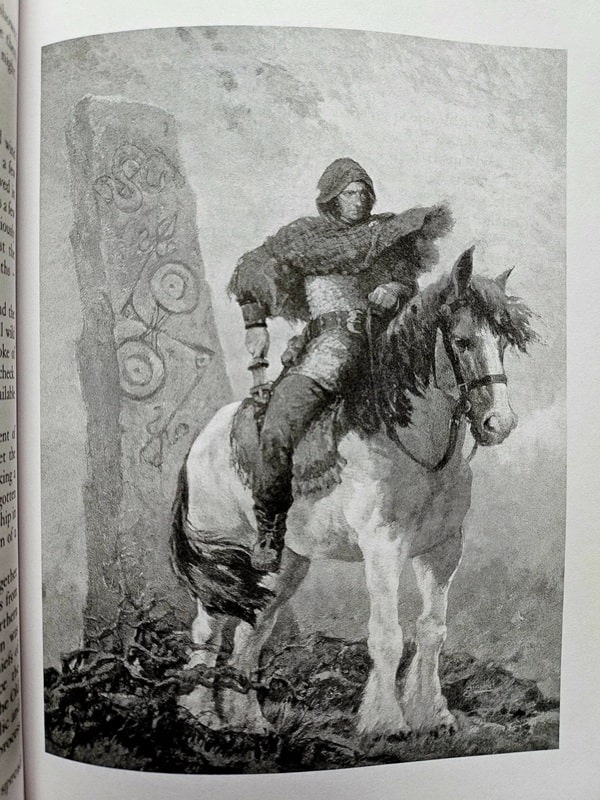

Art and layout from “The Worms in Earth,” published in
Bran Mak Morn: The Last King. Art by Gary Gianni
Of this story, REH said, “Only in my last Bran story, The Worms of the Earth… did I look through Pictish eyes, and speak with a Pictish tongue!”
The attached pictures feature art by Gary Gianni, from the Del Rey paperback, Bran Mak Morn, The Last King. His illustrations of the witch-woman, Atla, are particularly good.
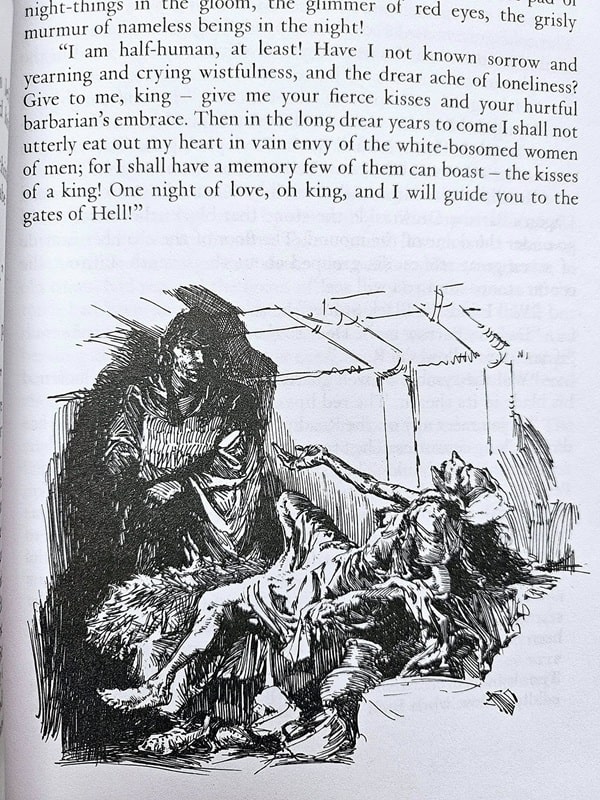
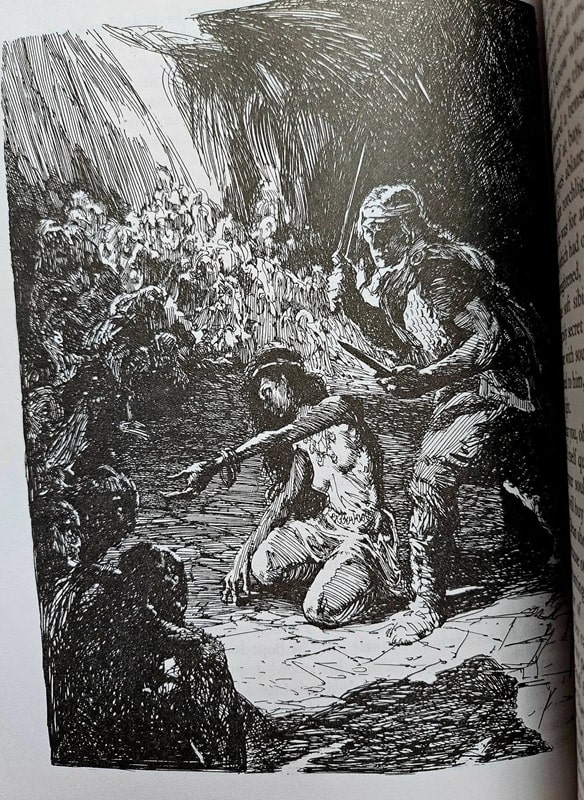

From “The Worms in Earth,” in Bran Mak Morn: The Last King
She was truly remarkable in the story, especially when she named her price for help to Bran:
What of my blasted and bitter life, I, whom mortal men loathe and fear? I have not known the love of men, the clasp of a strong arm, the sting of human kisses, I, Atla, the were-woman of the moors! What have I known but the lone winds of the fens, the dreary fire of cold sunsets, the whispering of the marsh grasses? – the faces that blink up at me in the waters of the meres, the foot-pad of night-things in the gloom, the glimmer of red eyes, the grisly murmur of nameless beings in the night!
I am half-human, at least! Have I not known sorrow and yearning and crying wistfulness, and the drear ache of loneliness? Give to me, king – give me your fierce kisses and your hurtful barbarian’s embrace. Then in the long drear years to come I shall not utterly eat out my heart in vain envy of the white-bosomed women of men; for I shall have a memory few of them can boast – the kisses of a king! One night of love, oh king, and I will guide you to the gates of Hell!
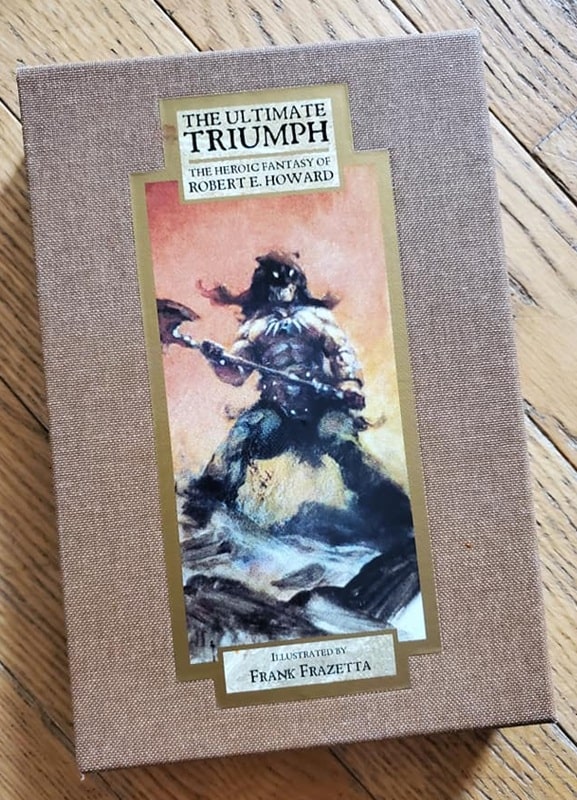
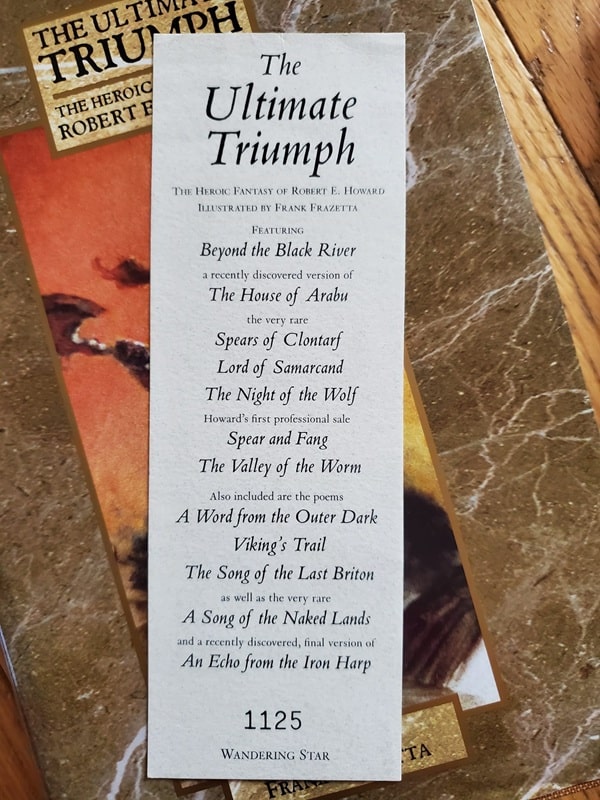
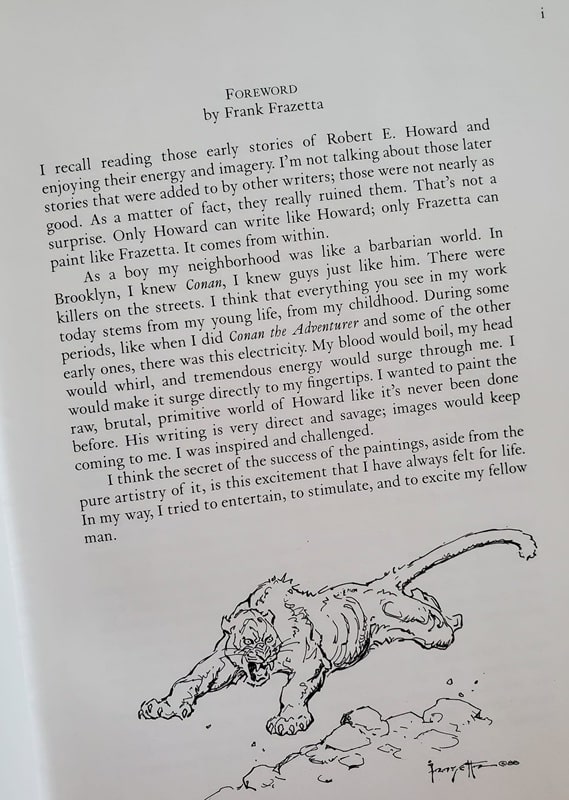
The Ultimate Triumph: The Heroic Fiction of Robert E. Howard
(Wandering Star, January 1, 1999). Art by Frank Frazetta.
The Ultimate Triumph ~ The Heroic Fiction of Robert E. Howard, illustrated by Frank Frazetta, is a prized treasure of mine, a gift that I received from my dear friend, Jim Goodwin.
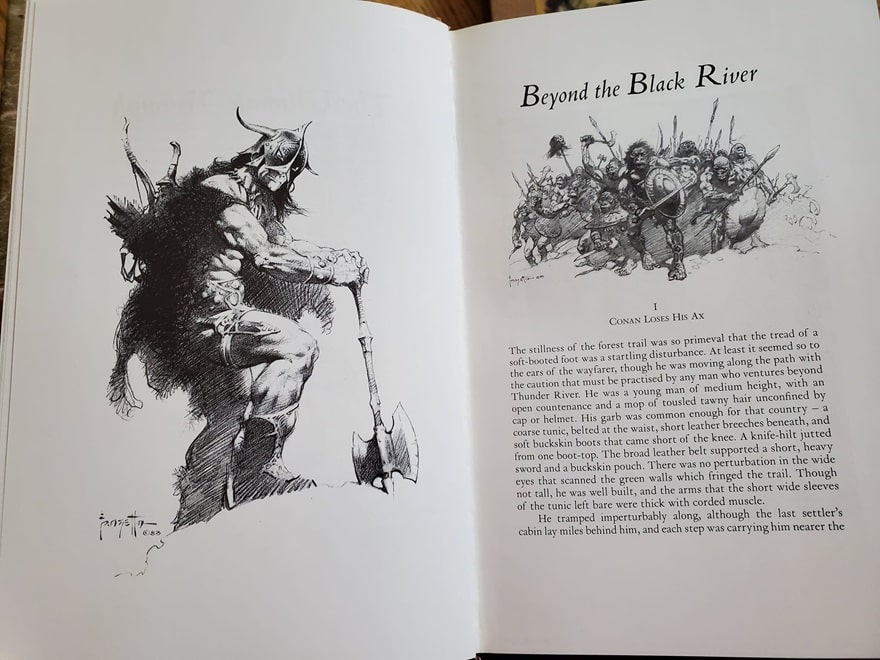 “Beyond the Black River,” in The Ultimate Triumph: The Heroic Fiction of Robert E. Howard. Art by Frazetta
“Beyond the Black River,” in The Ultimate Triumph: The Heroic Fiction of Robert E. Howard. Art by Frazetta
It features my favorite Conan story, “Beyond the Black River,” a recently discovered version of “The House of Arabu,” and several other rarities, poems, and one of my favorite letters that REH wrote to HPL regarding his stance on Civilization vs. Barbarism.
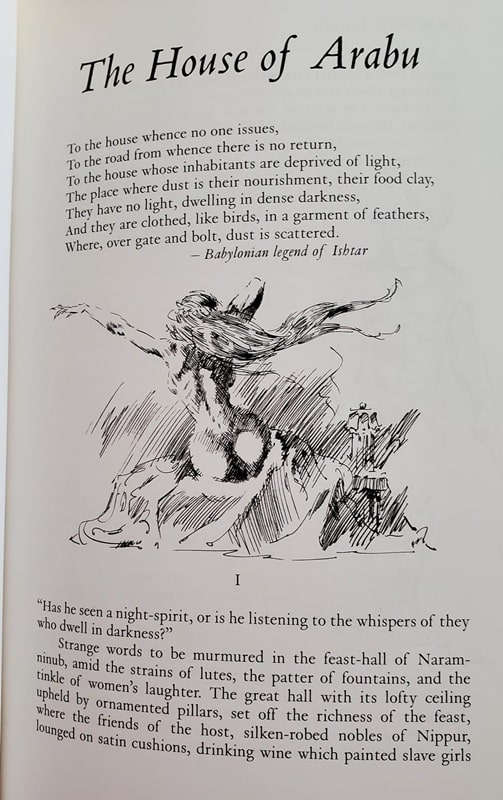
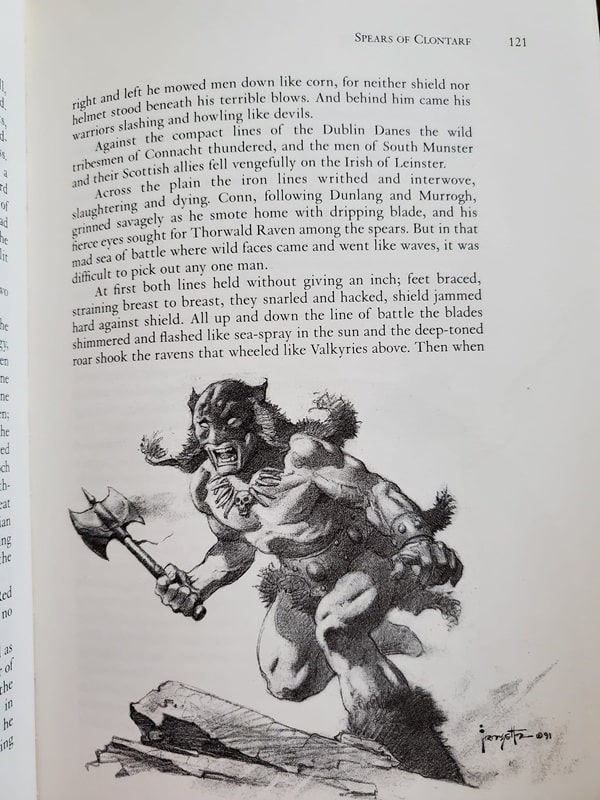

From The Ultimate Triumph: The Heroic Fiction of Robert E. Howard. Art by Frazetta
Sprinkled throughout this slipcased volume are incredible illustrations and paintings by the great Frank Frazetta. In fact, a foreword by Mr. Frazetta is also included, as well as an introduction by preeminent Howard scholar, Rusty Burke.
The title of this book is no misnomer, my friends — it truly is the ultimate triumph.
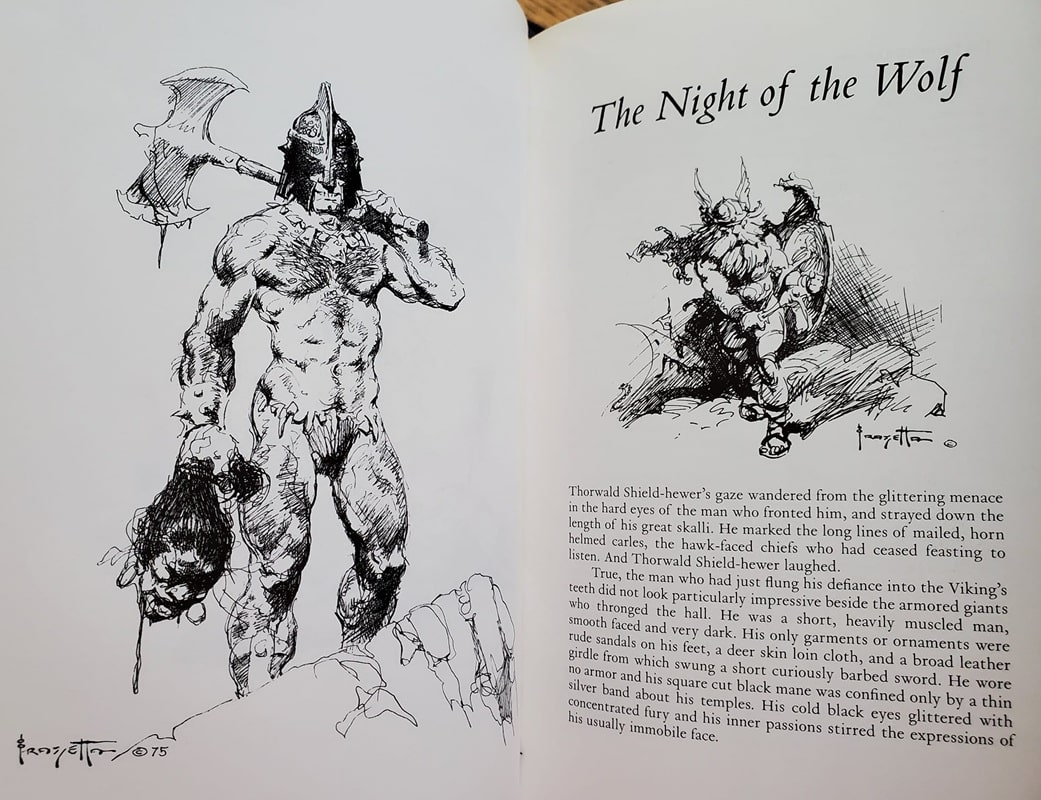

From The Ultimate Triumph: The Heroic Fiction of Robert E. Howard. Art by Frazetta
Robert E. Howard’s boxing stories may be his least read, because he’s so well known for Conan, Kull, Solomon Kane, Bran Mak Morn, El Borak, and several “Weird West” tales (a sub-genre that he is sometimes credited as the originator of).
But the boxing stories are excellent, too! They also include more humor than many of his other works (excepting the stories from A Gent from Bear Creek). Several of the “Sailor” Dennis Dorgan tales were not published during Robert’s lifetime, and those that were published were done so under his pseudonym, Patrick Ervin.
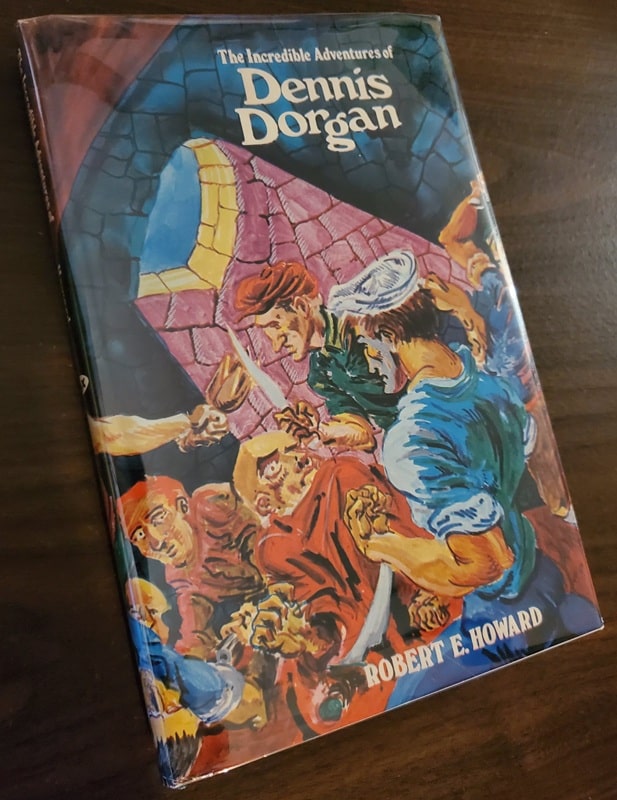 The Incredible Adventures of Dennis Dorgan (Fax Collector’s Editions, January 1, 1974))
The Incredible Adventures of Dennis Dorgan (Fax Collector’s Editions, January 1, 1974))
In December 2022 I received the download files for “The Black Stone,” by Robert E. Howard. This dramatic presentation, recorded by the inimitable H.P. Lovecraft Historical Society, may be (and please correct me if I’m wrong) the first time they have recorded an REH story. I couldn’t wait to listen to it! This is one of my favorite short stories.
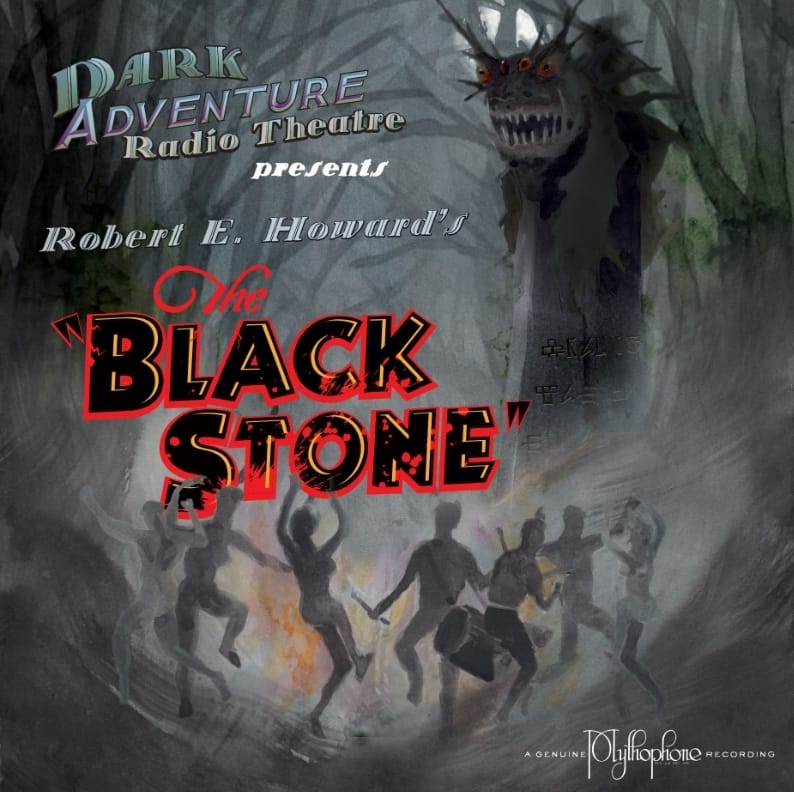 Robert E. Howard’s The Black Stone (H.P. Lovecraft Historical Society, December 2022)
Robert E. Howard’s The Black Stone (H.P. Lovecraft Historical Society, December 2022)
Robert E. Howard was an incredible innovator of sword-and-sorcery, weird fiction, horror, boxing, action/adventure, western, weird west stories, and more, as well as an equally impressive collection poems and verse. And he did almost all of it in a ten-year period from about age 20 to his passing at age 30, pounding away on an Underwood typewriter in a cramped, screened-in porch. I marvel at what he accomplished, and I wonder at what might have been.
If you are interested in the man and his life, I highly recommend Blood and Thunder, by Mark Finn.

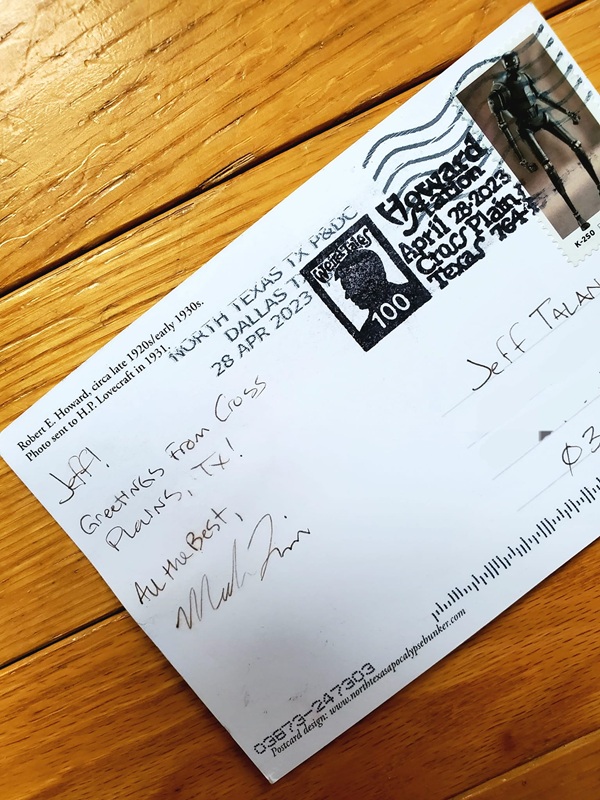
Robert E. Howard postcard
I never imagined that a postcard would be sent to me from Robert E. Howard’s home town of Cross Plains, TX. And during the 100-year anniversary of Weird Tales magazine, no less! I am ever grateful to my dog brother, Mark Finn, for making this possible.
I first met Mark after I’d read his stellar biography Blood & Thunder. I wanted to express my gratitude and appreciation for his incredible work, and I soon learned (surprise, surprise; or, “surprize,” as REH spelled it) that he was a fellow tabletop RPG enthusiast and comic book fan. So, thank you, Mark! By this postcard you rule!
Jeffrey P. Talanian’s last article for Black Gate was a review of The Eye of Sounnu by Schuyler Hernstrom. He is the creator and publisher of the Hyperborea sword-and-sorcery and weird science-fantasy RPG from North Wind Adventures. He was the co-author, with E. Gary Gygax, of the Castle Zagyg releases, including several Yggsburgh city supplements, Castle Zagyg: The East Mark Gazetteer, and Castle Zagyg: The Upper Works. Read Gabe Gybing’s interview with Jeffrey here, and follow his latest projects on Facebook and at www.hyperborea.tv.
Was Don Newcombe a Hall of Famer? – Spring means Baseball
 I have occasionally strayed off topic here at Black Gate, KISS, the Beach Boys, Humphrey Bogart…stuff like that. I played tee-ball as a tyke and have loved baseball my whole life. With a new season dawning (one in which my beloved Dodgers are the reigning World Series champs for the fourth time since I was born), I wanted to talk baseball. And I think that sharing about Don Newcombe is the way to do it.
I have occasionally strayed off topic here at Black Gate, KISS, the Beach Boys, Humphrey Bogart…stuff like that. I played tee-ball as a tyke and have loved baseball my whole life. With a new season dawning (one in which my beloved Dodgers are the reigning World Series champs for the fourth time since I was born), I wanted to talk baseball. And I think that sharing about Don Newcombe is the way to do it.
In 1949’s (sappy) It Happens Every Spring, Ray Milland’s chemistry professor suffers through his life half of the year, to get to baseball season.
Lord Tenneyson said ‘In the Spring a young man’s fancy lightly turns to thoughts of love.’ For a long time, it was baseball, not love, that young men thought of in American Spring.
When Spring Training would roll around in Florida (and then later, also in Arizona), I used to say “If they’re playing baseball somewhere, there’s till some hope for the world.” I’m not sure I believe that in these messed-up days. But the Dodgers (the epitome of a small-market, hard-working franchise, competing against big city, big money teams – HA HA HA) are working out and playing games in Arizona. It’s baseball season, which helps me ignore that my Ohio wind chill is 15 degrees right now.
The Dodgers and Yankees met in the World Series in 1947, 1949, 1952, 1953, 1955 and 1956. It was a glorious era for NYC baseball (and the Giants were a powerhouse as well), though Brooklyn managed to win only the 1955 matchup.
The greatest advantage that the Yankees had was their starting pitching. Whether it was Eddie Lopat, Allie Reynolds, Whitey Ford, Bob Kuzava or Don Larsen, the Bronx Bombers always seemed to come up with somebody in big moments (if not for Cookie Lavagetto, Bill Bevens would be included on that list).
 Rick Monday, Newcombe, Sandy Koufax, and Steve Garvey
Rick Monday, Newcombe, Sandy Koufax, and Steve Garvey
During this era, Don Newcombe rose above other Dodger would-be aces such as Carl Erskine, Ralph Branca and Johnny Podres (though the latter certainly carried the flag in the 1955 Series). Big Newk missed the 1952 and 1953 seasons, as he was serving his country, fighting in Korea. And his 1954 season was a poor one: it took him a year to get back to form after being released from service.
But from 1949-1951 and 1955-1956, Newcombe went a combined 103-40, with 92 complete games. Those are some impressive numbers for the 1949 Rookie of the Year.
However, he got a reputation as a choker in big games. He went all ten innings against the Phillies on the final day of the 1950 season, with the Dodgers needing a win to force a playoff. But he gave up a three run homer to Dick Sisler in the top of the tenth in the season-ending 4-1 loss (which would have been a win if third base coach Milt Stock had simply held Cal Abrams at third in the bottom of the ninth).
He carried a 4-1 lead into the ninth inning of that famous game three playoff against the Giants in 1951. But he couldn’t hold on and he had been relieved by Ralph Branca when Bobby Thomson hit the home run heard round the world.
And in three World Series’, he just couldn’t get the job done for the Dodgers. He started 5 games, going 0-4 with an ERA of 8.59 and lasting about 4 innings a start. Dominating regular season, poor post-season: Shades of a great lefty named Clayton Kershaw, several decades and thousands of miles West, later (Kershaw is my second-favorite Dodger, after Jackie Robinson).
In 1956, he won the (very first) Cy Young Award and the NL MVP, going 27-7. But in the World Series he couldn’t make it out of the second inning of game two or the fourth in game seven. His drinking more directly impacting his performance, as well as his shoulder wearing out from the overuse, his career was effectively done, and he went a combined 37-42 in the four years after that Cy Young season.
He spent 1961 in the minors and he finished in Japan in 1962, as a first baseman. Newcombe was a career.268 batter, with 7 homers in 1955. He could have been a major league hitter.
A Trailblazer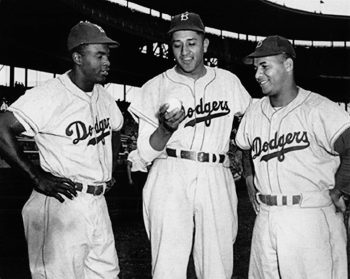 Newcombe was one of the first black players signed by the Dodgers. He and Roy Campanella played with Nashua of the New England League (B) in 1946. Newcombe returned there in 1947 (striking out 186), while Campanella played at AAA Montreal, and Jackie Robinson changed the world in Brooklyn.
Newcombe was one of the first black players signed by the Dodgers. He and Roy Campanella played with Nashua of the New England League (B) in 1946. Newcombe returned there in 1947 (striking out 186), while Campanella played at AAA Montreal, and Jackie Robinson changed the world in Brooklyn.
Newcombe was dominant in his two years at Nashua, going 33-10 with an ERA well under 3. He probably would have played in AA ball in 1947 but the Dodgers’ two AA teams were in the South and not yet ready to be integrated. Apparently AAA wasn’t the best option, as it had been for Robinson and Campanella.
In 1948 he went 17-6 at AAA Montreal (while Campy began his Hall of Fame career in Brooklyn). He threw his only no hitter, won three games in the first round of the International League Playoffs (losing another game 0-1), and then won a game in the Governor’s Cup series. He then went 1-1 as the Royals defeated the Dodgers’ other AAA team (St. Paul) for the Junior World Series. Newcombe dominated AAA.
He got called up to the Dodgers early in 1949. He was only the second black pitcher in the major leagues and the first good one (Dan Bankhead pitched in four games for the Dodgers in 1947).
Jackie Robinson deserves every praise and accolade. But Don Newcombe was the first man to prove an African-American could pitch in the major leagues. He hit 3 batters as a rookie, and 6 his third year. But there were no racial issues about a black pitcher hitting a white batter. It didn’t hurt that he was 6’-4”, 220. But his success, and his acceptance on the field, made him a pioneer, though he never received the credit he deserved for that.
Close to Cooperstown His raw numbers are lacking in HoF dazzle: 153-96, with a 3.57 ERA.
His raw numbers are lacking in HoF dazzle: 153-96, with a 3.57 ERA.
He does have one Rookie of the Year, one MVP, and one Cy Young award, along with one World Series ring, and he was a four-time All Star. That’s what is. But we can also look at a few ‘What ifs.’
There are four distinct elements of his career that might have changed his possible Hall of Fame path:
1) Newcombe’s first two seasons were spent with the Newark Eagles in the Negro Leagues. It’s fair to say that he might have developed more quickly with two years in the Dodgers’ system. But he was only 18 that first year. Maybe the hard experience of playing in the Negro Leagues had some benefits for him.
2) He lost a season, maybe two, to baseball’s color barrier. It’s a foregone conclusion that he would have done better than Dan Bankhead did. He was 17-8 with 19 complete games and a league-leading 5 shutouts as a 23 year-old rookie. That’s a pretty good start.
3) And he lost nearly two peak seasons to the Korean War. Plus his first year back was basically a lost one as well. He easily could have had three more 20 win/single-digit loss seasons.
Give him 60 more wins for the Korean War years, and there would be a dozen pitchers with fewer wins who are in the Hall of Fame, including two Dodgers (Don Drysdale, Dazzy Vance).
4) Finally, had Newcombe pitched better in the World Series (especially in 1956), he might well have continued on as one of the NL’s top pitchers, instead of spiraling deep into alcoholism.
With two more outs, it’s Newcombe, not Bobby Thomson, who is the hero of the 1951 NL playoff series (playoffs only occurred if two teams were tied at the end of the season. MLB did not adopt divisions and regular playoffs until 1969).
And with post-season success, the media might have lightened up (racism was certainly involved, but everyone loves a winner – somewhat). And he might have been more at ease if he wasn’t so clenched up inside from the criticism (Conversely, Newcombe was not appropriately praised for when he excelled, which he often did.).
That fourth factor (the postseason) was certainly within his control. But if the first three things had gone a bit differently, Don Newcombe might well be in the Hall of Fame today.
He and Justin Verlander are the only players to win the Rookie of the Year, Cy Young and MVP awards. That speaks volumes.
He Was Criticized Unjustly in the Press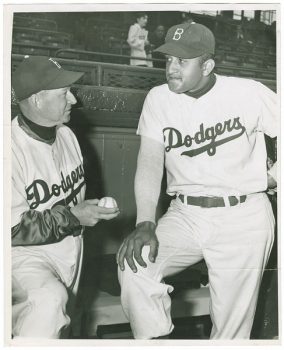 If you’ve read books about Jackie Robinson, you know the abuse that racist sportswriters (and fans, and players, and…) heaped upon him. Other early trailblazers like Newcombe were also the subject of vitriol. On September 14, 1951, Tommy Holmes of the Brooklyn Eagle – under the headline Is Newcombe Ailment a Case of Imaginatis? – wrote a scathing, rumor and innuendo-filled attack on Newcombe, which never would have been written about a white pitcher. Excerpts can be found in Jon Weisman’s book on Dodgers pitching, Brother in Arms. It’s a pathetic piece of non-objective ‘journalism’.
If you’ve read books about Jackie Robinson, you know the abuse that racist sportswriters (and fans, and players, and…) heaped upon him. Other early trailblazers like Newcombe were also the subject of vitriol. On September 14, 1951, Tommy Holmes of the Brooklyn Eagle – under the headline Is Newcombe Ailment a Case of Imaginatis? – wrote a scathing, rumor and innuendo-filled attack on Newcombe, which never would have been written about a white pitcher. Excerpts can be found in Jon Weisman’s book on Dodgers pitching, Brother in Arms. It’s a pathetic piece of non-objective ‘journalism’.
For example, Holmes asserts that ‘experts’ expected Newcombe to win 30 games that season, and instead of doing so, he was complaining about a sore arm. Dizzy Dean won 30 games in 1934. Exactly one pitcher has done so (that’s a good trivia question – go look it up) in the 90 seasons since. Holmes wrote an ‘uppity negro’ piece on Newcombe, and it was wrong in EVERY way.
As Chuck Dressen desperately tried to stop the Dodgers’ epic collapse (they led by 13 games in August), he kept throwing a tired (Newk led the team in innings pitched and had 18 complete games) and sore-armed Newcombe out there.
Newcombe started on September 17th, lasting only 6 and two-thirds. On the 22nd, he only made it 5 innings. On the 26h, he threw a complete game in a 15-5 win (you think Dressen couldn’t have given him a few innings off in a ten run win?). Only three days later on the 29th, it was a complete game shutout. And the very next day in the must-win season-finale, Dressen had him pitch 5 and two-thirds innings of relief. Big Newk gave up one hit and no runs as the Dodgers won 9-8, forcing the three-game playoff that made Bobby Thomson a baseball legend.
On only two days rest, after that heavy workload, Newcombe pitched 8 and one-third innings in that third-game loss. He had performed an even more impressive feat of carrying the team to the final day of the season the year before.
Holmes and other writers (and NYC baseball writers were celebrities in their day) wrote about Newcombe from their racist beliefs, not as objective observers. He was a workhorse who carried Dodgers teams to the brink of championships.
Alcoholism and RebirthNewcombe succumbed to life-long alcoholism. While he made the choice to drink, the unrelenting (and unreasonable) pressure he was subjected to, along with racist abuse, surely contributed to its severity. He declared bankruptcy in 1965 (he sold his World Series ring, which future Dodgers owner Peter O’Malley later bought and returned to him), and later divorced.
But he stopped drinking, straightened out his life, and was the Dodgers’ Director of Community Relations for over forty-five years, passing away in 2019. He became a leader in several organizations inside and outside of baseball, related to beating alcoholism.
Newcombe reflected on his career being cut short:
“I was only 34, but the alcohol had taken its toll. I think it shortened my major-league career by about six or seven years. I regret that I didn’t take better care of myself in the latter part of my career because I would like to have made the Hall of Fame, where I think I belong.”
Don Newcombe was haunted by his own demons, but found his own personal redemption. And with better handling on the Dodgers’ part; a few more seasons in the majors; and some more self-control, he could well be in Cooperstown today.
Newcombe recounted a conversation he had with Martin Luther King Jr.:
“Do you want to know what Jackie’s impact was? Well, let Martin Luther King tell you. In 1968, Martin had dinner in my house with my family. This was 28 days before he was assassinated. He said to me, ‘Don, I don’t know what I would have done without you guys setting up the minds for people for change. You, Jackie (Robinson) and Roy (Campanella) will never know how easy you made it for me to do my job.’ Can you imagine that? How easy we made it for Martin Luther King?”
He was an under-appreciated trailblazer, who rewrote his own personal story and played a major part in Dodgers’ history, on and off the field. And he wasn’t as far from a Hall of Fame career as one might think. It’s a shame no one worked with him to write a biography. It would have been a terrific book. He passed in 2019.

Bob Byrne’s ‘A (Black) Gat in the Hand’ made its Black Gate debut in 2018 and has returned every summer since.
His ‘The Public Life of Sherlock Holmes’ column ran every Monday morning at Black Gate from March, 2014 through March, 2017. And he irregularly posts on Rex Stout’s gargantuan detective in ‘Nero Wolfe’s Brownstone.’ He is a member of the Praed Street Irregulars, founded www.SolarPons.com (the only website dedicated to the ‘Sherlock Holmes of Praed Street’).
He organized Black Gate’s award-nominated ‘Discovering Robert E. Howard’ series, as well as the award-winning ‘Hither Came Conan’ series. Which is now part of THE Definitive guide to Conan. He also organized 2023’s ‘Talking Tolkien.’
He has contributed stories to The MX Book of New Sherlock Holmes Stories — Parts III, IV, V, VI, XXI, and XXXIII.
He has written introductions for Steeger Books, and appeared in several magazines, including Black Mask, Sherlock Holmes Mystery Magazine, The Strand Magazine, and Sherlock Magazine.
Half a Century of Reading Tolkien: Part Three – The Two Towers by JRR Tolkien
 Gollum sat up again and looked at him under his eyelids. ‘He’s over there,’ he cackled. ‘Always there. Orcs will take you all the way. Easy to find Orcs east of the River. Don’t ask Sméagol. Poor, poor Sméagol, he went away long ago. They took his Precious, and he’s lost now.’
Gollum sat up again and looked at him under his eyelids. ‘He’s over there,’ he cackled. ‘Always there. Orcs will take you all the way. Easy to find Orcs east of the River. Don’t ask Sméagol. Poor, poor Sméagol, he went away long ago. They took his Precious, and he’s lost now.’
‘Perhaps we’ll find him again, if you come with us,’ said Frodo.
‘No, no, never! He’s lost his Precious,’ said Gollum.
Sméagol from The Taming of Sméagol of The Two Towers
When I was younger, The Two Towers (1954) seemed to suffer from middle-book syndrome: the bits after the start of series that had to be trudged through in order to reach the exciting end. Not all of it — it does feature a big battle complete with magic and explosives — but Frodo, Sam, and Smeagol’s trek to Mordor sometimes felt as arduous for me to read as it was for them to cross the swamp and slag heaps. Now, I believe The Two Towers, and the second half, The Ring Goes East, is the heart of the whole series. Nowhere does Prof. Tolkien speak more clearly on the weight of war, the burden and necessity of standing against evil, and the eroding effects of that duty.
The Two Towers has some of the most powerful writing in all the trilogy. There are several passages that have never failed to move me. That one of the most powerful of these lines was taken away from Sam carelessly given to Bad Faramir (more on that atrocity later), is one of the greatest crimes among the many I hold against Peter Jackson.
It’s the book of the trilogy that contains the most obvious references to Tolkien’s own service at the Somme in 1916. In the comments on my first article in this series, Half a Century of Reading Tolkien: Part One, K. Jespersen wrote that the books tasted of ashes, a flavor he linked directly to the First World War. I don’t tastes ashes in the books myself, but there are chapters redolent of them.
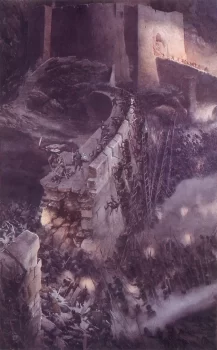 Battle of the Hornburg by Alan Lee
Battle of the Hornburg by Alan Lee
Again, for the uninitiated, a brief summary is in order. Following the disastrous events at the end of The Fellowship of the Ring, the Nine Walkers are split into three groups. Merry and Pippin, captured by a band of orcs, are dragged westward toward Isengard and Saruman. Frodo, with Sam insisting on accompanying, after Boromir’s attempt to seize the Ring, heads eastward toward Mordor and Mount Doom. Aragorn decides that Frodo and Sam might succeed on their own, but unless he, Legolas, and Gimli follow the other two hobbits, they will suffer torment and death.
The book’s first half, The Treason of Isengard, switches back and forth between Merry and Pippin’s travails, and Aragorn and his companions’ assorted adventures across Rohan. The two parties are reunited a week later after the return of Gandalf, the introduction of the Ents, great tree-like beings, and the Battle of the Hornburg (aka, the Battle of Helm’s Deep). The last is huge and murky in Peter Jackson’s film version, but on the page is tighter and far more tactically coherent.
The Ring Goes East, as I said, is the real heart of the trilogy. Frodo takes leave of his companions because he knows he must take the Ring to Mount Doom and that no one else can resist its malignant gravity. It also introduces Gollum/Sméagol. Gollum had been tracking the Nine Walkers from at least Moria, but he remained off stage. Now, he is captured and bound to Frodo after being made to swear on the Ring. Gollum, who calls the Ring his Precious, bore it for centuries. It twisted and hollowed him out, eating away at his mind and his soul. Now, he would do anything for its owner and, simultaneously, anything to repossess it.
Together, the trio cross the Dead Marshes, site of a great battle. Fought thousands of years before, images of the fallen, man, elf, and orc alike, linger on just below the surface of the marsh’s waters. Ghost lights flit over them, luring the unwary to their doom. Tolkien supposed that the battlefields of the Somme lived on in the Dead Marshes. He described how shell holes would be filled with water and the dead of both sides floated in them.
Clearing the swamps and finding Mordor’s main gate too formidable an obstacle, they head south to a secret way through the mountains Gollum claims can take them safely into Mordor. They meet their first men of Gondor, see an oliphaunt, witness the sallying forth of one of Sauron’s armies out of citadel so evil the ground around it is cursed, before starting on Gollum’s secret way. Things do not go well for any of them from there.
 Riders of Rohan by Angus McBride
Riders of Rohan by Angus McBride
The Two Towers expands the reader’s vision of Middle-earth way beyond anything Tolkien displayed previously. The only human civilizations shown were the towns of Bree and Esgaroth. Now, we get to cross the expanse of the land of Rohan and meet its people, the Rohirrim. They been described as “Anglo-Saxon’s on horses,” which is reinforced with their Saxon-derived names such as Théoden, Éomer, and Éowyn.
Their horses were of great stature, strong and clean-limbed; their grey coats glistened, their long tails flowed in the wind, their manes were braided on their proud necks. The Men that rode them matched them well: tall and long-limbed; their hair, flaxen-pale, flowed under their light helms, and streamed in long braids behind them; their faces were stern and keen. In their hands were tall spears of ash, painted shields were slung at their backs, long swords were at their belts, their burnished shirts of mail hung down upon their knees.
It falls to the resurrected Gandalf to restore the king’s spirit so he can rouse his people and his forces against those of Saruman. Saruman once led the White Council against the resurgence of Sauron, but he came to betray them. Now he plans to conquer Rohan, Gondor’s only ally, and seize the Ring for himself.
And rouse the king, Gandalf does, which means we get one of Tolkien’s great epic moments. He doesn’t always show you the action in the books. We get the death of Boromir, Gandalf’s battle against the balrog, and the destruction of Isengard all second hand. Not this time. Instead, we get s brutal night battle against terrible odds and in harrowing detail, alleviated only a little by Gimli and Legolas’s banter over who’s killed more enemies.
It was now past midnight. The sky was utterly dark, and the stillness of the heavy air foreboded storm. Suddenly the clouds were seared by a blinding flash. Branched lightning smote down upon the eastward hills. For a staring moment the watchers on the walls saw all the space between them and the Dike lit with white light: it was boiling and crawling with black shapes, some squat and broad, some tall and grim, with high helms and sable shields. Hundreds and hundreds more were pouring over the Dike and through the breach. The dark tide flowed up to the walls from cliff to cliff. Thunder rolled in the valley. Rain came lashing down.
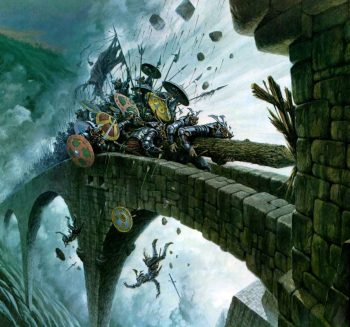 The Battle of Helm’s Deep by Darrell K Sweet
The Battle of Helm’s Deep by Darrell K Sweet
Arrows thick as the rain came whistling over the battlements, and fell clinking and glancing on the stones. Some found a mark. The assault on Helm’s Deep had begun, but no sound or challenge was heard within; no answering arrows came.
The assailing hosts halted, foiled by the silent menace of rock and wall. Ever and again the lightning tore aside the darkness. Then the Orcs screamed, waving spear and sword, and shooting a cloud of arrows at any that stood revealed upon the battlements; and the men of the Mark amazed looked out, as it seemed to them, upon a great field of dark corn, tossed by a tempest of war, and every ear glinted with barbed light.
Brazen trumpets sounded. The enemy surged forward, some against the Deeping Wall, others towards the causeway and the ramp that led up to the Hornburg-gates. There the hugest Orcs were mustered, and the wild men of the Dunland fells. A moment they hesitated and then on they came. The lightning flashed, and blazoned upon every helm and shield the ghastly hand of Isengard was seen. They reached the summit of the rock; they drove towards the gates.
Then at last an answer came: a storm of arrows met them, and a hail of stones. They wavered, broke, and fled back; and then charged again, broke and charged again; and each time, like the incoming sea, they halted at a higher point. Again trumpets rang, and a press of roaring men leaped forth. They held their great shields above them like a roof, while in their midst they bore two trunks of mighty trees. Behind them orc-archers crowded, sending a hail of darts against the bowmen on the walls. They gained the gates. The trees, swung by strong arms, smote the timbers with a rending boom. If any man fell, crushed by a stone hurtling from above, two others sprang to take his place. Again and again the great rams swung and crashed.
The Treason of Isengard was probably my favorite part of The Lord of the Rings when I was young. It’s got action and adventure and lots and lots of cool things. I remember me and my dad debating exactly what Orthanc and Meduseld looked like. Gandalf reappears and we learn about the palantír. The reunion of Merry and Pippin with Gandalf and company in Isengard is one of the funniest moments in the books. It all terrific, but it’s in The Ring Goes East, though, where the deepest themes of The Lord of Rings are developed.
Frodo and Sam march off toward Mordor knowing they probably won’t return, but they know it must be done. Defending what is right comes with a cost that leaves no one unchanged. It is too easy to fall in love with bloody deeds for themselves and forsake the things that might be lost.
In the middle of an attack by a band of Gondorian rangers on a force of enemy soldier, Sam meets the enemy up close for the first time.
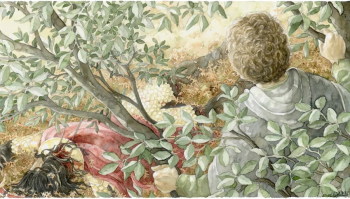 The Fallen Southron by Anke Eißmann
The Fallen Southron by Anke Eißmann
Sam, eager to see more, went now and joined the guards. He scrambled a little way up into one of the larger of the bay-trees. For a moment he caught a glimpse of swarthy men in red running down the slope some way off with green-clad warriors leaping after them, hewing them down as they fled. Arrows were thick in the air. Then suddenly straight over the rim of their sheltering bank, a man fell, crashing through the slender trees, nearly on top of them. He came to rest in the fern a few feet away, face downward, green arrow-feathers sticking from his neck below a golden collar. His scarlet robes were tattered, his corslet of overlapping brazen plates was rent and hewn, his black plaits of hair braided with gold were drenched with blood. His brown hand still clutched the hilt of a broken sword.
It was Sam’s first view of a battle of Men against Men, and he did not like it much. He was glad that he could not see the dead face. He wondered what the man’s name was and where he came from; and if he was really evil of heart, or what lies or threats had led him on the long march from his home; and if he would not really rather have stayed there in peace –
To take these words and give them to anyone other than an innocent gardener from the Shire is practically sacrilegious. I imagine this is how Tolkien must have felt on seeing his first dead Germans in the mud of the front. These words are at the core of the humanist heart of the books. War is a engine that sucks men in and grinds out corpses. It might be necessary, but it is horrible and not something to be cherished as many in Gondor have come to. Instead, the value of what is being defended must never be forgotten.
‘For myself,’ said Faramir, ‘I would see the White Tree in flower again in the courts of the kings, and the Silver Crown return, and Minas Tirith in peace: Minas Anor again as of old, full of light, high and fair, beautiful as a queen among other queens: not a mistress of many slaves, nay, not even a kind mistress of willing slaves. War must be, while we defend our lives against a destroyer who would devour all; but I do not love the bright sword for its sharpness, nor the arrow for its swiftness, nor the warrior for his glory. I love only that which they defend: the city of the Men of Númenor; and I would have her loved for her memory, her ancientry, her beauty, and her present wisdom. Not feared, save as men may fear the dignity of a man, old and wise.
In The Hobbit, Gollum was simply a twisted little monster below Goblin Town who riddled with Bilbo. Here, he’s become Sméagol again, a pathetic creature torn apart by possessing the Ring for so many years and the hold it still holds over him. Not much of Sméagol remains after five hundred years of possessing the Ring, and as he describes it, that part of himself went away a long time ago. When Sméagol is first captured, Frodo recalls the words of Gandalf about how Bilbo’s was stayed by pity and mercy from slaying Gollum and finds the same pity in his own heart. Come the third book, The Return of the King, even after Sméagol has betrayed them and tried to kill them, Sam can’t bring himself to kill him. He’s enough of a tragic creature that Tolkien is able to convince Frodo, and more importantly, the reader, that he might still be something worth saving.
Frodo and Sam are the most developed characters in the trilogy. Tolkien doesn’t go in for all that much interiority with any of the other characters in his books. From their conversations and from their thoughts, Frodo and Sam take on much more life than anyone else. Together, they get to express one of the most profound things in The Lord of the Rings.
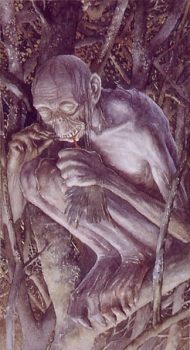 Gollum by Alan Lee
Gollum by Alan Lee
‘And we shouldn’t be here at all, if we’d known more about it before we started. But I suppose it’s often that way. The brave things in the old tales and songs, Mr. Frodo: adventures, as I used to call them. I used to think that they were things the wonderful folk of the stories went out and looked for, because they wanted them, because they were exciting and life was a bit dull, a kind of a sport, as you might say. But that’s not the way of it with the tales that really mattered, or the ones that stay in the mind. Folk seem to have been just landed in them, usually – their paths were laid that way, as you put it. But I expect they had lots of chances, like us, of turning back, only they didn’t. And if they had, we shouldn’t know, because they’d have been forgotten. We hear about those as just went on – and not all to a good end, mind you; at least not to what folk inside a story and not outside it call a good end. You know, coming home, and finding things all right, though not quite the same – like old Mr. Bilbo. But those aren’t always the best tales to hear, though they may be the best tales to get landed in! I wonder what sort of a tale we’ve fallen into?’
‘I wonder,’ said Frodo. ‘But I don’t know. And that’s the way of a real tale. Take any one that you’re fond of. You may know, or guess, what kind of a tale it is, happy-ending or sad-ending, but the people in it don’t know. And you don’t want them to.’
‘No, sir, of course not. Beren now, he never thought he was going to get that Silmaril from the Iron Crown in Thangorodrim, and yet he did, and that was a worse place and a blacker danger than ours. But that’s a long tale, of course, and goes on past the happiness and into grief and beyond it – and the Silmaril went on and came to Eärendil. And why, sir, I never thought of that before! We’ve got – you’ve got some of the light of it in that star-glass that the Lady gave you! Why, to think of it, we’re in the same tale still! It’s going on. Don’t the great tales never end?’
‘No, they never end as tales,’ said Frodo. ‘But the people in them come, and go when their part’s ended. Our part will end later – or sooner.’
 At the Cross Roads by Ted Nasmith
At the Cross Roads by Ted Nasmith
I love Sam’s realization that he personally is an appendix to a tale going back thousands of years. He’s reached this wonderful understanding that he’s in the middle of a story and then it suddenly occurs to him that he’s not even in his own story, but just one more leg on someone else’s. Of course all this gets mangled and bastardized in the movie.
Which brings me to Peter Jackson’s movie, which feels very much like someone other than Tolkien’s story. I’ll only bring up a few of the things that leave me enraged watching his The Two Towers. The easiest one is which two towers the title refers to. The book’s title refers to Orthanc and Minas Morgul. Instead, Jackson has Saruman deliver a line about a new power made of the union of two towers, by which he means Orthanc and Barad Dur. I don’t know if I can say it’s an important thing, but I can say it’s an annoying thing.
Aside from Aragorn falling off a cliff, more bad jokes — dwarf tossing (again!), bad soup, and others — and buffoonishness from Merry and Pippin, there’s the case of Bad Faramir. In the book, Faramir is a throwback to the noblest Men of the West. Unlike his brother Boromir, he fights for the good things, not for the accolades or the desire to perform heroic deeds. He is not tempted by the Ring and helps the hobbits on their way.
Jackson’s Faramir, like Aragorn before him, can’t simply be a hero. He must be flawed and learn something or other before he can achieve his heroic status. That neither he, nor Boromir, are fair skinned with dark hair only makes matters worse.
I’m not that thrilled with how the Battle of Helm’s Deep is handled in the film. In the book, Théoden brings his forces to the fortress for clearly laid out strategic reasons. Here, it’s made out to be some sort of foolish, poorly thought out action. Aragorn argues with him about sending out messengers for aid, something no one in the book would imagine saying for a moment.
The battle never seems as desperate or grim as Tolkien makes it out to be (Haldir, the elf with the five o’clock shadow, getting killed doesn’t count because he’s barely a character). I struggle to image Orlando Bloom’s Legolas acting like this:
He climbed up and found Legolas beside Aragorn and Éomer. The elf was whetting his long knife. There was for a while a lull in the assault, since the attempt to break in through the culvert had been foiled.
‘Twenty-one!’ said Gimli.
‘Good!’ said Legolas. ‘But my count is now two dozen. It has been knife-work up here.’
I can’t bring myself to say anything else about the movie. Yes, we do get to see the Ents destroy Isengard, but even that’s not as cool looking as it’s described in the book. I’m so sick and tired of whining Frodo and the scene with the Ring Wraith and then him threatening Sam makes me nuts. I just tried to watch the animated War of the Rohirrim and I think something broke in my head.
I guess the only thing to do now that I’ve finished The Lord of the Rings is to go to The Silmarillion, The Hobbit, or….Bored of the Rings. Whichever I choose, it’s guaranteed to wash away some of the pain of Jackson’s movie.
Half a Century of Reading Tolkien: Part One
Half a Century of Reading Tolkien: Part Two – The Fellowship of the Ring by JRR Tolkien
Fletcher Vredenburgh writes a column each first Sunday of the month at Black Gate, mostly about older books he hasn’t read before. He also posts at his own site, Stuff I Like when his muse hits him.
There, Wolves: Part II
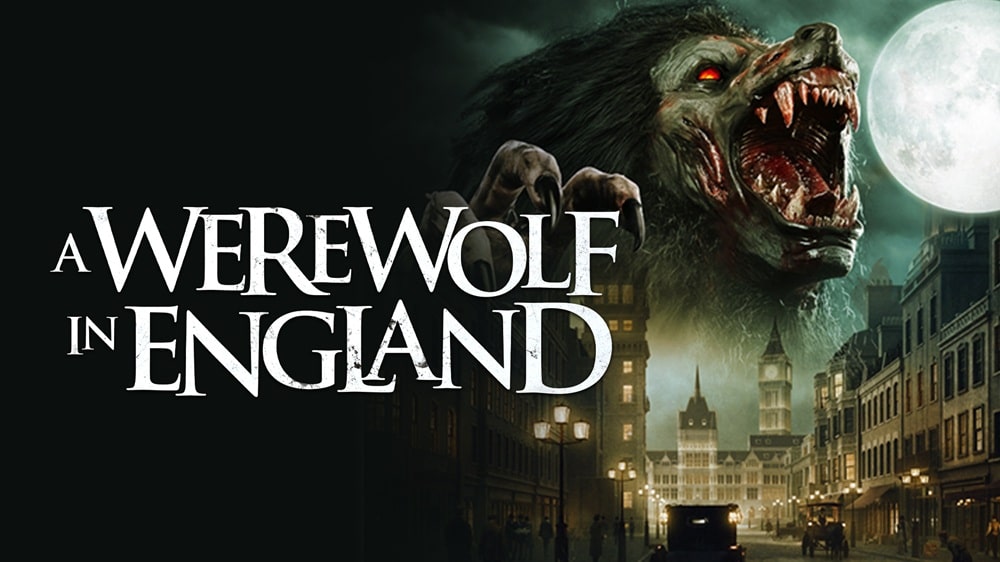 A Werewolf in England (Dark Temple Motion Pictures, 2020)
A Werewolf in England (Dark Temple Motion Pictures, 2020)
A 20 film marathon of werewolf movies I’ve never seen before.
As usual, the films must be free to stream.
I’ve got a bad feeling about this.
A Werewolf in England (2020) PrimeMan or beast? A bunch of hairy honkers.
Howlin’ good time? Hot on the heels of Werewolves Within comes another horror comedy, although this one doesn’t come close to succeeding. It starts well enough, with a title card font reminiscent of the best Bray Studios films, and some gravelly voiced dialects, but it soon regresses into a two-note gag reel of chamber pots and the contents of chamber pots.
Now, I like a good fart or poo joke as much as the next man, but the over-reliance on potty humor soon outstayed its welcome, despite a double dip into demonic diarrhea. There were moments that put me in mind of Motel Hell, but in the end the production was hampered by over saturation (seriously, filter that shit in post), poor sound design and strangely choreographed werewolves.
The beasts, more cuddly than terrifying, could have been really effective with lower lighting and more sparing framing. Oh well — it looked like everyone had fun, and it does feature the line, “I feel a tinglin’ in me nether giblets.”
6/10
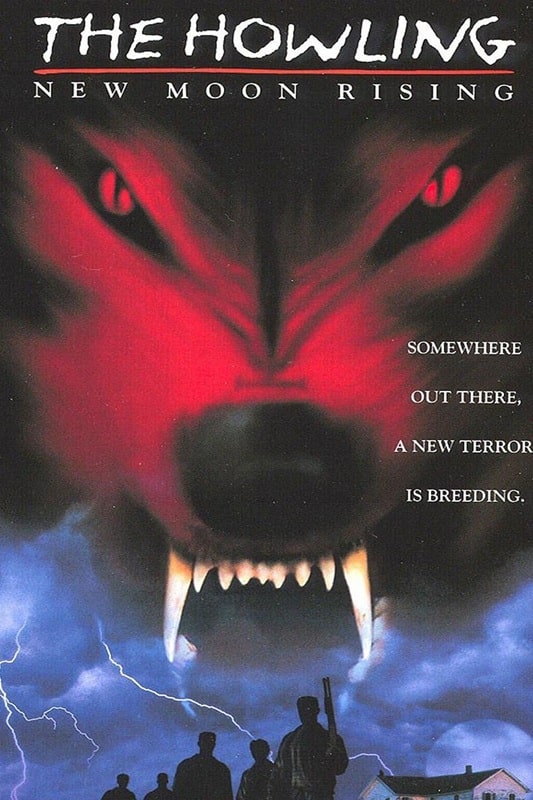
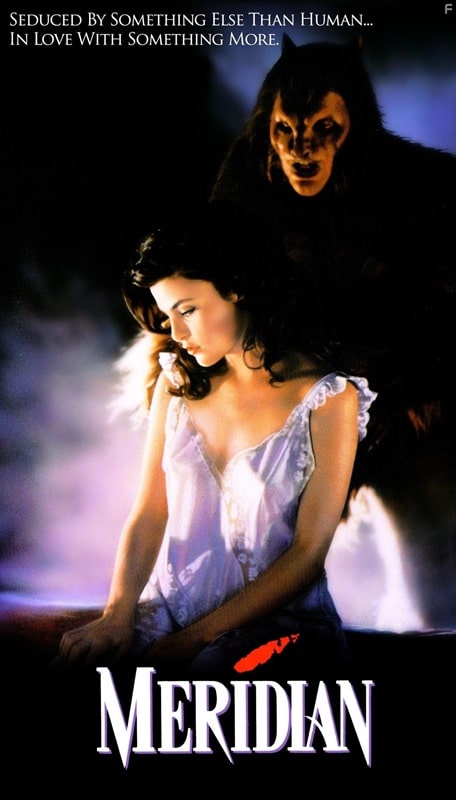
Howling VII: New Moon Rising (New Line Home Video, October 17, 1995)
and Meridian (Full Moon Features, April 13, 1990)
Man or beast? Rubbish practical/CG hybrid for all of 30 seconds at the end.
Howlin’ good time? Good people, if you’ve been reading these reviews, you’ll know I’ve watched some terrible films. You’ll also know that the worst thing a movie can do, in my opinion, is be boring. Forget the fact that this is horribly made, awfully acted, and weaves in footage from the last two films in an attempt to make sense of the story. The first hour of this mess is just unfunny bar regulars line dancing to country music while some bullshit ADR is shoveled on top of the steaming pile of plot. I honestly lost the will to live during this one. Settled for chewing my eyes out.
0/10
Meridian (1990) TubiMan or beast? Nice, practical, beast… wolf… thing.
Howlin’ good time? It’s a Full Moon feature, directed by Charles Band himself and although I think he’s a better producer, this is a nice looking film, suitably gothic for the subject matter. Meridian stars Sherilyn Fenn (and yes, I was a fully carded member of the Cult of Fenn in 1990) in a twist on the Beauty and the Beast story. In fact, it would have been a traditional, romantic ghost/beast story, if not for the unsavoury date rape that kicks off the whole affair.
The beast itself is a curious design, beautifully created by Greg (Lost Boys, Dracula) Cannom, who was definitely enjoying his ‘high brow’ phase. The prosthetics are great, and the body suit is well done; the huge hairy mass on its back is just one of a pair of extraordinary werewolf humps in the film. An interesting watch for purveyors of circus acts, nefarious twins and early 90s bosoms.
7/10
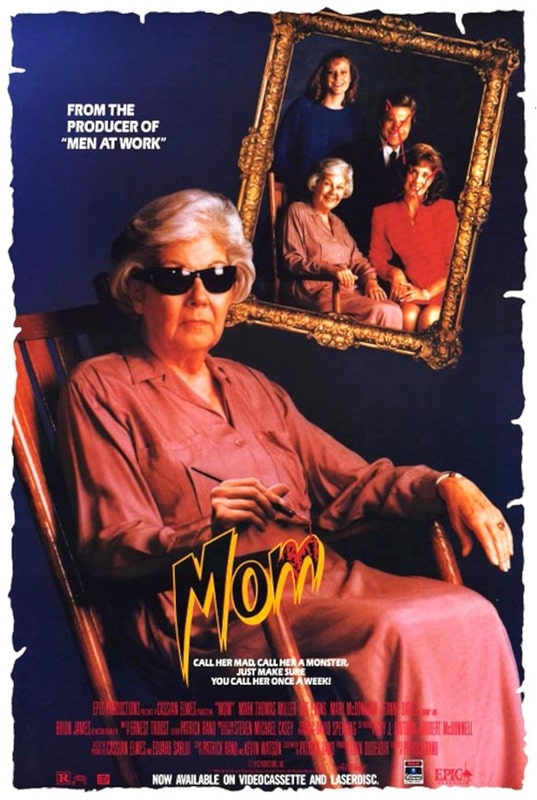
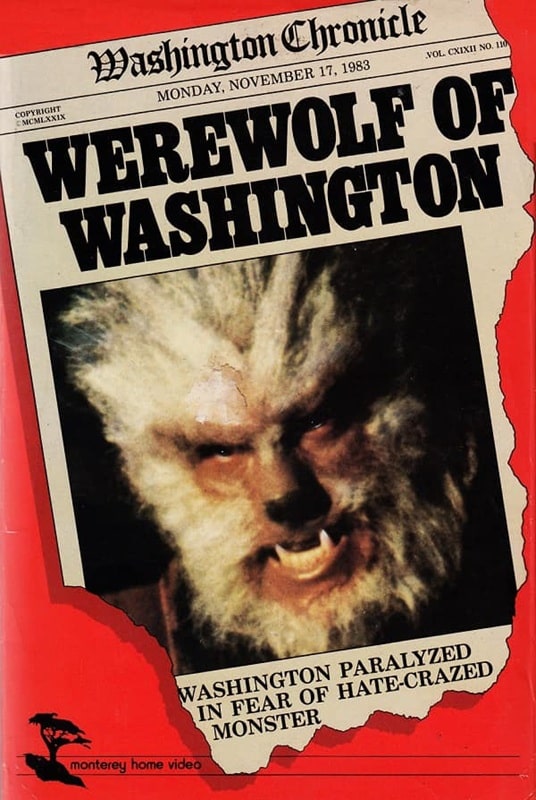
Mom (Epic Productions, June 13, 1991) and Werewolf of Washington (Diplomat Pictures, 1973)
Man or beast? Goofy were-thing.
Howlin’ good time? A 1990s horror film that is so 1990s it hurts. It starts well enough, with the wonderful Brion James as a shady, yellow-eyed drifter being aggressively creepy, and there’s a potentially excellent story to be had when our hero has to deal with his dear old mom turning into a werebeast and eating winos, but it’s not quite as exciting as I had hoped for. The creature itself is only seen in head and shoulder flashes and, although the mid-transformation make up is cool, the final creature looks goofy as all hell — we are talking Rawhead Rex goofy.
Fair to middling.
6/10
Werewolf of Washington (1973) TubiMan or beast? Hairy faced fella.
Howlin’ good time? It’s a scandal that I haven’t seen this before, but I’ve corrected that oversight. Not what I was expecting, this is a political satire wrapped up in a traditional lycanthrope yarn and it’s played for laughs. Skewering Nixon and Watergate, in this flick Dean Stockwell superbly grimaces and gurns as he changes each full moon and makes a meal of the president’s rivals. It’s basically All the President’s Wolfmen. Some genuinely funny moments (a witty script) and remarkable lapses into cinema verité elevate this hokey, bloodless romp into a film that I suspect I shouldn’t have enjoyed as much as I did.
7/10
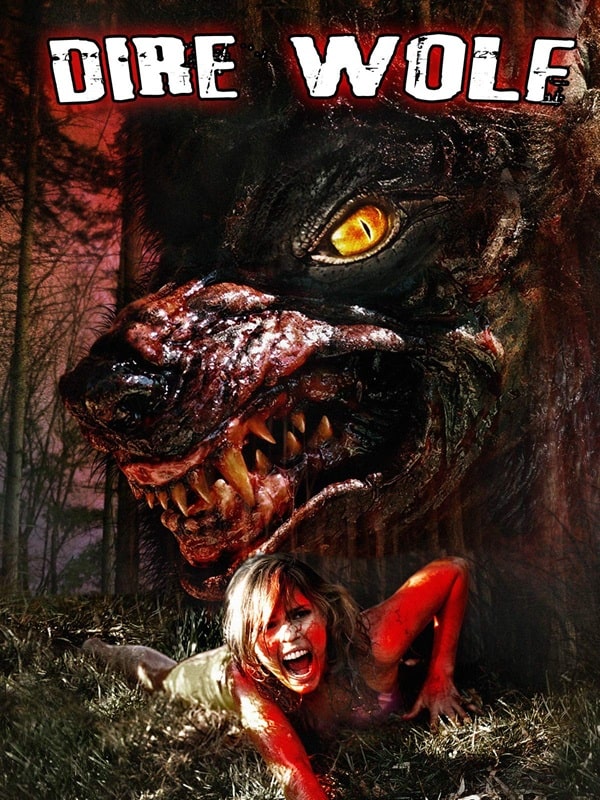 Dire Wolf (Baby Steps Entertainment, 2009)
Dire Wolf (2009) Tubi
Dire Wolf (Baby Steps Entertainment, 2009)
Dire Wolf (2009) Tubi
Man or beast? Wolf/human hybrid.
Howlin’ good time? Bit of a cheat for no. 13, as it’s not strictly a werewolf, but a lab experiment gone wrong. Nothing remarkable about it; it’s typical SyFy fare, a couple of has-beens surrounded by lacklustre actors in a daft plot, with a surprising amount of practical gore. It’s instantly forgettable. However, it did prompt an extraordinary dive into the career of Fred Olen Ray, whom I only really knew for Alienator and Hollywood Chainsaw Hookers. I’m linking the Wikipedia page for his filmography here, as it’s quite the rabbit hole.
Anyhoo – 5/10
Previous Murkey Movie surveys from Neil Baker include:
There, Wolves: Part I
What a Croc
Prehistrionics
Jumping the Shark
Alien Overlords
Biggus Footus
I Like Big Bugs and I Cannot Lie
The Weird, Weird West
Warrior Women Watch-a-thon
Neil Baker’s last article for us was There, Wolves: Part I. Neil spends his days watching dodgy movies, most of them terrible, in the hope that you might be inspired to watch them too. He is often asked why he doesn’t watch ‘proper’ films, and he honestly doesn’t have a good answer. He is an author, illustrator, outdoor educator and owner of April Moon Books (AprilMoonBooks.com).
Cover Reveal: Space Ships! Ray Guns! Martian Octopods!: Interviews with Science Fiction Legends, edited by Richard Wolinsky
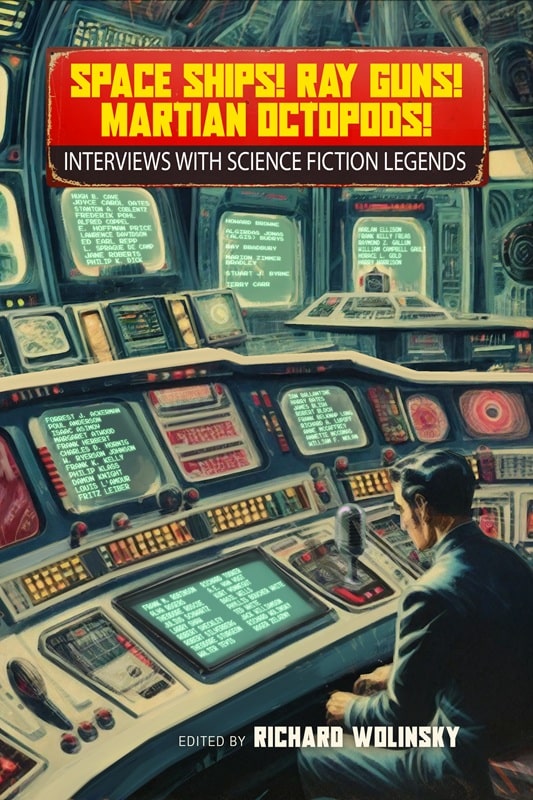 Space Ships! Ray Guns! Martian Octopods!: Interviews with Science Fiction Legends (Tachyon Publications, September 2, 2025). Cover by Yoshi Vu
Space Ships! Ray Guns! Martian Octopods!: Interviews with Science Fiction Legends (Tachyon Publications, September 2, 2025). Cover by Yoshi Vu
At Black Gate, we’re all about science fiction legends. Specifically, science fiction legends who appeared in paperback in spinner racks in the 70s and 80s. Or pulp magazines. Or wrote adventures at the dawn of the role playing industry. You know what, forget all that. We’re not picky.
What makes a true science fiction legend? This is the sort of thing that’s hotly debated on social media, and at science fiction conventions, and in lengthy blog posts titled “Towards a New Science Fiction Canon, Because Yours is Old and Stupid.” But recently, public opinion has shifted. To be a science fiction legend, the most important criteria is that your name looks good in green font on a 50s CRT monitor, preferably in a cool underground bunker. Exactly like the cover of Space Ships! Ray Guns! Martian Octopods!: Interviews with Science Fiction Legends, the upcoming book from Richard Wolinsky and Tachyon Publications.
I’ve spent long hours staring at this cover (by the marvelously talented Yoshi Vu), and the more I do, the more I’m convinced I’m right. Just look at those names. Look at how cool they are! Roger Zelazny, Theodore Sturgeon, Robert Sheckley, Jack Williamson, Fritz Leiber, Damon Knight, Poul Anderson, Isaac Asimov, Anne McCaffrey, William F. Nolan, Terry Carr, Frederik Pohl. Right now you’re shaking your head, but you know I’m right.
Those glowing green names don’t just constitute a comprehensive list of true science legends. Coincidentally, they also happen to be included in this fabulous book of interviews. Don’t take my word for it; here’s the press release to show how right I am.
In this collection of candid interviews, more than fifty legendary authors swap fascinating — and sometimes controversial — anecdotes about the Golden Age of science Fiction (1920–1960). With such guests as Ray Bradbury, Robert Bloch, Harlan Ellison, Philip K. Dick, Isaac Asimov, Margaret Atwood, Fritz Leiber, Frank Herbert, and many more, here are the wild personalities, sparks of contention, and vivid imaginations that made science fiction thrive.
Today, depictions of aliens, rocket ships, and awe-inspiring, futuristic space operas are everywhere. Why is there so much science fiction, and where did it come from? Radio producer and author Richard Wolinsky (Probabilites) has found answers in the Golden Age of science fiction.
Wolinsky has interviewed a veritable who’s who of famous (and infamous) science fiction publishers, pulp magazines, editors, cover artists, and fans. The interviews themselves, which aired on the public radio show, Probabilities, span more than twenty years, from just before the release of Star Wars through the dawn of Y2K. The result, Space Ships! Ray Guns! Martian Octopods!, is ultimately a love letter to fandom.
See? I told you.
I’m not familiar with Richard Wolinsky, but it’s clear that I should be. He cohosted Probabilities, a half-hour public radio program devoted to science fiction, mystery, and mainstream fiction, which aired in San Francisco for nearly twenty years, from 1977 – 1995. After he took the program solo in 2002 he renamed it Bookwaves, and that incarnation is still running.
Space Ships! Ray Guns! Martian Octopods!: Interviews with Science Fiction Legends belongs on every serious science fiction bookshelf. It definitely belongs on mine, anyway.
It will be released from Tachyon Publications on September 2, 2025. It is 256 pages, priced at $18.95 in paperback and $11.00 in digital formats. Get more details and order copies directly from the publisher here.
Goth Chick News: Time Stands Still in Pause: John Carpenter’s Latest Sci-Fi Horror Comic
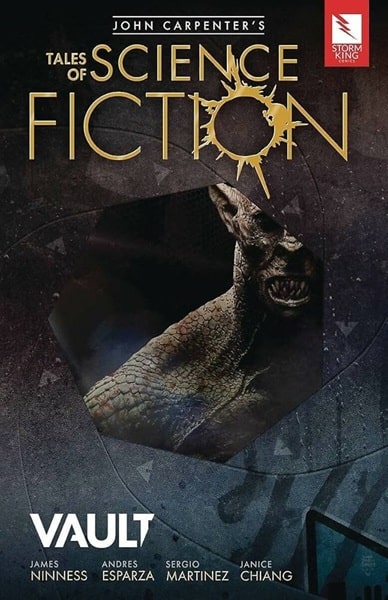

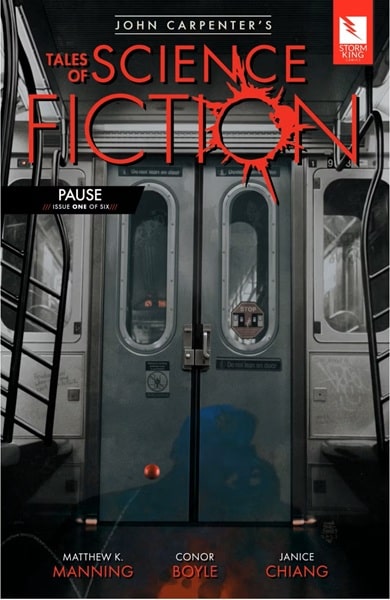
John Carpenter’s Tales of Science Fiction: Vault (June 2018), Vortex
(October 2018), and issue #1 of Pause (February 26, 2025
Storm King Comics was founded in 2012 by legendary filmmaker John Carpenter and his wife of thirty-five years, producer Sandy King. Together, they are known for delivering stories of horror, science fiction, and the supernatural, with series like John Carpenter’s Tales of Science Fiction and John Carpenter’s Tales for a HalloweeNight. Combining Carpenter’s cinematic style with the visual storytelling of comics, Storm King Comics offers fans immersive experiences that have cemented its reputation in the comic book industry.
I was first introduced to Storm King Comics by the grand dame herself, Sandy King, when I met her in 2016 at C2E2. Since then, I have collected all the issues from Tales for a HalloweeNight as well as Asylum which was my first exposure to the great stories that come out of Storm King. And though I am not a sci-fi girl strictly speaking, I love a good crossover, which this week’s launch seems to be.
For a bit of background, John Carpenter’s Tales of Science Fiction launched in 2018 with its inaugural story Vault, telling the tale of a moon-bound crew who discover an alien vessel with English markings. Since that time there have been eleven total installments and this week the series returns with installment twelve, entitled Pause.
Here’s what you have to look forward to…
 When I met Sandy in 2016
When I met Sandy in 2016
Picture this: you’re the only one not frozen in a world where time has stopped. You could lounge in a luxury Manhattan penthouse while its owner stands motionless nearby. You could feast on gourmet meals, perfectly hot and untouched, at high-end restaurants.
But what if you could bring others back to life with just a touch? Would you break the silence for companionship — or keep this frozen paradise all to yourself? The possibilities seem endless, but in a world like this, making the wrong move could unpause more than you bargained for…
Check out the trailer set to “Beyond the Gallows” from Carpenter’s latest album, Lost Themes IV: Noir.
Pause is written by Matthew K. Manning (Batman/Teenage Mutant Ninja Turtles Adventures), illustrated by Conor Boyle (Judge Dredd), and lettered by Janice Chiang.
Issue #1 of the six-issue limited series is available today, with new issues arriving monthly through August.
New Edge Sword & Sorcery Magazine – New Jirel of Joiry!
In 2023, New Edge Sword and Sorcery Magazine (NESS) emerged, and it continues to deliver outstanding magazines, renewing past classics while showcasing contemporary and veteran authors. Notably, issues 1 and 4 include Elric tales by Michael Moorcock. Black Gate featured the crowdfunding and reviewed the initial volumes, and published an interview with editor Oliver Brackenbury (links).
A new crowdfunding campaign to bring issues 5-7 to life is live on Backerkit through March 15th. NESS continues to bring us Jirel of Joiry stories! We’ll highlight Jirel of Joiry here but the magazine offers much more.
Read this to learn the trajectory of Jirel of Joiry and NESS! Jirel is alive and well!
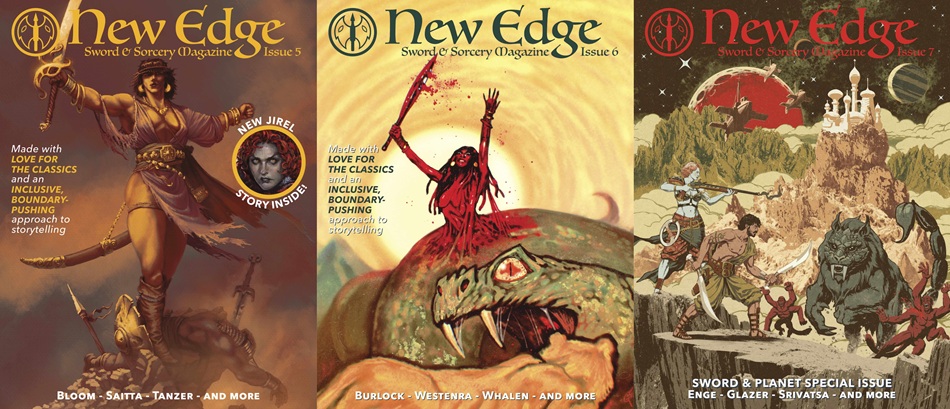 Press Release – NEW EDGE SWORD & SORCERY Backerkit crowdfunding for Issues 5-7:
Press Release – NEW EDGE SWORD & SORCERY Backerkit crowdfunding for Issues 5-7:
Building on their success in 2024, a Backerkit campaign has been launched for new issues.
TORONTO, Ontario, February 13th — Begun in Fall 2022 with issue #0, short story & non-fiction magazine New Edge Sword & Sorcery is running a crowdfunding campaign on Backerkit to produce issues #5, 6, and 7 in accessible digital, classic softcover, and luxurious hardcover (w/endpage art and a bookmark ribbon!) formats. These will be released in November of 2025.
Backing this campaign is a way to be a part of genre history: JIREL OF JOIRY will be returning with her second new story since the originals in Weird Tales! Jirel was the first Sword & Sorcery heroine, created by legendary Weird Tales regular, C.L. Moore. Like Alice in Wonderland with a big f***ing sword, Jirel had compelling adventures in bizarre dream-logic realms, balancing a rich emotional life with terrifying struggles against dark forces! Predating Red Sonja, she & Moore were a direct influence on Robert E. Howard’s writing, as well as so many who came after.
Alas, Moore only wrote a handful of Jirel tales — which are still collected, published, and read to this day. So it’s a good thing that when backers of the campaign helped it hit 100% funding in just four days, they helped make sure a new story will be published! Authorized by the estate of C.L. Moore, “Jirel Meets Death” has been written by the magnificent MOLLY TANZER (editor of Swords v. Cthulhu, author of Creatures of Charm and Hunger, and so much more).
Expanding to three issues a year also allows for the first ever special issue! NESS #7 is dedicated to S&S’ older, science-fantasy cousin Sword & Planet – featuring new S&P tales and non-fiction. Twenty-six other authors are spread across the three new issues this campaign is funding, including names like Alec “Black Beth” Worley, Premee Mohamed, and Dariel R.A. Quiogue.E
very story and non-fiction piece in the issues will be paired with two original B&W illustrations as soon as the crowdfund meets its first stretch goal – Double Art. The goal after that is a fund to cover shipping discounts for backers outside the United States, and from there every stretch goal is a pay raise for contributors. These goals make clear the magazine’s values of paying creators as much as they can, and making NESS financially accessible.
The magazine’s editor, Oliver Brackenbury, promises the magazine is “Made with love for the classics and an inclusive, boundary-pushing approach to storytelling”, delivering high quality writing and art in a wide variety of styles. Sword & Sorcery can be many things and still be Sword & Sorcery…or Sword & Planet!
Readers should race to back the magazine’s new issues before the campaign ends on March 15th, so they can benefit from crowdfund exclusives like bonus stories, discounted back issues, and cover art postcards. They can even win free, unique softcover issues annotated with behind-the-scenes info by chatting about S&S in the crowdfund’s community tab!
With the NESS pastiche continuing the heroine’s saga, here are the Jirel stories- “Black God’s Kiss” (C.L. Moore October 1934)
- “Black God’s Shadow” (C.L. Moore December 1934)
- “Jirel Meets Magic” (C.L. Moore July 1935)
- “The Dark Land” (C.L. Moore January 1936)
- “Quest of the Starstone” (C.L. Moore with Henry Kuttner November 1937)
- “Hellsgarde” (C.L. Moore April 1939)
- “Jirel and the Mirror of Truth” (Molly Tanzer 2024)
- “Jirel Meets Death” (Molly Tanzer 2025)
Ryan Harvey authored two Black Gate posts in 2007, one covering the author’s life and contributions in detail (Jirel ofJoiry: The Mother of Us All) and another reviewing Black God’s Kiss, Planet Stories‘s collection of all of C.L. Moore’s Jirel stories (including a collaboration with husband Henry Kuttner).
The red-haired, yellow-eyed, and lioness-fierce sword-wielding Jirel has an unassailable place in contemporary popular culture, along with her genre cousins, the laser-gun wielding heroine and the wooden-stake-armed heroine. Fantasy, science fiction, and horror no longer have “Males Only” signs over their doors, either for their warriors or writers. So many female authors and protagonists thrive in speculative fiction today that it seems hard to imagine a time when the opposite was the case. It feels impossible to visualize fantasy before Catherine Lucille Moore broke down the gender barriers (even if she did partially disguise her sex behind her first initials, C. L.) and brought with her Jirel. Beautiful, fierce, loyal, defiant, passionate Jirel did more than raise her sword against sorcery. She slashed through the confining walls around speculative fiction and let it reach toward the horizons in a way it never could have before her advent. That achievement alone assures Jirel and her creator a place in the firmament of the stars of fantasy literature.
— Ryan Harvey, Jirel ofJoiry: The Mother of Us All
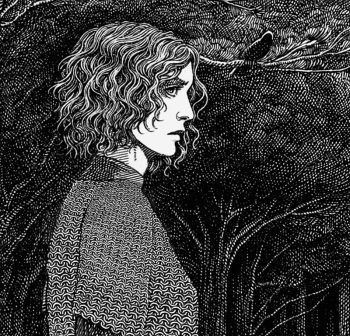 Saprophial interior art, NESS #3, Jirel
Author, Artist, and RPG!
Saprophial interior art, NESS #3, Jirel
Author, Artist, and RPG!
If you’re interested in learning more about Molly Tanzer and her approach to writing Jirel, check out the article Old Sorcery, New Edge: Q&A with Molly Tanzer (by Alec Worley, Feb 2024) and the Return of Jirel Interview hosted by Oliver Brackenbury, editor of NESS (2024).
NESS Magazine is always saturated with interior art. Artist Saprophial illustrated four pieces “Jirel and the Mirror of Truth”. The artist was a perfect choice since she also created the art for the 2022 Black God’s Kiss RPG Aventure and Game (check out Blazing Worlds website for more info.)
Back New Edge S&S Issues 5-7 Now! (link)
S.E. Lindberg is a Managing Editor at Black Gate, regularly reviewing books and interviewing authors on the topic of “Beauty & Art in Weird-Fantasy Fiction.” He is also the lead moderator of the Goodreads Sword & Sorcery Group and an intern for Tales from the Magician’s Skull magazine. As for crafting stories, he has contributed eight entries across Perseid Press’s Heroes in Hell and Heroika series, and has an entry in Weirdbook Annual #3: Zombies. He independently publishes novels under the banner Dyscrasia Fiction; short stories of Dyscrasia Fiction have appeared in Whetstone, Swords & Sorcery online magazine, Rogues In the House Podcast’s A Book of Blades Vol I and Vol II, DMR’s Terra Incognita, and the 9th issue of Tales From the Magician’s Skull.
Wizard Battles and Martial Arts: Legend of the Condor Heroes: The Gallants

Good afterevenmorn!
So, my various social media algorithms were working overtime the past couple of months, bombarding me with clips and training videos for the Chinese movie Legends of the Condor Heroes: The Gallants. And, of course, my interest was more than a little piqued. When I heard that the movie was getting an international release, I got more than a little excited.
Given how much I adore Chinese dramas, and kung fu movies, and the fact that I train kung fu and Chinese kickboxing (called San Da, or less frequently San Shou), there was no way in hell that I would not be going out to see this film.
I went in pretty much blind, with only a trailer (which gave nearly nothing away), and the training videos. So it had virtually no idea what it was all about. This will matter quite a bit, as we will see.
The trailer I saw
What I learnt after the fact is that this film is loosely based on the first (射鵰英雄傳 (The Legend of the Condor Heroes)) of a trilogy of books by Chinese author 金庸 (Jin Yong), which I have not read (but would love to get my hands on a translation of). The novels are technically Wixia, a Chinese historical fantasy, which typically follow an unattached warrior who follows a chivalric code (俠 (xia)). Emphasis on fantasy in this case. More on that later.
Now, I am quite familiar with the male lead Xiao Zhan (肖战), who has been in a number of dramas I’ve watched, but is probably most famous for his role in The Untamed here in the Western Hemisphere. He’s a very talented actor, and I’ve enjoyed most everything I’ve seen him in (and even the ones that were so-so, he was the bright spot for). And I’m so pleased that there was a foreign film that I didn’t have to find a niche theatre for. I was, and am, very happy to encourage more of that.
The last Chinese film I saw in theatres was Crouching Tiger, Hidden Dragon. So… quite a while ago. I remember it absolutely blowing me a way (and wrecking me emotionally), so I was really eager to see this. With that in mind, off I trundled with a couple of my martial arts students on Sunday to watch the movie.
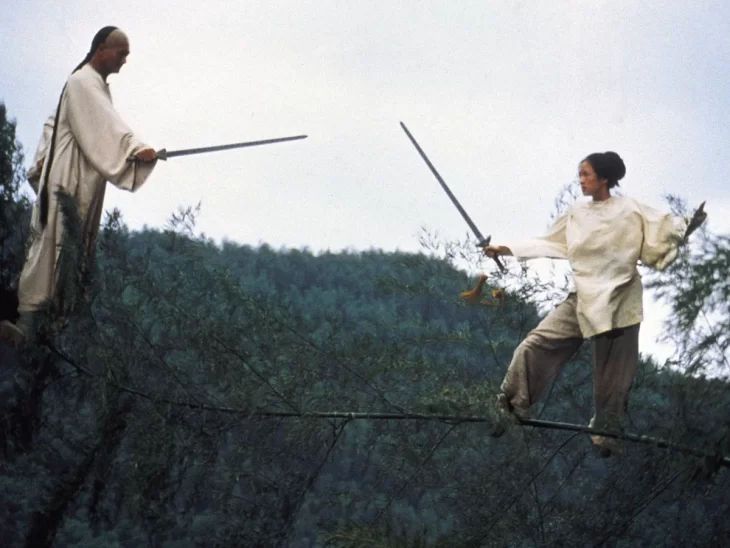 There are three movies I will rewatch any time I need a good cry. This is one of them.
There are three movies I will rewatch any time I need a good cry. This is one of them.
The movie centres on one Guo Jing (郭靖), a Han Chinese man from the Song Dynasty raised in Mongolia by the Khan who took him and his mother in following the strife between the Jin and Song empires (the Jin rise to power shattered the Song Dynasty, and they moved south to become the Southern Song Empire), and the tension between his two identities — a Han Chinese man from the Southern Song Empire and a man raised as a Mongol, by the Khan, and sworn brother to Mongols.
And it was great! A whole lot of fun; but with some caveats.
The first is that, as this was based on a novel, there is a lot of information packed into a relatively short amount of time (just over 2 hours), and if you’re not paying attention, you miss an awful lot. For those of us unfamiliar with the source material, it did lessen the emotional impact of certain scenes. It might be just my 40 episode drama-watching brain, but this probably could have been a couple of movies.
An awful lot is glossed over rather quickly in what feels like a “Previously On” moment. I was left with the feeling that there was a prequel movie that I have not seen. I haven’t done any research on whether that was the case as of the writing of this. When we finally get into the meat of the movie, Guo Jing has separated from the woman he loves, whom he travelled all over the Middle Lands and trained with, and has already mastered the techniques from a much-sought-after scroll, whom this young woman (Huang Rong (黃蓉)) apparently has possession of. Following so far?
 Our heroes Huang Rong and Guo Jing
Our heroes Huang Rong and Guo Jing
Separated, Huang Rong is pursued by three of the five masters — a martial art specialists from three of the five styles of martial arts (kung fu… sort of) in the Middle Lands. The lead, Venom West, desperately wants the scroll she carries. He was, apparently, preciously defeated by Guo Jing in an encounter we only get flashbacks of (rather disappointingly).
I’m not going to give too much away, but eventually the lovers reunite, and simultaneously save both the Khan and the Southern Song Empire; the Khan from Venom West, who has gone mad, and the Southern Song from the Mongols, who were just themselves saved.
The story itself was very fun, with some impressive action sequences, but I find myself a little disappointed that they weren’t more grounded. Remember when I mentioned that the emphasis was on fantasy? Well, all the fighting in this was basically magic battles between wizards. There was actually very little proper fighting involved. Given the training videos I saw, I was expecting a little more proper combat.
One of several videos that promised something that wasn’t delivered.
Crouching Tiger, Hidden Dragon leant into the fantasy, what with the flying through the air and landing on bamboo as if their bones were hollow/they could actually levitate. But the fighting in that was actual fighting; highly choreographed, but fighting all the same. With that as my only reference for Chinese movies, and with the training videos, I do feel a little cheated. Particularly since in several of the training videos, I could recognise the styles employed.
There was no real hand-to-hand combat in the film.
Now, it’s entirely possible that the training shorts I saw were actually for a completely different project. I do know that many of these actors are incredibly busy, working or three or more projects a year. So it’s entirely possible that all the videos were mislabelled and were for something else entirely.
The movie also ends in what feels like the middle of the story. Hardly surprising since it’s the first book in a trilogy. The sort-of middle-of-the-story vignette that this film presents is not unlike My Neighbour Totoro. Both movies left me with an “this is unfinished” feeling.
 The Khan’s daughter and a love rival. I loved her character a lot.
The Khan’s daughter and a love rival. I loved her character a lot.
Despite the slight disappointment of all the fights being wizard battles, and the unusual feeling of being shown but a snippet of a story, however, the movie was a whole lot of fun. I loved hearing both Mandarin and Mongolian. I loved how the Mongols weren’t made the villains (I initially thought they were, and it would have been easy to have made them thus — kind of like Russians for 80s Hollywood movies). And I adored having something other than the increasingly formulaic and mindless films we’ve been fed of late to spend a Sunday afternoon watching.
I really do wish more foreign films would get wide releases like this. We could use the fresh perspectives and fascinating stories other cultures bring. I had a lot of fun with this one. If you are going to see it, you must pay close attention, but it was certainly worth it. If there are sequels that make it out our way, I’ll definitely be watching. But first, I need to get my hands on English versions of these books!
When S.M. Carrière isn’t brutally killing your favorite characters, she spends her time teaching martial arts, live streaming video games, and cuddling her cat. In other words, she spends her time teaching others to kill, streaming her digital kills, and a cuddling furry murderer. Her most recent titles include Daughters of Britain, Skylark and Human. Her serial The New Haven Incident is free and goes up every Friday on her blog.
Guns or Butter? Total War: Warhammer II
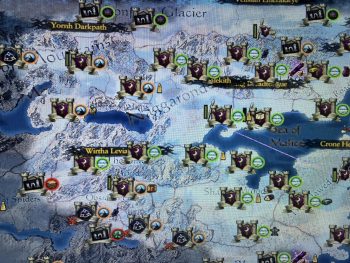 I came to Total War way back when, through TW: Rome. Arriving in 2004, it was the third game in the TW series, after Shogun, and Medieval. I liked it, though I wasn’t addicted – as I was to many games back then. But it was fun marshaling armies, and then marching them out to crush your enemies. I talked about it a little bit a few weeks ago in my RTS overview (man, Myth: The Fallen Lords was such a great game!).
I came to Total War way back when, through TW: Rome. Arriving in 2004, it was the third game in the TW series, after Shogun, and Medieval. I liked it, though I wasn’t addicted – as I was to many games back then. But it was fun marshaling armies, and then marching them out to crush your enemies. I talked about it a little bit a few weeks ago in my RTS overview (man, Myth: The Fallen Lords was such a great game!).
Sort of the “What is best in life?” response from the first Conan movie with Ah-nuld:
“To crush your enemies, see them driven before you, and to hear the lamentations of their women.”
There have been over a dozen incarnations, with the Egyptian-themed Pharaoh just dropping in 2023. What I’d LOOOOOVE, is for them to get the license from the Tolkien Estate and do TW: Middle Earth. I enjoyed Battle for Middle Earth I (never played II). But even a decently-done TW: Middle Earth would be FANTASTIC!!!!
Anywhoo. I’ve never done the Warhammer thing, but TW: Warhammer I came out in 2016. And TW: Warhammer II followed the next year. WH II has become the rabbit hole I periodically jump down. This game is — as my buddy Tony dubbed Diablo II long ago — electronic crack.
If you have WH I, you can use those factions/lords some in WH II. But you don’t need them at all. And while the base game is more than enough, part of the TW fun is buying the DLC – they add heroes, factions, and even a few campaigns. I don’t have WH III, but I the model is the same.
I have all the DLC for both WH I, and II. They are frequently 50% off+ on sale. Total War keeps ‘old’ product at original prices. It’s an annoying business model, and they do a boatload of DLC. But the base games have more than enough content. I just like the extra stuff to check out. And you don’t have to buy it, off course.
The Game Some basics about Total War – at least, the Warhammer II version. The principles of the series are generally the same. You know what you’re getting, but the engine has evolved over the years. Warhammer II is pretty similar to I. I have not played III yet. I tried to go back to Rome Remastered earlier this year, and that old engine just didn’t work for me anymore.
Some basics about Total War – at least, the Warhammer II version. The principles of the series are generally the same. You know what you’re getting, but the engine has evolved over the years. Warhammer II is pretty similar to I. I have not played III yet. I tried to go back to Rome Remastered earlier this year, and that old engine just didn’t work for me anymore.
The general concept is you take charge of a faction (Elves, dwarves, vampire pirates, etc. In other games it’s Roman families, or medieval countries. You get it).
You build up settlements, and armies on a unit basis, for your faction. You can choose to fight the battles yourself (usually advantageous in outcome) or use auto-resolve. I find the battles time-consuming and not that much fun, so I auto-resolve. The benefits of auto-resolve seem to be reduced from winning the actual fights yourself, though.
Terrain matters in battles, and also on the global map. Dwarven settlements thrive in mountain regions. The vampire lords corrupt the land, making it less/unsuitable for some factions. The lizardmen are primarily in the jungles. So, the faction you choose often impacts what part of the world you start in, and where you choose to expand to.
You attack other armies, and settlements, or colonize ruined ones. You build them up, gaining advantages if you control all the settlements in a single province. You have to balance chasing quests, conquering settlements, and being strong enough on defense to protect what you already have. Random wandering warherds, or rogue armies (frigging pirates) can seriously blow up your plans.
You can form military alliances (as can your enemies), and when you’re strong enough, you can make a confederation with a same-race faction: absorbing all their assets – and their financial obligations!
I just keep playing and trying to expand without a debacle happening. The first ten to fifteen turns usually indicate whether I’m gonna be able to make a go of it with this faction.
Two Game OptionsThe base campaign is Battle for the Vortex. There are game-given quests, and faction quests as well. You try to build up your settlements and armies, eliminate enemies, and accomplish the various quests. I’ve never made it to the end game. Even on Easy, the computer AI is a pain in the ass. I’ve rarely made it past 100 turns before it got too messed up.
WH II also has a Mortal Empires option. It lets you pick any lord/faction from I or II, and compete against all the other factions. Last one standing wins: No over-arching campaign. I’ve played Mortal Empires a few times, and it’s a neat option, but I prefer playing the official campaign. So….
‘Guns or Butter’‘Guns or butter’ is an old economic model that shows how governments have to choose between spending for defense or domestic uses. TW play is a variation on that which is pretty much the over-arching element of the game.
You can primarily choose to spend gold on military units, or settlement buildings (there can be a couple other options, like temporary enhancements, but you’re mostly putting your gold into your settlements, or your armies).
And your armies (you start with one, but need multiple ones to survive) have upkeep costs. So, you have a one-time cost to add the unit, then an ongoing cost per turn, to keep it. The bigger your army, and the more advanced the units you use, the greater your upkeep. Which means less gold for your settlement buildings.
Each Province has a capital settlement, with five levels. And except for a couple exceptions, one to three minor settlements, with three levels. You build up your Province Capital, which opens up additional slots for new buildings. There can be a total of ten building slots in a Capital, and there are usually only three additional slots in a minor settlement.
Building Categories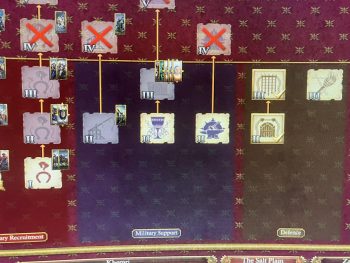 Choosing available options for a small settlement slot
Choosing available options for a small settlement slot
There are different types of ‘chains’ you can pick your settlement upgrades from. I really like this part of game management. And it’s essentially guns or butter. They have different classifications for different factions, but that’s just wording.
Resources – Available in certain settlements. They provide specific goods, like tradable resources (hides, marble, clay), plaques (related to some faction goals), or other benefits. Most settlements do not have this option, so I often take whatever it is. It’s nice when it’s a gold mine, as that is the best source of gold in the game.
Military Recruitment – These produce basic, and advanced, military units.
Basic buildings usually only have three levels, and you can start them when your Province Capital is only first level. They usually offer some other minor benefits, but this is where the meat shields and lower-level units come from. You build your starter armies here.
Advanced buildings usually go up to levels four or five, and provide elite units and enhancements. You need advanced units to get through the middle, and end, games. Purely gun stuff here.
Military Support – These buildings support your armies, lords (Each army is led by a lord), and heroes (a hero is a unique unit that can perform helpful actions and also provides benefits), and settlements. They might make recruitment costs less, reduce your casualty replenishment rates, or let you recruit infantry units with shields. More guns.
Defense – This a limited category, usually letting you add walls to your settlements, or some other defensive improvement for it. I always add walls to smaller settlements, but otherwise, this is my least-used category. As the title implies, this is a defensive category and kind of feels like a mix of guns and butter.
Infrastructure – Here you really get into the guns or butter dichotomy. There’s a wide range of options. Your main gold-making options are here. Also, you can focus on growth (how fast your settlements expand), and public order (if public order gets to-100, you have to put down a rebellion).
There are a lot of options here. Since you only get three additional slots in a smaller settlements, the choices are important. I do try to put up walls in small ones, so, with the Capital building, you only have two free slots. And you’re really choosing between guns and butter.
Misc. -Some settlements have Ports, and some have Landmarks. Ports generate gold and have their own chain. Landmarks are unique to a specific settlement and offer some benefit often worth taking. Even if it’s just a one-level use of a slot.
Choosing Your BuildingThe game randomly has factions declare war on you. And you can also end up at war with other factions through diplomacy options (that’s part of a follow-up post). You need to build up your first army in a hurry (you start the game with a lord and a small army of five-eight units, usually). Some faction is already pissed at you.
It’s tempting to use an early slot to pick a chain with a new military unit. You can get a more diverse, more effective, army, right out of the gate. Guns over butter.
But you gotta pay for all these troop units, and the constantly being constructed new buildings. So, taking that industrial building with a big per turn revenue, is tempting. The gold mine is a no brainer. In a small settlement (remember, only three slots in addition to the Capital), I almost always choose the max revenue building first. I need that stream started to build that first army.
The third (and last) slot usually goes to walls, which help with defense if you end up under siege. It’s the second slot that lets me shade towards guns or butter. For purposes of this discussion, growth and other things that primarily affect the settlement, or my revenue stream, are butter.
Since the capitals have eight to ten slots, and they go up to level five, I tend to use them for the advanced military buildings, to maximize my firepower. Some support, and non-military buildings go up to level five, so you have to factor that in as well. And walls never hurt.
TechnologiesFactions have unique Technology trees. Some are easier to develop than others. But they also reflect the guns or butter dilemma. Especially early on, you can choose technologies (which take multiple terms to develop) to enhance troop unit strength. And also to decrease recruiting costs.
Alternately, technologies that enhance your revenue stream can be vital in providing gold to maintain your growing army. Or building up your settlements.
And any time you can increase your growth or public order, you need to weigh those as immediate needs against those other areas. Butter.
Army Units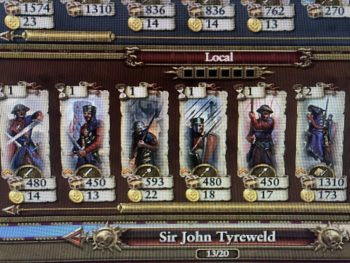 Basic units (like spearmen, or archers) cost a lot less to hire recruit and maintain, than ones such as knights, war eagles, or catapults. The stronger your army, the more it’s gonna cost you. And by mid-game, your main armies had better not still include a bunch of grunts; even if they have leveled up. You needs some higher power units.
Basic units (like spearmen, or archers) cost a lot less to hire recruit and maintain, than ones such as knights, war eagles, or catapults. The stronger your army, the more it’s gonna cost you. And by mid-game, your main armies had better not still include a bunch of grunts; even if they have leveled up. You needs some higher power units.
Armies are capped at a total of 20 units. Do you want a second full-size army? Or two medium-sized ones? Recruit a lord and build a 6 unit army to provide a military presence in a province with falling public order? All those units have an ongoing cost every turn…
You have multiple layers of guns or butter to decide upon. Bad things start to happen if your revenue stream goes negative. And enemies can raid your province, decreasing revenue. Or sack, burn to the ground, or even take over your settlements. And those things can hit your stream.
So, you need to have armies ready not only for attack, but defense. Again – that takes gold.
Wanna hire more lords or heroes? Cha-ching!
In the pic to the right, recruiting a knight will cost about three times as much as recruiting the spearman at arms next to him. But maintaining him each turn will cost ten times more.
So…Budgeting is the allocation of resources among multiple activities. Total War is strategic and tactical game of allocating resources. And basically, you decided whether to spend your gold on guns or butter. And you need the butter to make more gold. To pay for the guns.
I know folks who like playing out the battles. I have fought my share over the years, and I get it. But the faction management part of the game is what keeps me coming back. Guns or butter.
Crusader KingsA quick mention of another game.
For a kingdom management-and-war type of game, the Crusader Kings line (three so far) looks to be the standard. I have tried the first game a few times, and it’s got a MASSIVE learning curve. I think it’s manageable, I just haven’t been motivated to master the basics enough to continue on. But it does look like an awful lot of fun if you figure it out.
Next TimeThere will be a follow-up Total War post, in which I’m going to talk about how I recently had two of my most successful games by applying principles contained in George Washington’s Farewell Address. That was actually the original intent of this post, but I really enjoyed the guns or butter discussion.
Other Video Gaming Posts
RTS’ and Myth: Fallen Lords
Mount and Blade – Part One
Mount and Blade – Part Two
Steamed: What I’ve Been Playing (December, 2023)
Steamed: What I’ve Been Playing (October, 2022)
Fortnite (one of several mentions)

Bob Byrne’s ‘A (Black) Gat in the Hand’ made its Black Gate debut in 2018 and has returned every summer since.
His ‘The Public Life of Sherlock Holmes’ column ran every Monday morning at Black Gate from March, 2014 through March, 2017. And he irregularly posts on Rex Stout’s gargantuan detective in ‘Nero Wolfe’s Brownstone.’ He is a member of the Praed Street Irregulars, founded www.SolarPons.com (the only website dedicated to the ‘Sherlock Holmes of Praed Street’).
He organized Black Gate’s award-nominated ‘Discovering Robert E. Howard’ series, as well as the award-winning ‘Hither Came Conan’ series. Which is now part of THE Definitive guide to Conan. He also organized 2023’s ‘Talking Tolkien.’
He has contributed stories to The MX Book of New Sherlock Holmes Stories — Parts III, IV, V, VI, XXI, and XXXIII.
He has written introductions for Steeger Books, and appeared in several magazines, including Black Mask, Sherlock Holmes Mystery Magazine, The Strand Magazine, and Sherlock Magazine.
The Gorey Century
Yesterday was the 100th birthday of Edward Gorey, one of the most unique, unclassifiable artists that this country has ever produced. Though he died in 2000, he has a continuing cultural presence; he certainly lives on in my life and in the lives of a great many people.
Back in the incumbency of Jimmy Carter, when I was studying theater and living in the dorms of California State University Long Beach, one year I had a roommate named Scott. Scott didn’t fit into our tight-knit little community very well, and while I’ve always prided myself on my ability to get along with everyone, I didn’t get along very well with him. We had a bumpy year together, but I will always be glad that we were roommates, because Scott introduced me to the work of Edward Gorey, and that was a priceless gift that I can never repay him for.
Edward Gorey was a man of many talents — He did scenic and costume design for the stage, winning a Tony Award in 1978 for his costume designs for Dracula (his set design for that production was also nominated) and several of his stories are about ballet, which was one of his supreme passions. Additionally, he did highly individual book covers; for several years he did them for Anchor Paperbacks (including, among many others, editions of H.G. Wells’s The War of the Worlds, Franz Kafka’s Amerika, and T.S. Eliot’s Old Possum’s Book of Practical Cats), which are highly prized today simply for their Gorey covers. He also edited and illustrated a collection of classic ghost stories (1959’s Edward Gorey’s Haunted Looking-Glass) and did covers and illustrations for several of the supernatural mysteries of John Bellairs.
Beginning in the mid-1950’s, Gorey wrote and illustrated his own very short books, and these are the works that his fame mostly rests on. (Many were published under absurdly comical names that are anagrams of his own, like Ogdred Weary or Mrs. Regera Dowdy.) Visually, they are almost always set in the Victorian or Edwardian era (the closest to our own time that I can ever remember him coming was the 1920’s) and are full of bizarre, grotesque, violent, comic, cryptic, and occasionally supernatural incidents, often involving children; in fact, they are usually “children’s books” in form if not in content. The original small hardcover volumes are hard to come by and are pricey when you can find them, but there are four large omnibus volumes, each collecting a dozen or more of the short works — Amphigorey (1972), Amphigorey Too (1975), Amphigorey Also (1983), and Amphigorey Again (2006).
The first thing of Gorey’s that I ever read was “The Hapless Child”, which chronicles the travails of a lovely little girl named Charlotte Sophia. When the story begins, she’s safely ensconced in the bosom of her loving family (“Her parents were kind and well-to-do.”) Then her father, a military man, is reported killed in a native uprising and her grieving mother wastes away and dies, leaving the girl in the cold, utilitarian hands of the family lawyer, who loses no time in sending her to a boarding school where students and staff range from the merely unsympathetic to the positively sadistic. Things rapidly go from bad to worse, and from this point on, the hapless child is subjected to every horror that could befall a person in the most lurid melodrama, all rendered by Gorey in deadpan language and meticulous pen-and-ink images. Things don’t end well for the poor child, and the first time I read her tale, tears rolled down my face, but they weren’t tears of sadness; I was literally shaking with laughter. (Once the story almost got me thrown out of the college library where I was supposed to be working, when I showed it to a friend who was unacquainted with Gorey. We just couldn’t control ourselves.)
It does no good to try and explain to someone who is appalled by “The Hapless Child” rather than delighted by it that what’s being mocked is not the suffering of an innocent child (there was no Charlotte Sophia — Gorey made her up) but rather the reflexive, self-indulgent sentimentality of a hypocritical era and of readers still shackled to its sticky standards. (And one of the things that makes Gorey a complex artist is that he both recognizes the deficiencies of the Victorian age while at the same time clearly adoring many aspects of it.) Either Gorey lands with you or he doesn’t. For myself, there’s nothing that I like more than a good, Gorey story.
Other Gorey delights are “The Willowdale Handcar”, a series of strange, seemingly disjointed incidents that can, with a little imagination and a close examination of the illustrations, be connected into a coherent (if admittedly dark) narrative. (The story features The Black Doll, a sinister, featureless figure which haunts the edges of many of Gorey’s works.) Gorey could be genuinely frightening, as in “The Insect God”, in which huge insects kidnap children and mercilessly sacrifice them to their chitinous deity, and “The West Wing”, a succession of wordless images showing various rooms in a house that you definitely wouldn’t want to spend any time in. (Gorey could make a patch of peeling wallpaper radiate unease.)
Gorey would sometimes make mere objects his protagonists. In “The Inanimate Tragedy” Pins, Needles, a Glass Marble, a Four-Holed Button, and a Piece of Knotted String become embroiled in conflicts and misunderstandings that end in murder and suicide, if those terms are applicable to the fates suffered by a Half-Inch Thumbtack and a No. 37 Penpoint. Gorey would probably say that the word “tragedy” is no more out of place with junk-drawer contents than it is with the equally mundane and transient objects that we call human beings, and in “The Abandoned Sock” you feel genuine apprehension for the sock who foolishly deserts his mate on the clothesline to go adventuring and gets used for a dust rag, chewed by a dog, caught in a tree, and picked apart by birds to use for their nests until nothing is left of it. Does the sock’s life (which it found “tedious and unpleasant” when it was pinned on the line next to its dull mate) turn out all that differently from our own personal dramas?
One of Gorey’s most famous stories is “The Doubtful Guest”, which sees an odd, penguinish-looking creature attired in tennis shoes and a striped scarf turn up one night at the house of a settled, respectable (boring!) family and proceed to turn things upside down. Without ever uttering a sound, the uninvited visitor eats the plates at dinner, tears chapters out of books, suffers fits of bad temper during which it hides all the bath towels, safeguards objects that it takes a liking to (like expensive pocket watches) by dropping them in a pond, eerily sleepwalks up and down the hallways at night, and otherwise disrupts the placid routines of the baffled family, who have no hope of ever going back to life as it was, because “It came seventeen years ago — and to this day / It has shown no intention of going away.” (Many of Gorey’s stories are written in verse.) You understand the family’s frustration and despair, but you may also feel that a little unpredictability might do them some good. I have my own Doubtful Guest — a college friend of my wife made him for me, and I was delighted to learn that Gorey had several himself, that admirers had made and sent to him. (I have a Black Doll too, but that I had to buy.)
Gorey did several alphabet books; the most well-known (images from it have appeared on calendars, tee-shirts, coffee mugs etc.) is “The Ghastlycrumb Tinies.” Here dewy-eyed tots come to shocking and painful ends (“A is for Amy who fell down the stairs / B is for Basil assaulted by bears / C is for Clara who wasted away / D is for Desmond thrown out of a sleigh). Gorey doesn’t imply that these grim events are the children’s faults, but he doesn’t imply that they aren’t, either.
Gorey wasn’t uplifting or heartwarming, (except perhaps in “The Pious Infant”, the story of Henry Clump, a little boy who is too good to live long, and thank God he doesn’t) but now and then justice is served, as it is in “The Bug Book”, one of the few Gorey stories that’s not in black-and-white. In this tale of collective security and well-earned retribution, a peaceful group of bugs have their happy society wrecked by a new bug in the neighborhood, a big, brutish interloper who, despite their best efforts to be friendly and welcoming, “broke up their parties” and “waylaid them whenever they went visiting.” After a secret meeting in the dead of night, the problem is solved by squashing the obstreperous insect flat with a big rock. His remains are placed in an envelope addressed “To whom it may concern” and a pleasant and lively social life is resumed (in Gorey’s world, clearly the happiest of happy endings).
The great Literary critic Edmund Wilson (he who disparaged detective stories and sneered at Tolkien and Lovecraft) was an early admirer of Gorey; he found the artist’s singular little books pleasingly suggestive and allusive. “I find that I like to return to them,” Wilson said. The critic was wrong about a lot of things, but he was right about Edward Gorey. Over almost a half a century, I too have continued to come back to Gorey’s strange, sinister, darkly comic world. There is truly nowhere else like it.
Edward Gorey, this contradictory man who loved attending classical ballet (he was present for every performance of the New York City Ballet for twenty-five straight years) and watching “trash TV movies on the USA Network” was sui generis, the sort of one-of-a-kind genius who can only be appreciated and enjoyed, never imitated or emulated. The mark he set was too high for anyone else to reach… or maybe it would be more accurate to say that it wasn’t too high, exactly; rather, it was too far off to the side.
Whatever deserted house, sinister garden, enigmatic landscape or dimly-lit stage your eccentric spirit now haunts, Edward Gorey, happy birthday to you. Your ashes may have been scattered to the four winds, but your work goes marching on; I fully expect your macabre miniatures to be around for at least another hundred years.
Thomas Parker is a native Southern Californian and a lifelong science fiction, fantasy, and mystery fan. When not corrupting the next generation as a fourth grade teacher, he collects Roger Corman movies, Silver Age comic books, Ace doubles, and despairing looks from his wife. His last article for us was Reading for the End of the World Redux
There, Wolves: Part I
 Werewolf Rising (RLJ Entertainment, October 14, 2014)
Werewolf Rising (RLJ Entertainment, October 14, 2014)
A 20 film marathon of werewolf movies I’ve never seen before.
As usual, the films must be free to stream.
I’ve got a bad feeling about this.
Werewolf Rising (2014) YouTubeMan or beast? It looks more like a hairy extra from The Hobbit.
Howling’ good time? Nope. We are off to a rip-roaring start with this dull effort shot entirely in Arkansas, if that floats your boat.
A paper thin plot is played out in a forest with a single digit, lacklustre cast and the whole shebang is shot in glorious murky-vision. The only redeeming feature might have been the beast(s), but they are rubbish.
Oh god. What have I started?
3/10
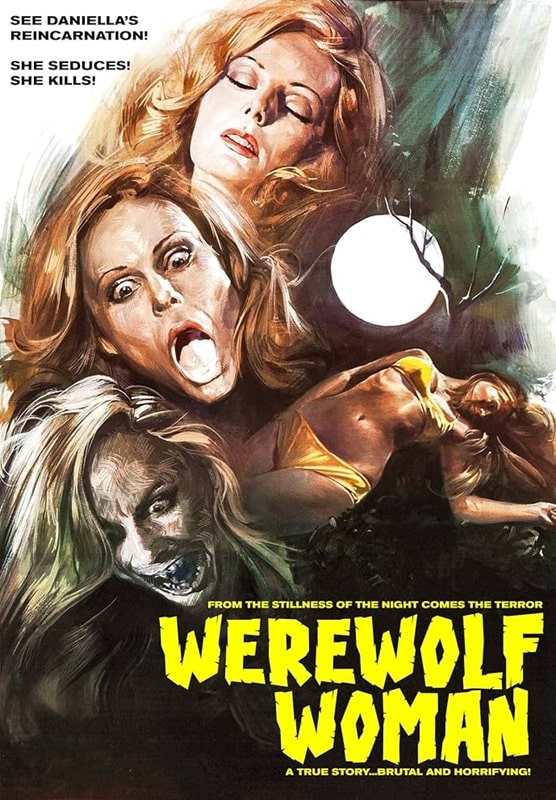
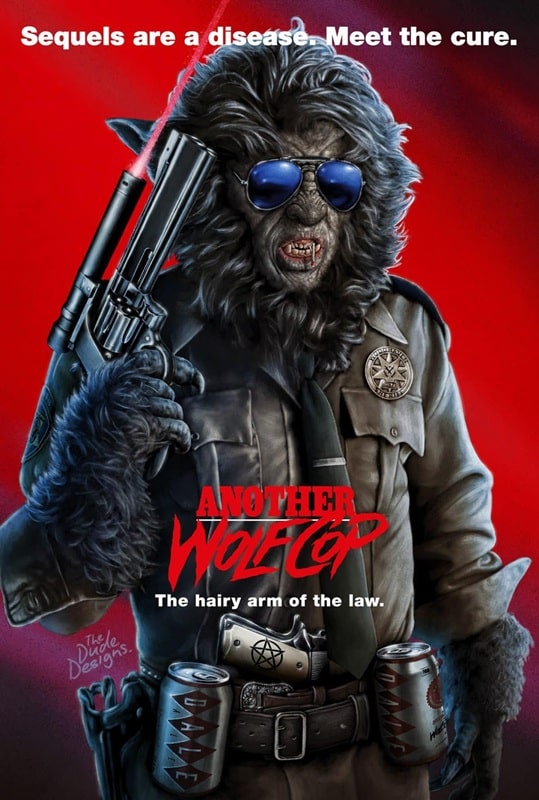
Werewolf Woman (Agorà, March 18, 1976) and Another Wolfcop (RLJE Films, July 29, 2017)
Man or beast? Naked, hairy, black-nosed lady.
Howling’ good time? Apparently, this is a favorite of Quentin Tarantino, but I swear half of his favorites are just obscure titles that he had access to while working in a dodgy video store that he could use as bragging rights. It has elements of revenge flicks that he would use in his own films, but the rest is a messy potpourri of sex, violence, and sexual violence. This being the 70s and Italian, the main feature is hair, whether it is covering the voluptuous frame of the titular lady, the upper lips of the men, or more nether-regions than a topiary enthusiast could ever dream of.
It’s a sordidly strange tale of a woman who is horrifically raped and her lover murdered, who exacts revenge in the guise of a werewolf without any transformation due to recurring dreams that she is the descendant of a werewolf. Confused? You will be. Weird, uncomfortable, badly dubbed.
Can’t say I loved it – but it had a couple of decent moments and some good old-fashioned Italian exploitation gore.
6/10
Another Wolfcop (2017) PrimeMan or beast? Great, practical, wolf. Cop.
Howling’ good time? A proudly Canadian production, this sequel takes the original concept (cop Lou Garou is bitten by a werewolf and brings his new persona to the job) and ramps up the insanity. Reptilian mutants, moustachioed parasitic stomach worms, extremely hairy sex, extremely gory deaths, Gowan on repeat and Kevin Smith yelling ‘slam a cold cock!’ at any given moment. It’s stupid as all hell and I loved it.
Bonus points for enormous werewang.
8/10
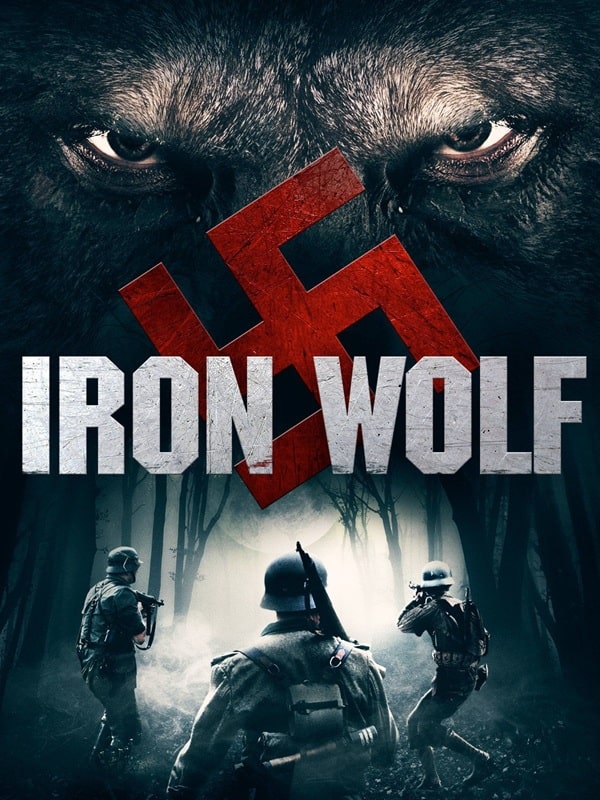
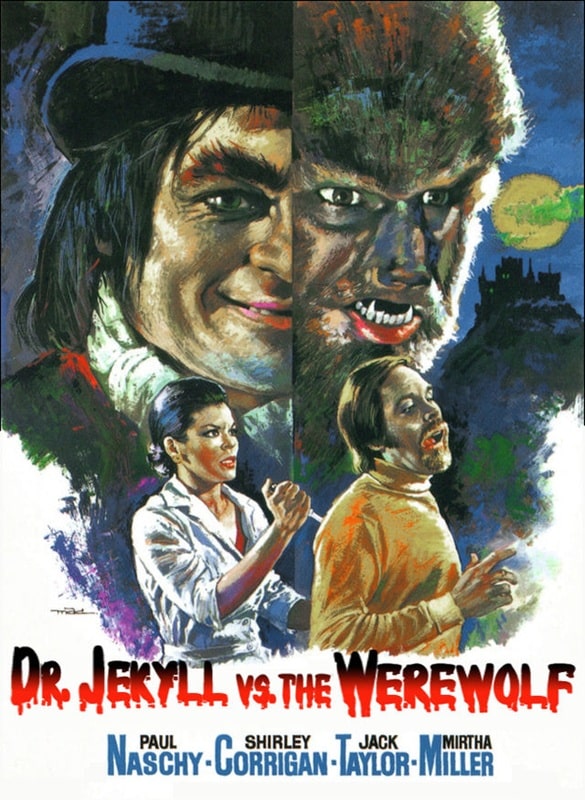
Iron Wolf (RJ Nier Films, September 13, 2013) and Dr. Jekyll vs. the Werewolf (Filmaco, 1972)
Man or beast? Ruby’s bottom of the line costume.
Howling’ good time? Don’t be fooled by the poster (or any poster for that matter), this is not a jolly werewolf romp set in WW2. The film begins that way, with some mis-matched Nazis working in a secret lab (industrial site) and showing off their werewolf that they have trained to only attack non-Nazis.
It’s cheap and cheerful, and somewhat passable, but then is brutally cut short and jumps forward in time to some extremely dull modern, German teenagers. They are hanging around the semi-ruined labs for some B.S. reason, the wolf creature gets out, and it becomes a ‘desperate fight for survival’. The direction is pretty limp, and the acting isn’t great – I really wish the German cast had been allowed to speak German and for the film to be subtitled. It makes no sense to flatly deliver the lines – lines that are flat to begin with.
As usual, the only saving grace could have been the werewolf, but this big doofus is just a dude in a Halloween wolf costume (and not the deluxe version) stuffed into a Nazi uniform. Laughably bad.
4/10
Dr. Jekyll vs. the Werewolf (1972) TubiMan or beast? Hairy-faced fella.
Howlin’ good time? I’m no stranger to Paul Naschy werewolf flicks, but this is one of the dozen movies he made that I missed. As with the other Spanish-produced films in this series, Naschy plays the wolfman, searching for a cure, and the whole shebang has that lovely dark gothic feel of the other films.
However, this one has a personality split as broad as the titular characters. The first hour is tedious, lots of sitting around talking, but then, once Dr. Jekyll’s grandson starts shooting up the wolfman, it goes batshit crazy. Cue Hyde going on a sadistic rampage, whipping every bosom he lays eyes on, go-go dancing, drunk tipping and other nefarious tomfoolery. It’s not enough to save the movie, but it is daft enough to warrant an extra mark.
5/10
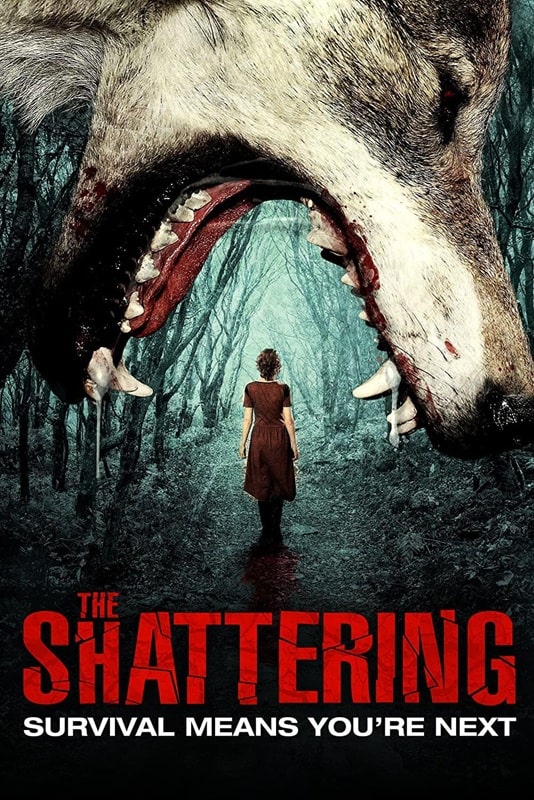

The Shattering (Film Cartel Entertainment, March 24, 2015) and Werewolves Within (IFC Films, June 25, 2021)
Man or beast? Unseen thingy.
Howlin’ good time? Let’s get this one out of the way. A group of randos are stuck in a cabin due to a bullshit plot line involving a healer. Some hunters are stuck in the woods due to some bullshit plot line about collecting wolf spit. A POV camera eats most of them. A very bold decision to not show a single werewolf in this badly shot, badly acted, werewolf flick. The only shattering that went on was in my pants when I realized I had to sit through this tedious dirge.
3/10
Werewolves Within (2021) NetflixMan or beast? Nice, practical werewolf.
Howlin’ good time? I really should have saved this until last, but I needed a little pick-me-up, and this sure hit the spot. Based on the videogame Werewolf, this film is a joy from start to finish. It’s a horror comedy in the same vein as Shaun of the Dead, even going so far as to include some Edgar Wright-type editing, and for the most part, the comedy sticks the landing.
It helps that the two leads are so likeable and awkward; Sam Richardson is perfect as a spineless park ranger, and Milana Vayntrub is adorable (and renews my pining for the aborted Squirrel Girl series). The setting is a hokey town in Vermont, full of troubled characters that put me in mind of Northern Exposure, or even Twin Peaks, and the plot weaves in a bit of social commentary about pipelines, gentrification, and acceptance.
For a further comparison, I had as much fun with this as I did with The Beast Must Die, and I even guessed correctly! Highly recommended.
9/10
Previous Murkey Movie surveys from Neil Baker include:
What a Croc
Prehistrionics
Jumping the Shark
Alien Overlords
Biggus Footus
I Like Big Bugs and I Cannot Lie
The Weird, Weird West
Warrior Women Watch-a-thon
Neil Baker’s last article for us was What a Croc, Part III. Neil spends his days watching dodgy movies, most of them terrible, in the hope that you might be inspired to watch them too. He is often asked why he doesn’t watch ‘proper’ films, and he honestly doesn’t have a good answer. He is an author, illustrator, outdoor educator and owner of April Moon Books (AprilMoonBooks.com).
The Fiction of Edgar Rice Burroughs, Part IV: The Hollow Earth and Pellucidar
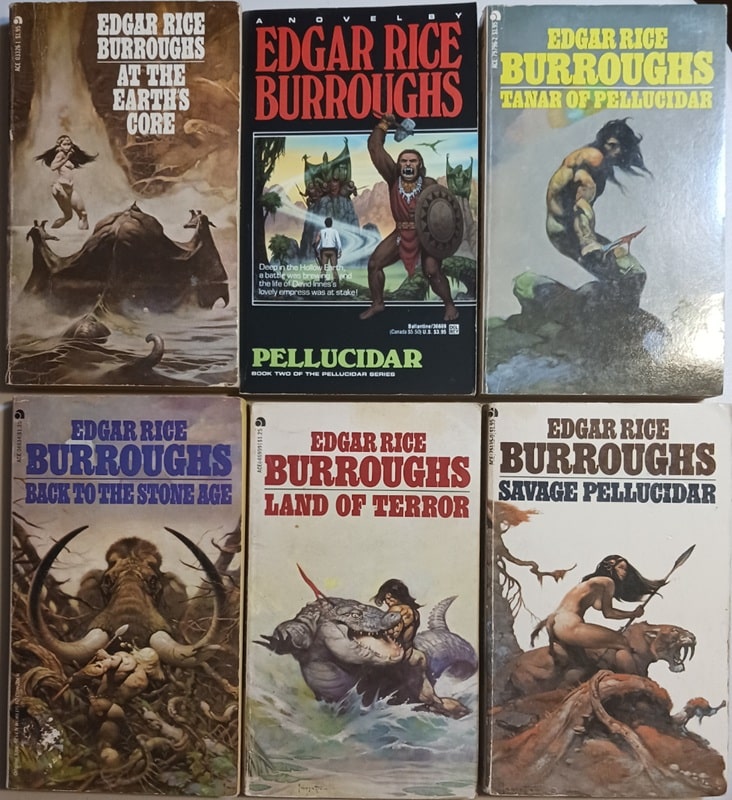 The Hollow Earth novels of Edgar Rice Burroughs: At the Earth’s Core (Ace Books, August 1978), Pellucidar (Del Rey, May 1990), Tanar of Pellucidar, Back to the Stone Age, Land of Terror, and Savage Pellucidar (Ace Books, January 1973). Covers by Frank Frazetta and David Mattingly (Pellucidar)
The Hollow Earth novels of Edgar Rice Burroughs: At the Earth’s Core (Ace Books, August 1978), Pellucidar (Del Rey, May 1990), Tanar of Pellucidar, Back to the Stone Age, Land of Terror, and Savage Pellucidar (Ace Books, January 1973). Covers by Frank Frazetta and David Mattingly (Pellucidar)
Above are my Edgar Rice Burroughs Pellucidar books. Tarzan at the Earth’s Core goes with this series as well, although I included it in Part II of this series, with my Tarzan collection. In these stories, Pellucidar is a hollow area at the center of the Earth. There are openings into it at the North and South poles, but in the initial book, At the Earth’s Core, an American named David Innes reaches the interior by riding inside a giant drill. This is kind of a reverse of the Sword & Planet plot in which the Earthman is taken outward to another world.
Pellucidar is an interesting construction and ERB clearly gave it some thought. There’s a miniature sun at the center that leads to perpetual day, and the only shadowy area on the surface of Pellucidar is an area of constant twilight beneath the bulk of the unmoving moon. The interior has no horizon because everything curves up and away from the viewer, and the land and water masses are the reverse of the surface, leaving a lot of land. The world is populated by all kinds of extinct outer lifeforms that wandered in through the polar entrances, including some dinosaurs and the remnants of the mammal megafauna.
It also contains humans, and some weird races that never existed on the surface, including the Mahars, who are winged reptilian-like beings possibly evolved from Pterodactyl-like ancestors. The Mahars rule the interior world and David Innes leads a revolt against them that is fought out during the first few books. In Tarzan at the Earth’s Core, Tarzan takes an airship into the interior world and gets involved in the war. Some of the later books are made up of stories that were originally published separately.
There are 7 Pellucidar books, listed below with first publication dates. My copies are all later releases, of course, and all from Ace Books, except for Book 2, From Del Rey. I’ve also listed the publication dates and cover artists here for my copies.
At the Earth’s Core, 1914: 1978, Frazetta
Pellucidar, 1915: 1990, David B. Mattingly
Tanar of Pellucidar, 1929: 1978, Frazetta
Tarzan at the Earth’s Core, 1929-1930 (not shown above)
Back to the Stone Age, 1936-1937: Frazetta cover (My Favorite)
Land of Terror, 1944: 1973, Frazetta
Savage Pellucidar, 1963: 1978, Frazetta
I like the Pellucidar series a lot, and it was the single biggest influence on Lin Carter’s Zanthadon, which I wrote about in a Facebook post quite a while back.
 Lin Carter’s Zanthodon novels: Journey to the Underground World, Eric of Zanthodon, Hurok of the Stone Age, Darya of the Bronze Age, and Zanthodon (DAW Books, November 1979, May 1982, February 1981, September 1981, and June 1980). Covers by Josh Kirby and Thomas Kidd (Zanthodon)
Lin Carter’s Zanthodon novels: Journey to the Underground World, Eric of Zanthodon, Hurok of the Stone Age, Darya of the Bronze Age, and Zanthodon (DAW Books, November 1979, May 1982, February 1981, September 1981, and June 1980). Covers by Josh Kirby and Thomas Kidd (Zanthodon)
The idea of a Hollow Earth that Burroughs used in his Pellucidar books, or at least of great caverns beneath the earth, is very old. Quite a few Native American tribes have origin stories that include them coming from out of hollows in the earth. Edmond Halley proposed it as a serious theory in 1692, and, of course, there’s Jules Verne’s Journey to the Center of the Earth, published in 1864.
A couple of years ago, my wife and I visited Mammoth Cave in Kentucky and saw evidence of Native Americans having visited and perhaps lived there. I also found out about a book with the lengthy title Wonderful Discovery: Being an account of a recent exploration of the celebrated Mammoth Cave, in Edmonson County, Kentucky, by Dr. Rowan, Professor Simmons and others, of Louisville, to its termination in an inhabited region, in the interior of the Earth.” I managed to find a copy online.
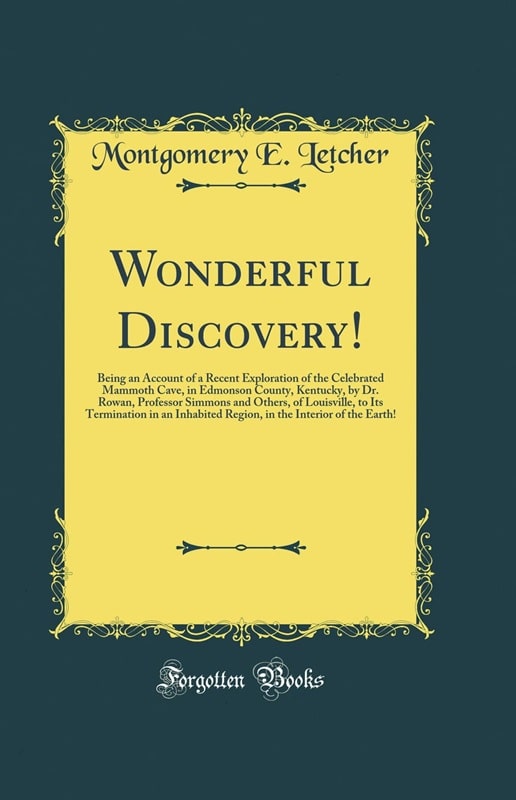 Wonderful Discovery by Montgomery E. Letcher (Forgotten Books, August 24, 2018)
Wonderful Discovery by Montgomery E. Letcher (Forgotten Books, August 24, 2018)
Written in 1839, this story purports to be a journey into the Hollow Earth through the Mammoth Cave system. It’s only a long opening chapter, and supposedly there were to be further installments. This is the only one I’m aware of. This piece has the intrepid explorers getting through the cave system into the inner world where they meet a peaceful group of humans. There’s not much excitement; no “narrative drive,” like you get from ERB.
I was unable to find anything on the author Montgomery E. Letcher. My search suggests this is the only work he ever did. The writing is, naturally, very old fashioned, and the concept was apparently derived from Halley’s suggestion of the Hollow Earth. The story precedes Jules Verne’s Journey to the Center of the Earth by decades, since that book was published in 1864. It seems likely to me, however, that Verne arrived at the idea directly from Halley’s writings rather than from having read this work. And I doubt Burroughs knew about it either.
 Map of Pellucidar from An Atlas of Fantasy by Jeremiah Benjamin Post (Ballantine Books, January 1, 1979)
Map of Pellucidar from An Atlas of Fantasy by Jeremiah Benjamin Post (Ballantine Books, January 1, 1979)
Above is a map of Pellucidar, from An Atlas of Fantasy. The same basic map is featured in some of the books as well. ERB drew it himself.
ERB and Some PastichesGetting back to ERB’s Pellucidar, there’s also a sequel to the series written by John Eric Holmes (1930 – 2010) called Mahars of Pellucidar. It follows the events of Savage Pellucidar. My copy appears to be from the first printing, from ACE, 1976, with a great cover by Boris. I actually enjoyed this tale quite a bit. It was authorized by ERB’s heirs, although they originally nixed a sequel Holmes wrote called Red Axe of Pellucidar. This was eventually published, with the consent of ERB, Inc, although I don’t have it and haven’t read it.
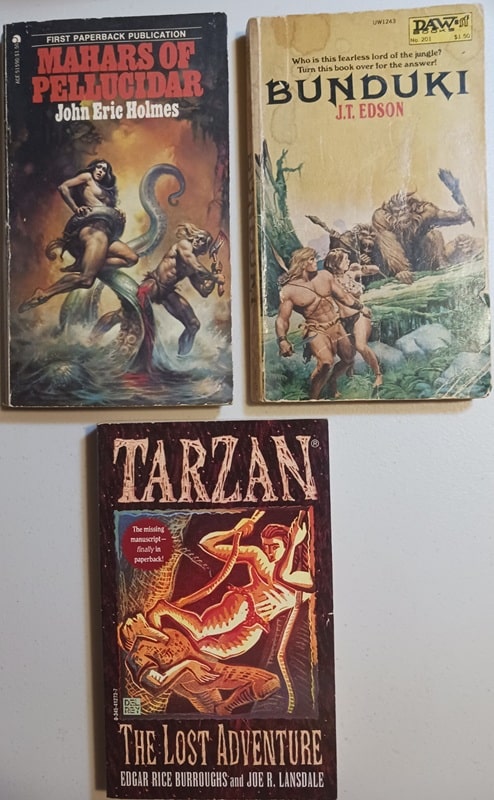 Mahars of Pellucidar by John Eric Holmes (Ace, 1976), Bunduki by J.T. Edson (DAW, April 1975), and Tarzan: The Lost Adventure, by Edgar Rice Burroughs and Joe R. Lansdale (Del Rey, June 1997). Covers by Boris Vallejo, Michael Whelan, and Raymond Verdaguer
Mahars of Pellucidar by John Eric Holmes (Ace, 1976), Bunduki by J.T. Edson (DAW, April 1975), and Tarzan: The Lost Adventure, by Edgar Rice Burroughs and Joe R. Lansdale (Del Rey, June 1997). Covers by Boris Vallejo, Michael Whelan, and Raymond Verdaguer
The other books I have shown above with Mahars is Joe Lansdale’s (1951-) fleshed out Tarzan novel Tarzan: The Lost Adventure, which he wrote from a long outline found in ERB’s effects after his death. It’s not quite a pastiche. Nor is it my favorite book from Lansdale, who has written many truly wonderful works. This is from Del Rey, first published in 1995. The cover is by Raymond Verdaguer. I’m sure this is perfectly competent work of art but it didn’t do much for me, and I don’t understand why they didn’t use one of the artists who did the great interior sketches, such as Gary Gianni or Michael Kaluta.
The last pastiche shown here is Bunduki, by J. T. Edson (1928 – 2014), cover by Michael Whelan. It features Tarzan’s adopted son and adopted granddaughter (Bunduki and Dawn). It throws us right into a mystery. Bunduki wakes up in a tree in a tropical jungle, but it isn’t Africa. He’s amazed since he was in a Land Rover that ran over a cliff and should have been dead. Dawn was with him but is missing. It turns out that the two have been mysteriously transported to another world, which turns out to be a counter-earth (opposite our Earth) called Zillikian. This makes it essentially a Sword & Planet novel, although pretty light on the sword part.
Edson wrote three approved novels of Bunduki and a fourth one and some short stories that were not approved by the ERB heirs. I’ve only read the first one but the complete series is:
1. Bunduki, 1975
2. Bunduki and Dawn, 1976
3. Sacrifice for the Quagga God, 1976
4. Fearless Master of the Jungle, 1980
Edson had written a partial fifth novel called Amazons of Zillikian, which was published in 2023. I’ve never seen it. Edson, a British author, was best known for his westerns, particularly a very long series about the Floating Outfit, which ran to 66 books. I’ve read one of those, which was rather intriguing since it involved Cowboys and Aliens.
I might have picked up the other Bunduki books but they are exceedingly expensive in paperback. They are cheap for the Kindle but I’ve got way too many books on Kindle already.
Previous installments in this series include:
The Fiction of Edgar Rice Burroughs, Part I: Sword and Planet
The Fiction of Edgar Rice Burroughs, Part II: Tarzan and The Land That Time Forgot
The Fiction of Edgar Rice Burroughs, Part III: The Westerns and The Mucker
Charles Gramlich administers The Swords & Planet League group on Facebook, where this post first appeared. His last article for Black Gate was The Fiction of Edgar Rice Burroughs, Part III: The Westerns and The Mucker.
Goth Chick News: Getting Our Heavy Metal Back…
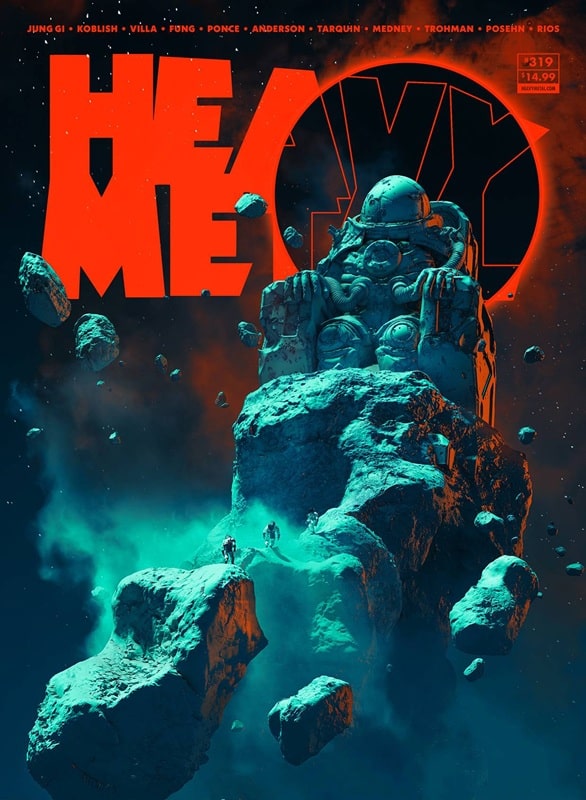 Heavy Metal #319, the penultimate issue of the original run (November 2022). Cover by Pascal Blanche
Heavy Metal #319, the penultimate issue of the original run (November 2022). Cover by Pascal Blanche
Okay, strictly speaking, this topic doesn’t fall into a standard (notice I didn’t say “normal”) Goth Chick category. But bear with me for a short story.
A long time ago in a small midwestern town far, far away, I experienced my first hardcore crush. The subject in question was not only tantalizingly a few years older than me but he was decidedly gothy in a dark-warrior kind of way. Therefore, in my youthful opinion, he was perfection on two feet. That same year as I was sitting cross-legged on the floor of my local bookstore my eyes fell on an issue of Heavy Metal magazine where low and behold was my crush, or someone who looked darn close, personified in all his brooding magicalness, right there on the cover. That day my allowance went to my first issue of Heavy Metal and though I was a rabid fan for years afterward, I admittedly became hit and miss, buying only sporadic issues throughout the 2000’s.
Heavy Metal magazine, which had been in constant publication since 1977, printed its last issue in 2022 after a series of attempts to keep it viable, and an era came to an end.
Until now.
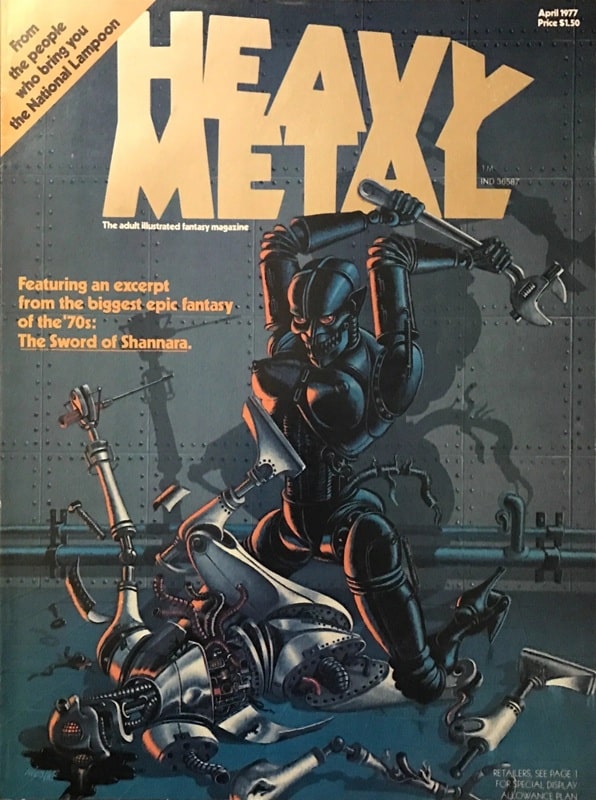 Heavy Metal issue #1, April 1977. Cover by Jean-Michel Nicollet
Heavy Metal issue #1, April 1977. Cover by Jean-Michel Nicollet
Before we get to that, let’s back up for some history.
Heavy Metal debuted in April 1977, bringing avant-garde European comic art and adult-oriented storytelling to American readers. Inspired by the French magazine Métal Hurlant (“Screaming Metal”), Heavy Metal was launched by Leonard Mogel, who licensed the rights to translate and publish content from its French counterpart. The magazine quickly distinguished itself with its blend of science fiction, fantasy, horror, and erotica, rendered in fantastic artwork and experimental narratives.
In its heyday, the contributors to Heavy Metal included legendary artists like Moebius, H.R. Giger, and Philippe Druillet, alongside American talents such as Richard Corben. Heavy Metal became the go-to publication for visionary creators, showcasing serialized stories, one-shot comics, and memorable (and boy were they memorable) covers that pushed boundaries all over the place.
 Heavy Metal #1 (April 30, 2025). Cover by Greg Hildebrandt
Heavy Metal #1 (April 30, 2025). Cover by Greg Hildebrandt
The magazine reached a broader audience with the release of the cult animated film Heavy Metal (1981), an anthology of shorts inspired by its comics and featuring a soundtrack of iconic rock and metal bands. This cemented its reputation as a cultural touchstone for fans of both countercultural comics and rock music.
Over the years, Heavy Metal evolved under various editors and owners, including Kevin Eastman, co-creator of Teenage Mutant Ninja Turtles. In January 2014, its ownership transitioned to digital and music veteran David Boxenbaum and film producer Jeff Krelitz. Eastman, though stepping back from majority control, remained as publisher until 2020 and retained a minority stake in the magazine under Heavy Metal Media, LLC.
In early 2020 CEO Matthew Medney and “Creative Overlord” David Erwin (formerly of DC Entertainment) took the helm. They launched new publishing initiatives, Virus and Magma Comix, though neither gained much traction. In 2021, Heavy Metal celebrated its 300th issue, featuring work by legendary artists and tributes to its cultural impact.
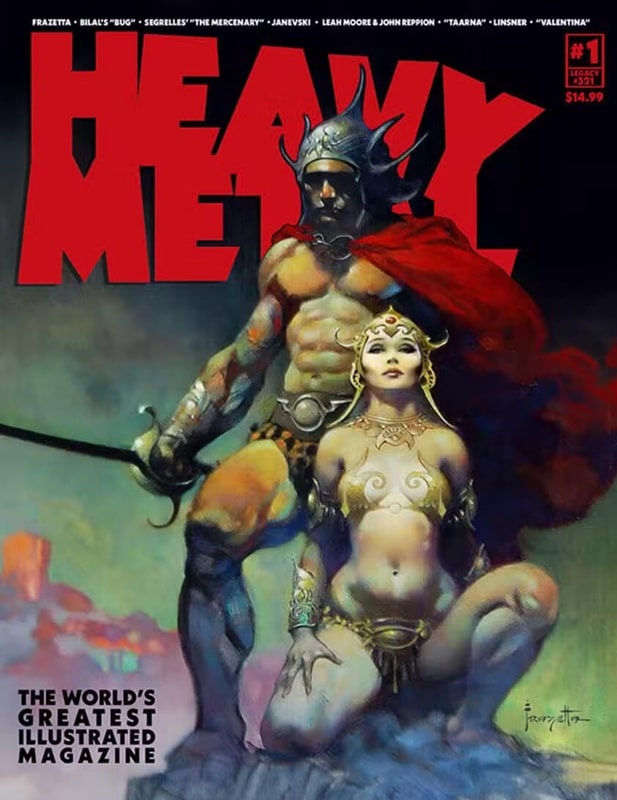 Heavy Metal #1, Sword & Sorcery variant (April 30, 2025). Cover by Frazetta.
Heavy Metal #1, Sword & Sorcery variant (April 30, 2025). Cover by Frazetta.
Financial struggles loomed, leading to a partnership with Whatnot Publishing in 2022 to produce future issues. However, cash flow problems forced Heavy Metal to cease publication in December 2022, ending its continuous run since 1977. Despite efforts to revive operations and fulfill obligations, only one additional issue was produced, and the magazine was officially canceled in mid-2023.
Which brings us to today.
In October 2024, Heavy Metal International, LLC announced a relaunch planned for 2025, backed by a Kickstarter campaign to fund it. The campaign had a modest $5000 goal but nearly 11,000 fans proceeded to blow that right out of the water and contributed a whopping $781K. HMI put together this short video announcing the comeback of the magazine so check it.
Heavy Metal magazine (new) issue 1 is set to drop in April in stores, and the magazine’s website indicates that subscriptions to the new version will be available there soon. I’m definitely going to give this a look when it hits shelves to see if Heavy Metal was a point in time, or if it can be successful in this era.
Thoughts?
Following in the Steps of Robert E. Howard: The Eye of Sounnu by Schuyler Hernstrom
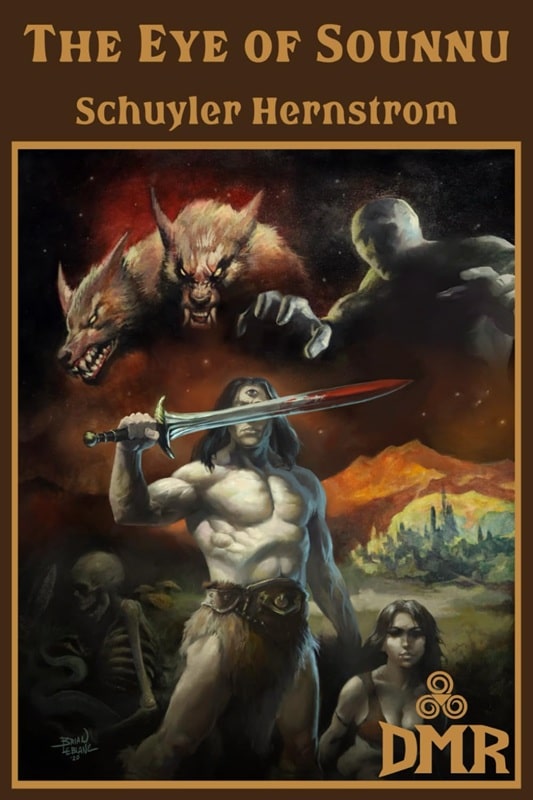
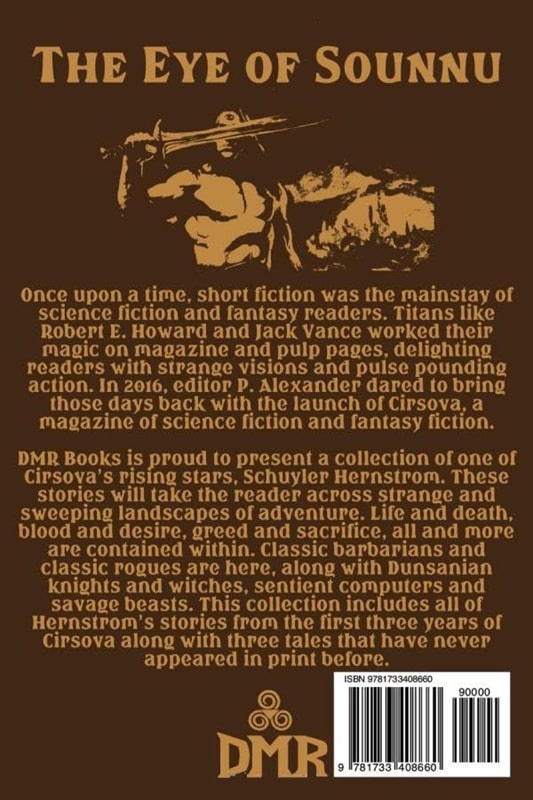
The Eye of Sounnu (DMR Books, May 3, 2020)
The concept of barbarism vs. civilization is a topic that Robert E. Howard often explored in his incredibly crafted fiction. Other authors, many inspired by Howard, have explored the concept through their own creations.
Notable among these is modern sword-and-sorcery author Schuyler Hernstrom, whose collection of short stories, The Eye of Sounnu, was published by DMR Books. The collection contains a wonderful story called “Mortu and Kyrus in the White City,” which features northland, pagan barbarian (Mortu) and his learned companion (Kryus), a monotheistic monk who suffers a curse and now lives in the body of a monkey — but that does not preclude him from waxing philosophically about the world and mankind’s place in it.
There was an exchange between the two that I recently read, and I had to reread it, and then reread it again, because I enjoyed it so much, so I share it here, for my friends of similar interests.
(This takes place shortly after the two arrived in “the White City.”)
Mortu whispered to his friend. “How old do you reckon she is?”
Kyrus shrugged. “Perhaps thirty-five, forty? Forty-five at the oldest.”
“Everyone here, the men and the women, all seem to be the same age save Nathia and the (two) children. Where are the families? Where are the elderly?”
“In mankind’s long history, many people have struck off in order to found their idea of a utopia. I suspect the denizens of the White City are such a group. All those that turn away from society in such a way meet a similar fate, gradual disillusionment and dissolution.”
“Utopia?”
Kyrus’ tone became pedantic. “A perfect society.”
Mortu scoffed. “There is such a place, the north, where my people live as the gods intended.”
“My young friend, once again the essential concepts escape your grasp, like eels slipping from your thick fingers. While you may wrongly believe the savages that raised you to be of a perfect society, I refer to man’s long dream of living without inequality or strife.”
The barbarian scoffed again. “Life is conflict. We are but wolves that walk on two legs. Build your temples, write your books, nothing will ever change.”
Lastly, I’d like to thank my friend Morgan for recommending this excellent collection a few years ago. I am enjoying it immensely.
Order copies directly from DMR’s website.
Jeffrey P. Talanian’s last article for Black Gate was Roy Thomas’ Barbarian Life. He is the creator and publisher of the Hyperborea sword-and-sorcery and weird science-fantasy RPG from North Wind Adventures. He was the co-author, with E. Gary Gygax, of the Castle Zagyg releases, including several Yggsburgh city supplements, Castle Zagyg: The East Mark Gazetteer, and Castle Zagyg: The Upper Works. Read Gabe Gybing’s interview with Jeffrey here, and follow his latest projects on Facebook and at www.hyperborea.tv.


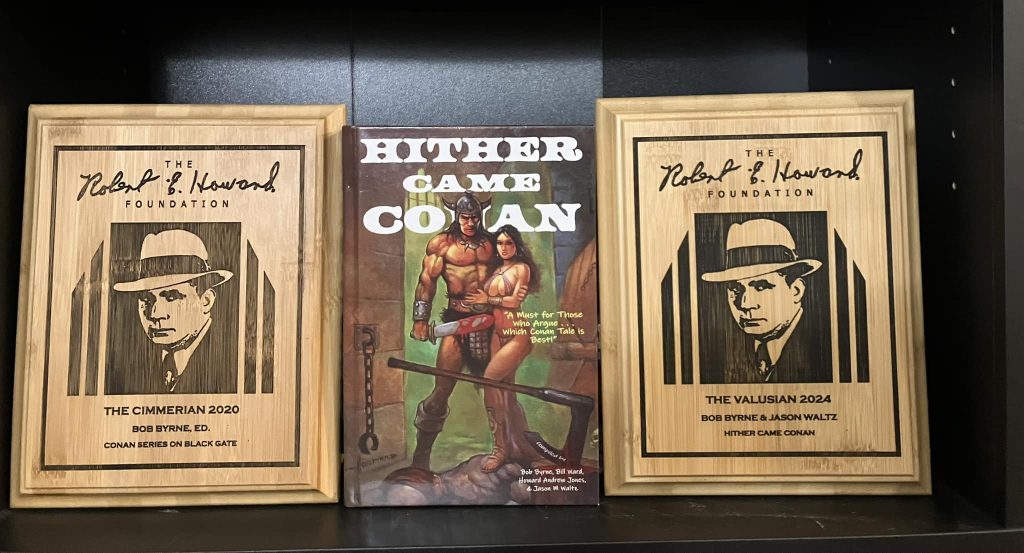

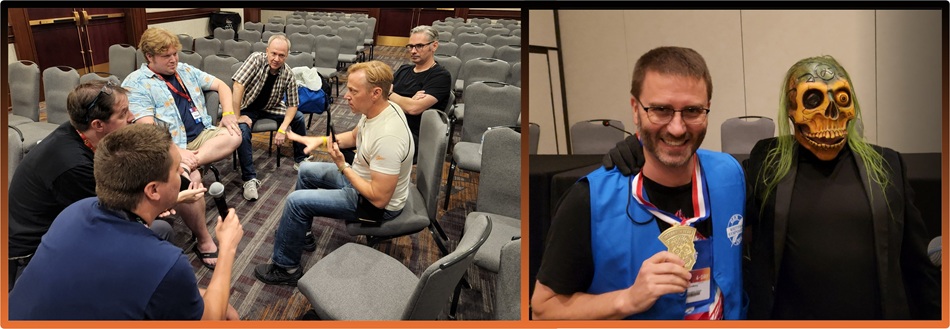
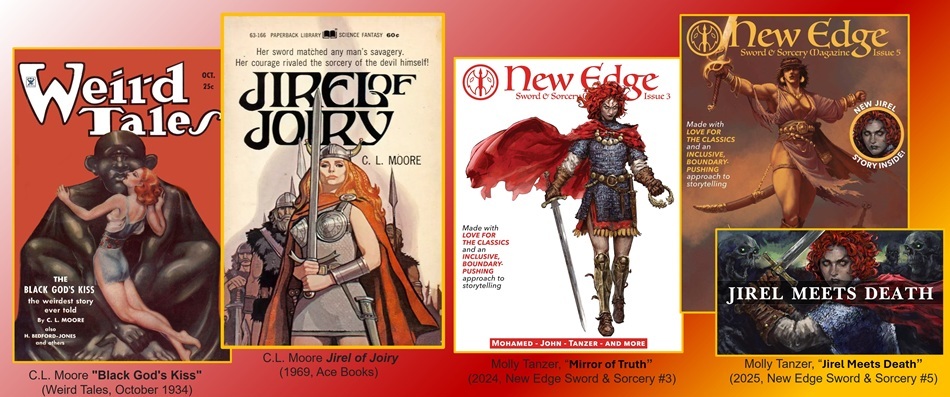




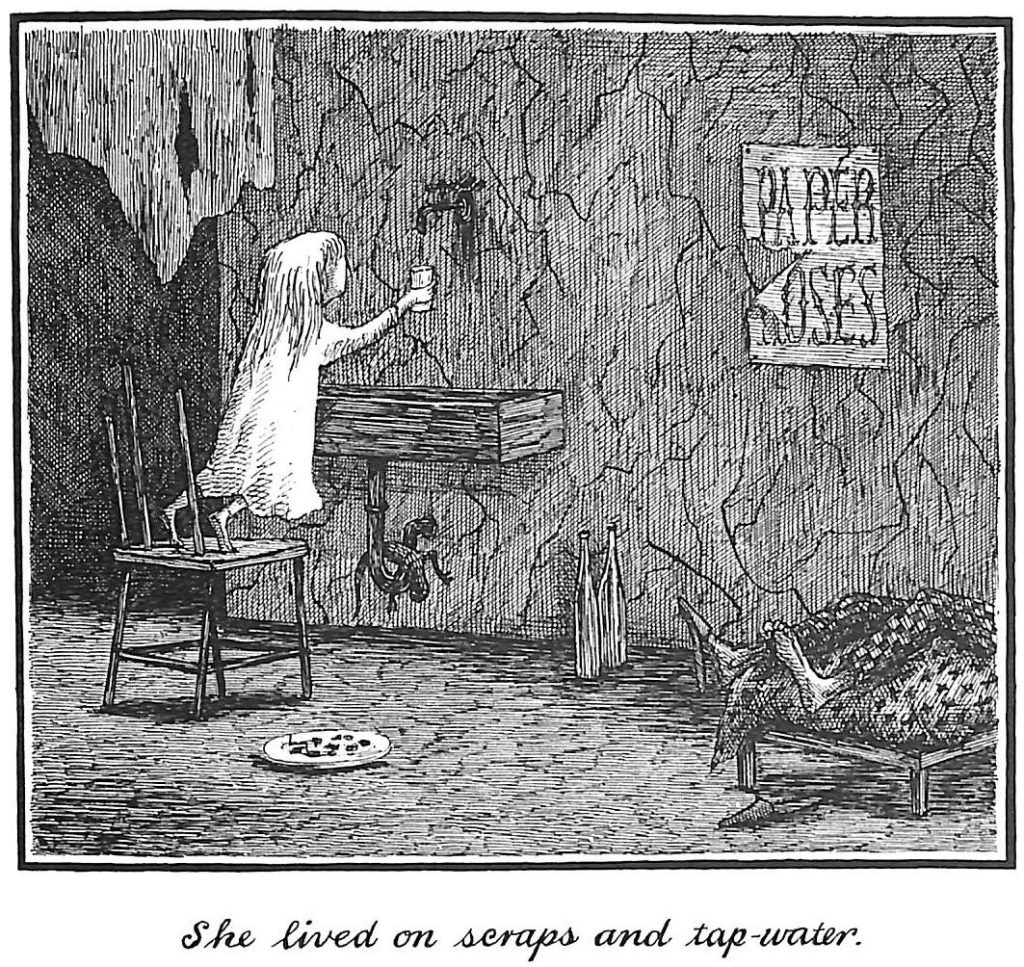
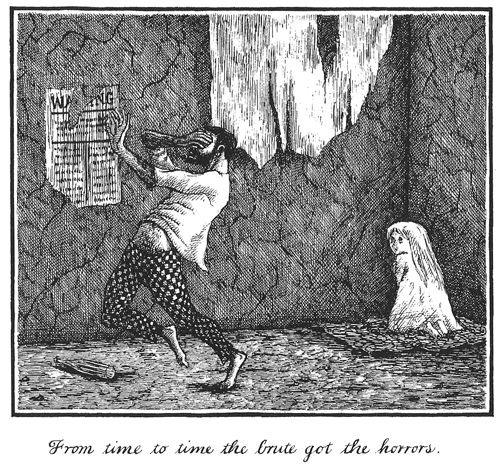

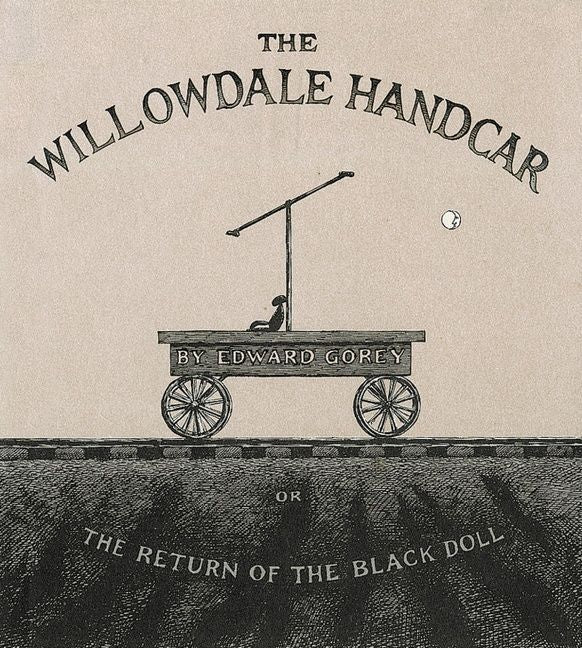
Recent comments